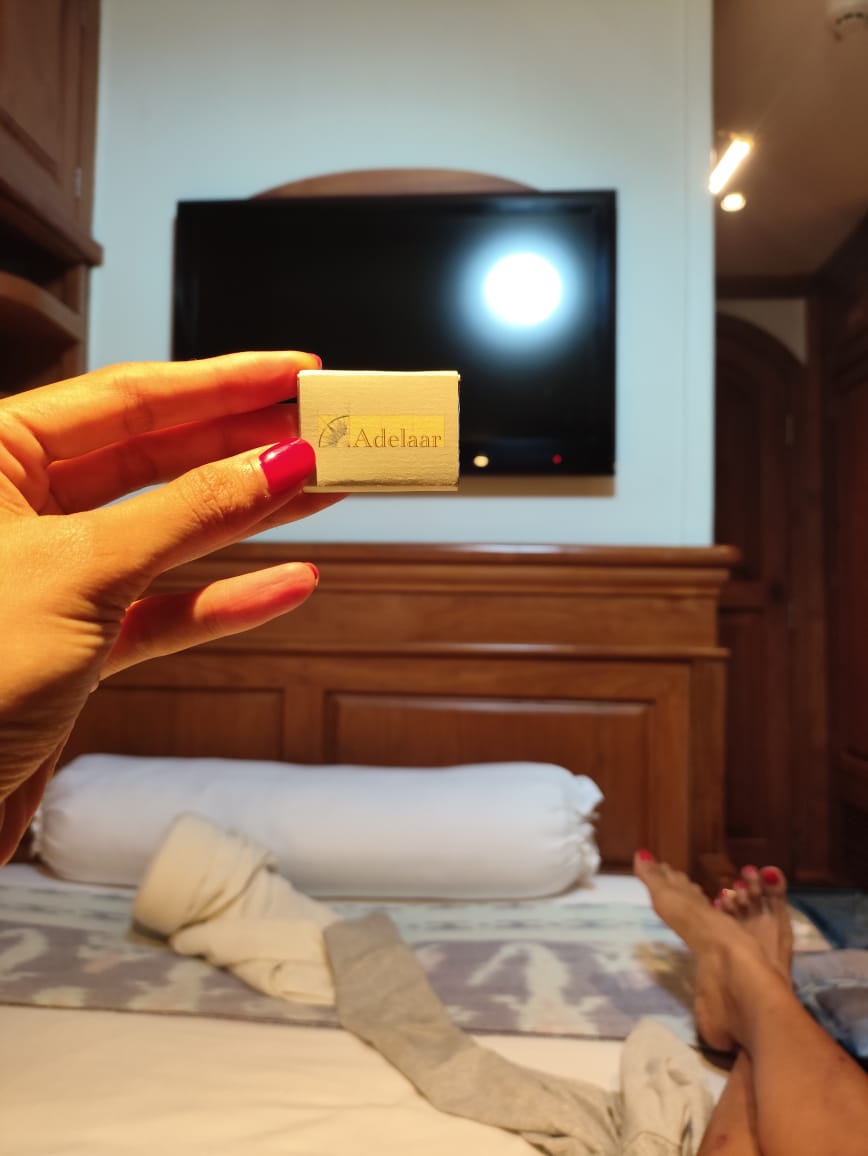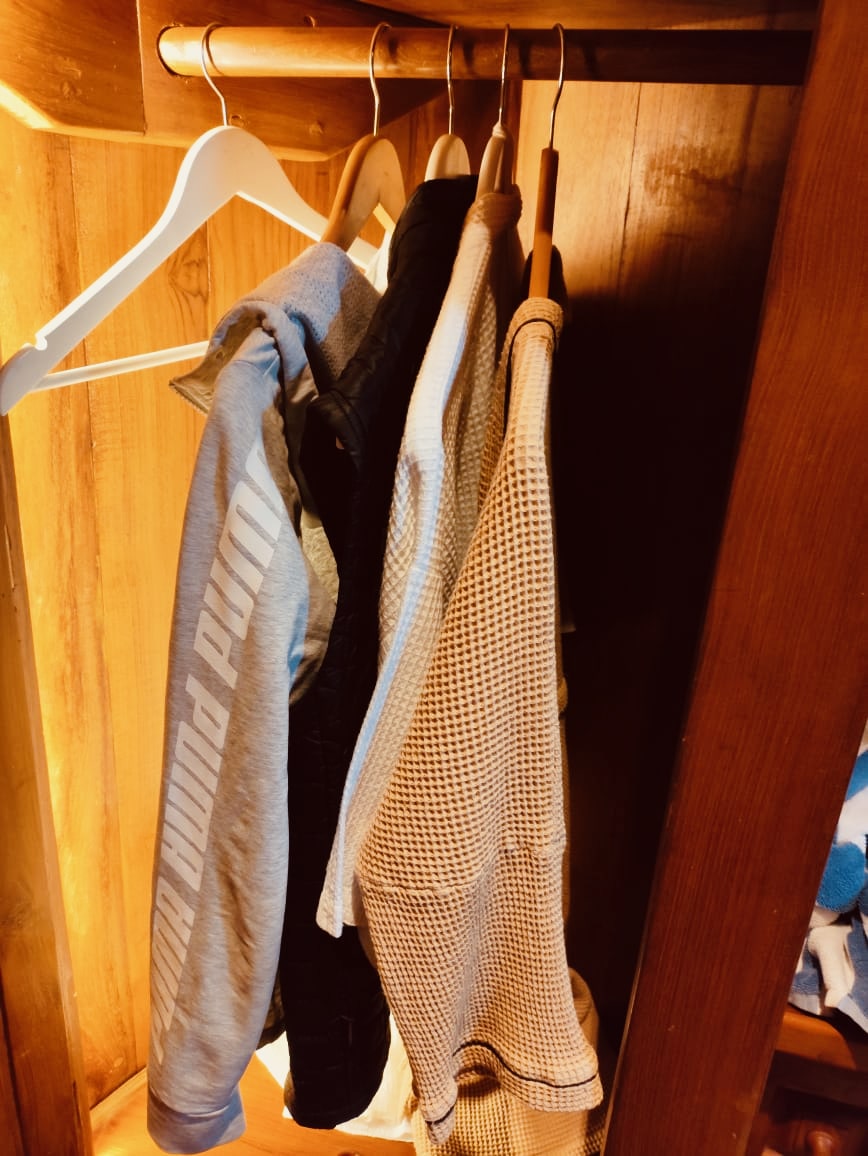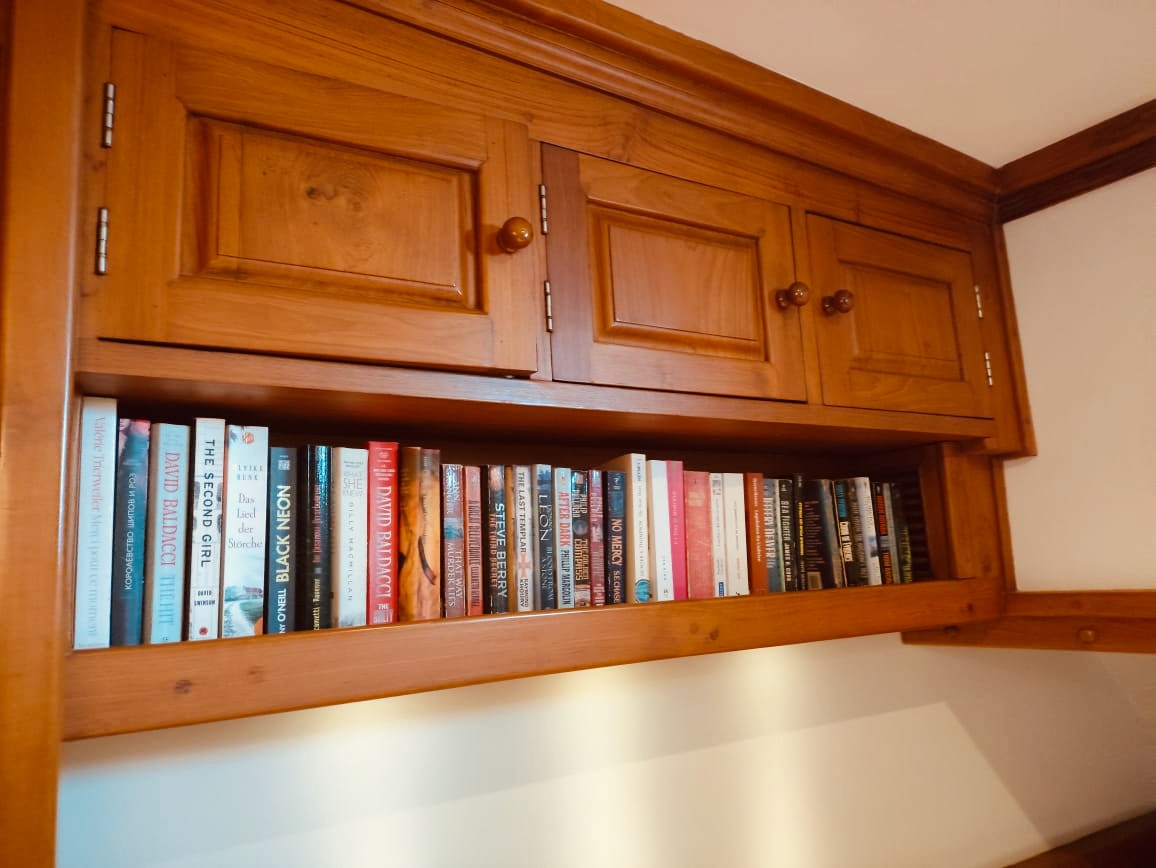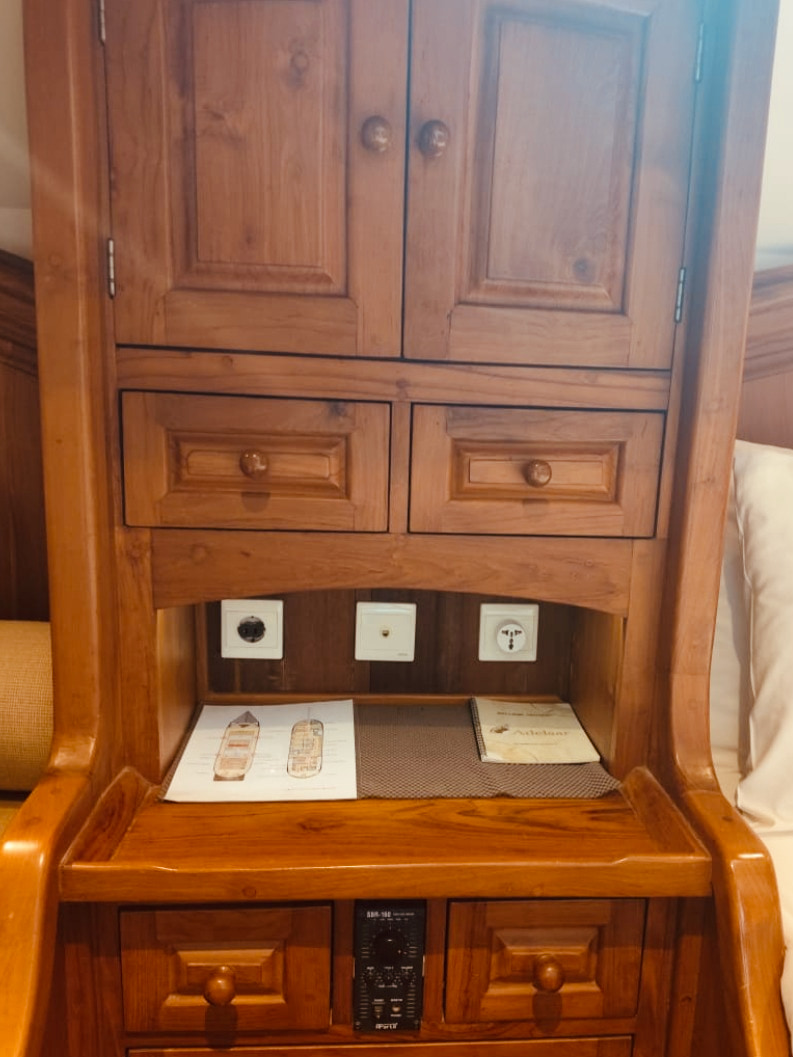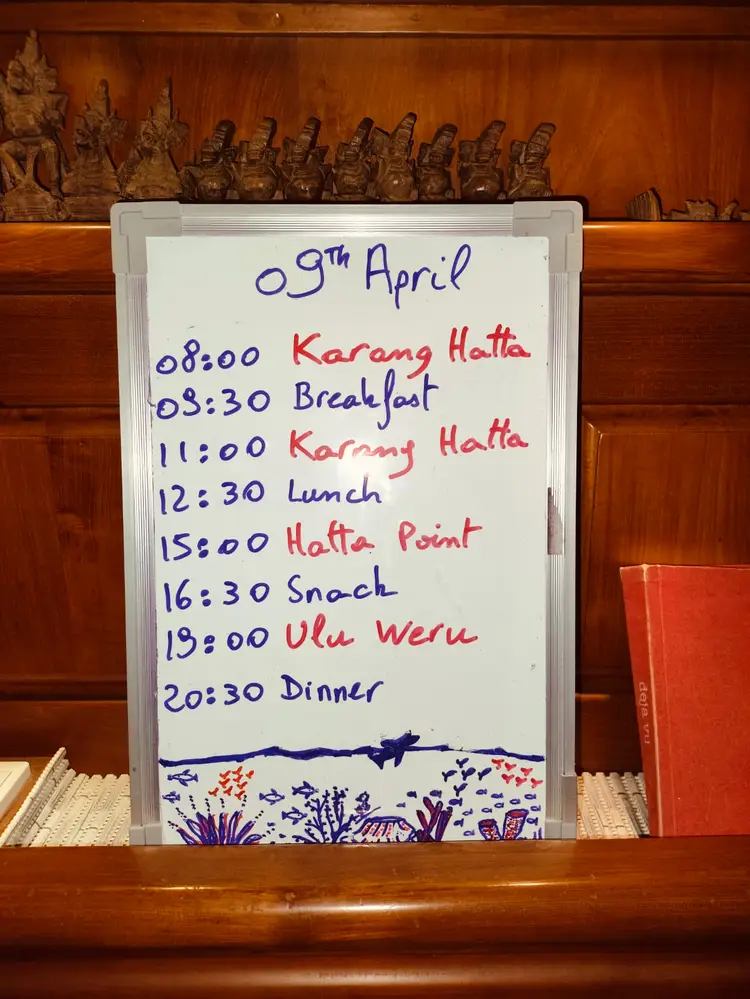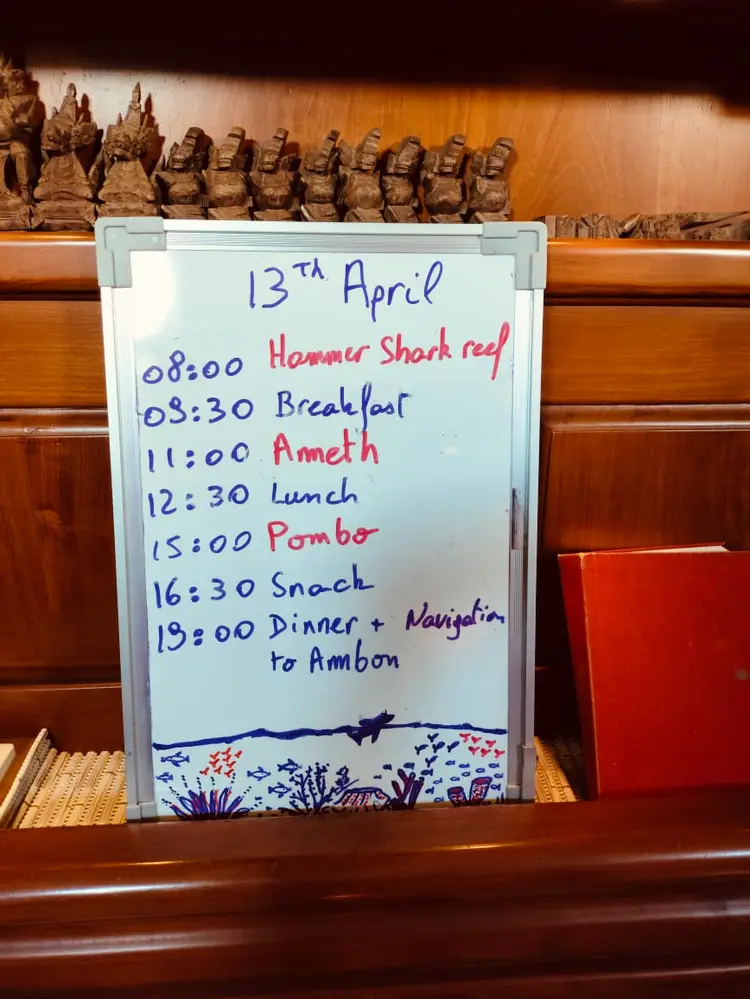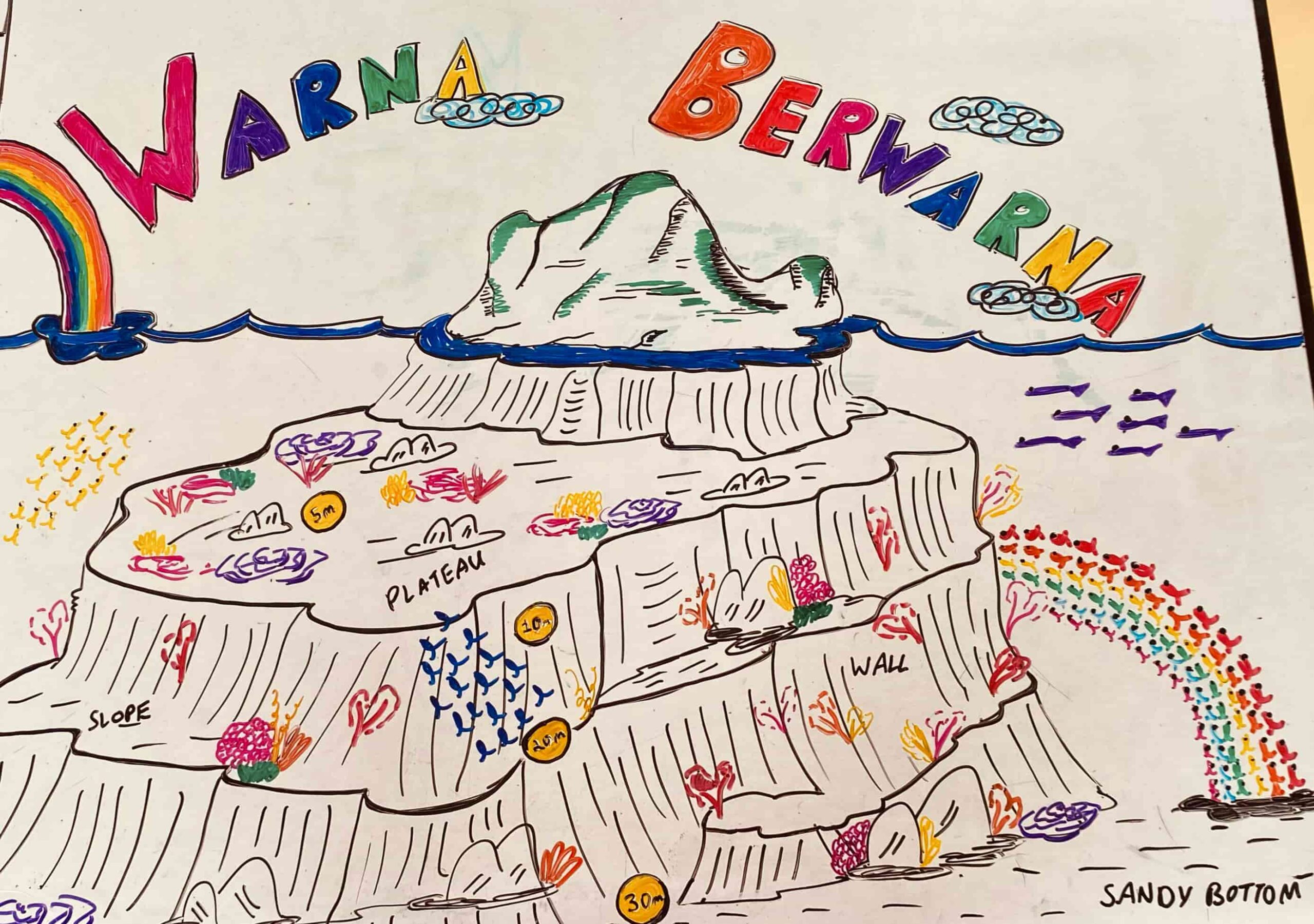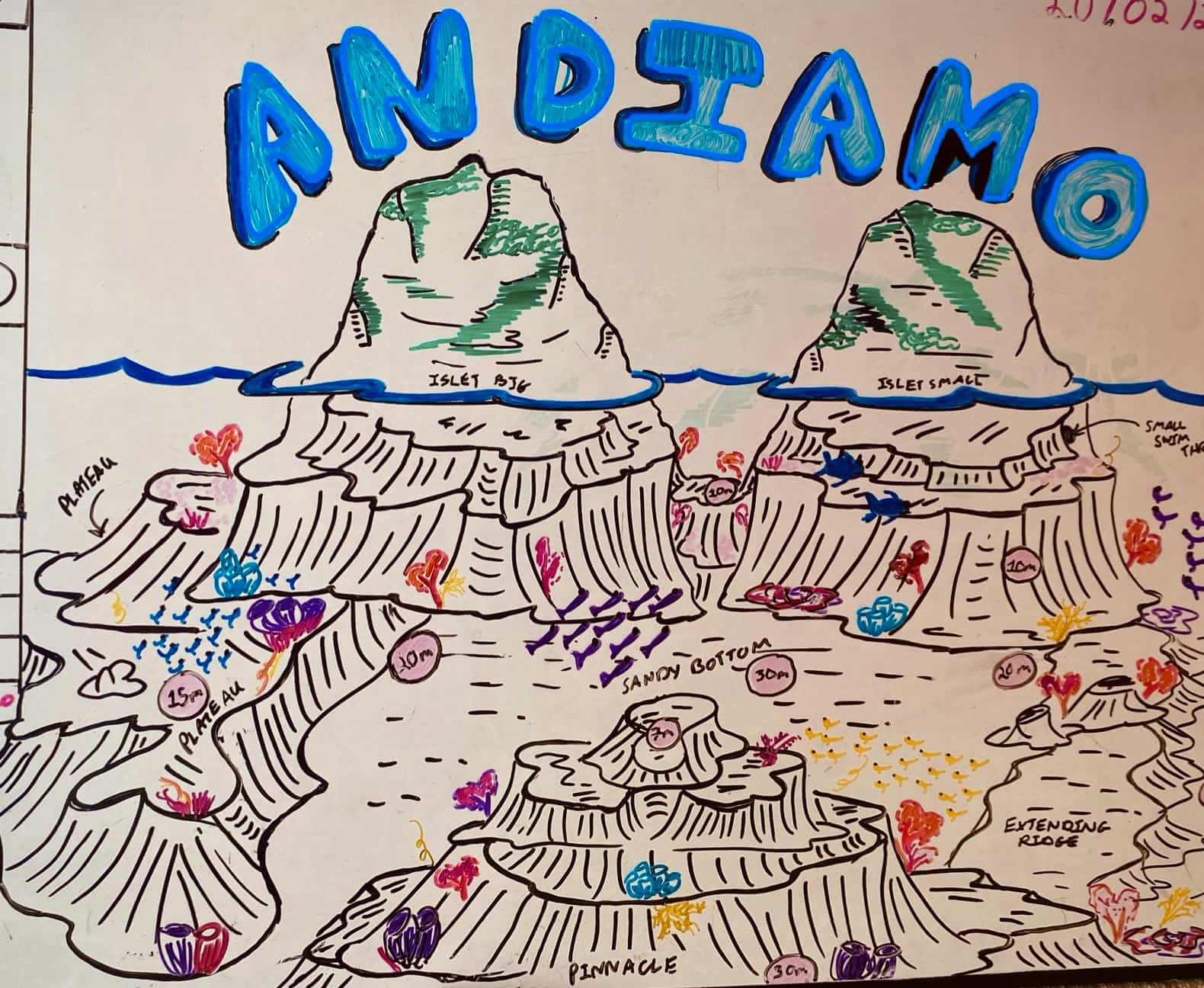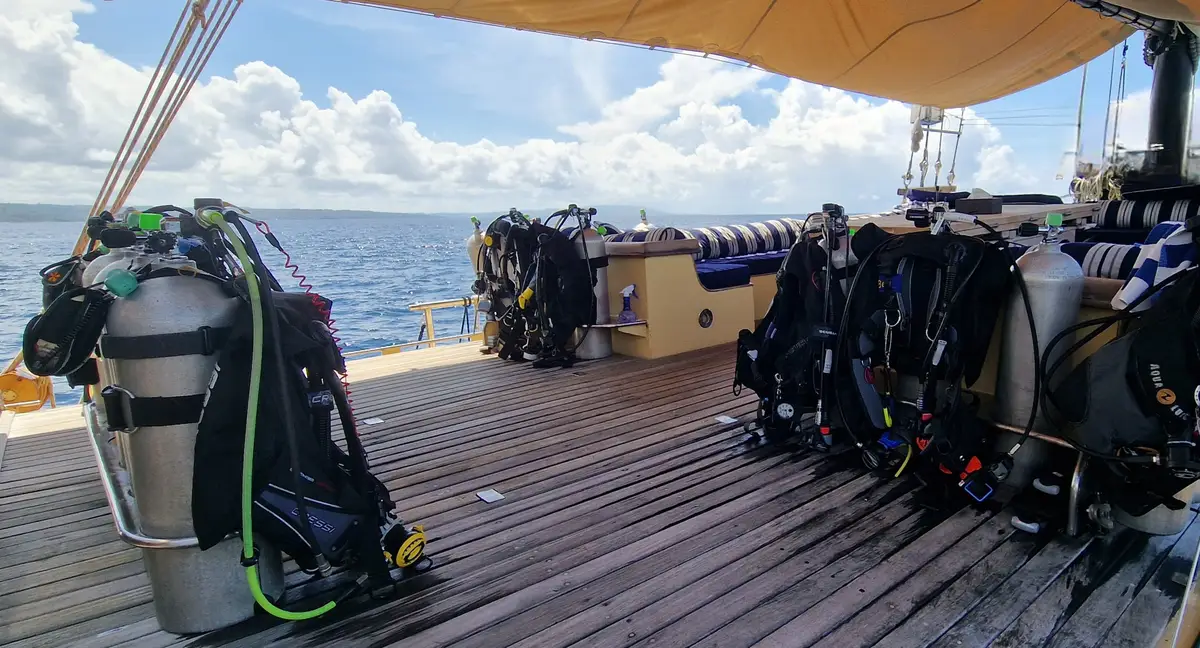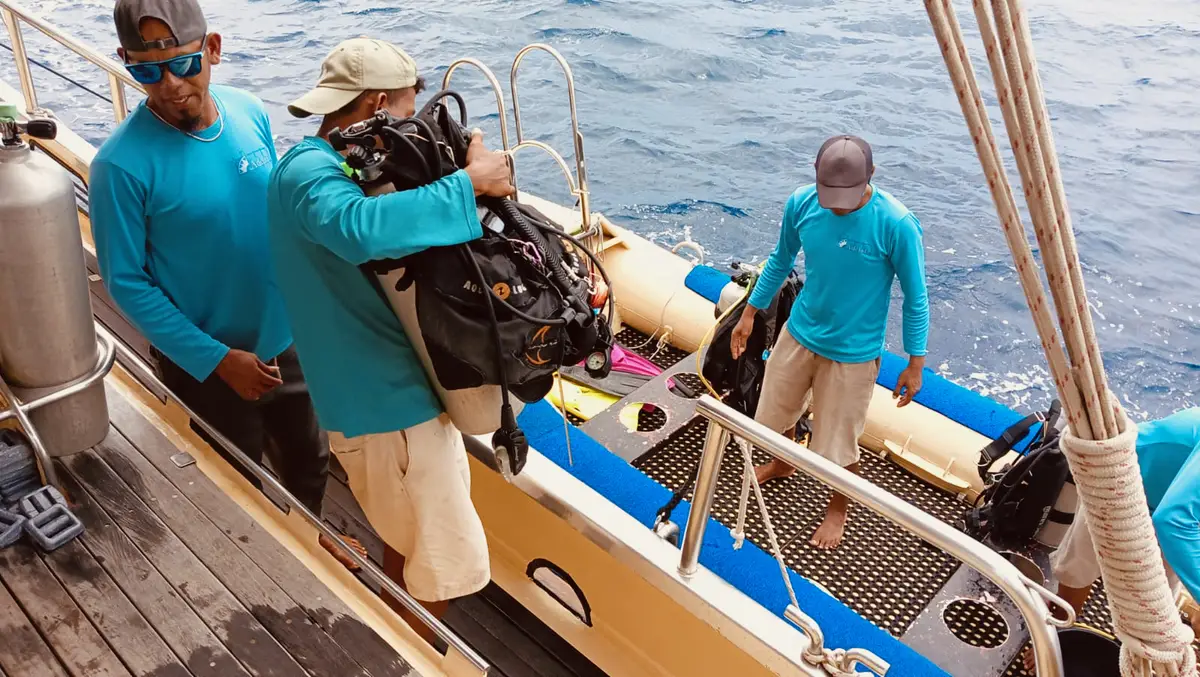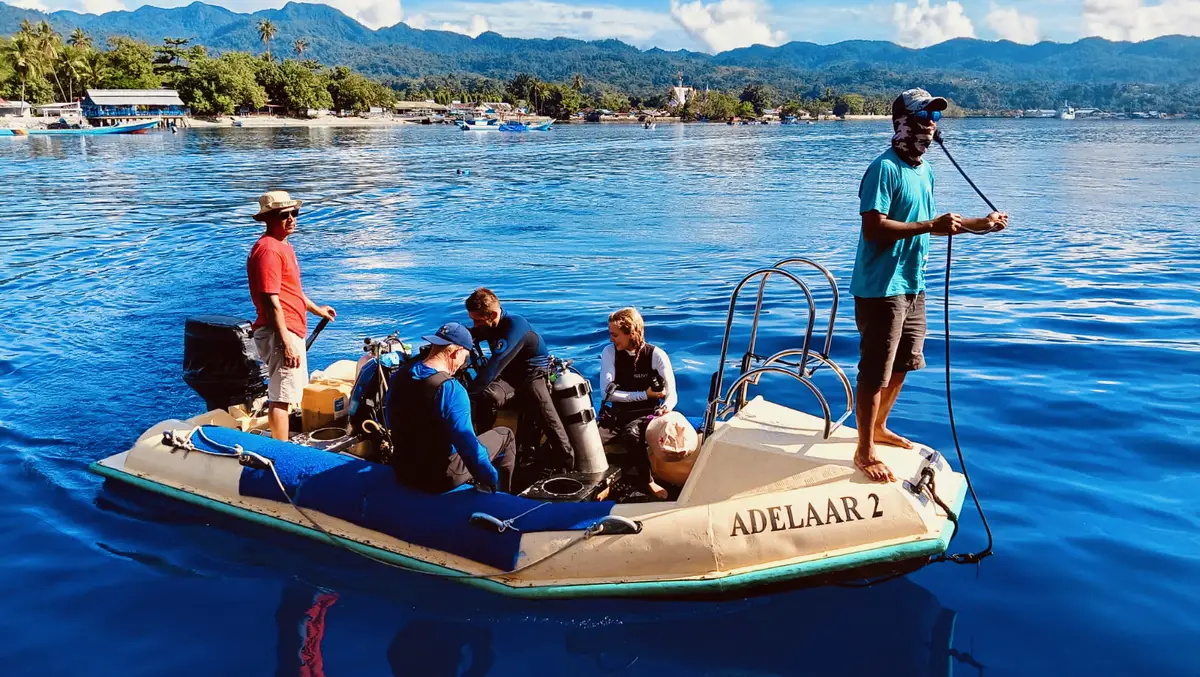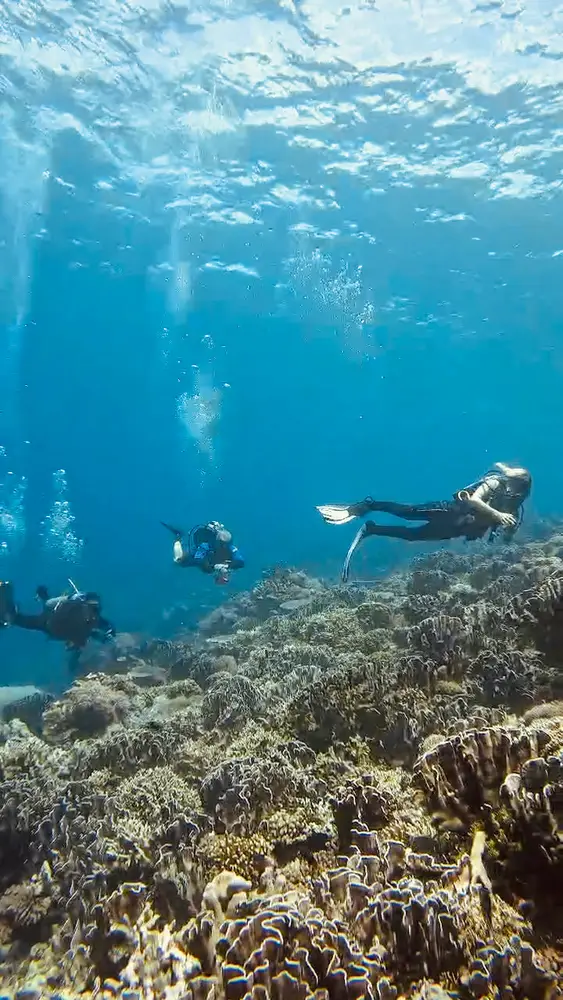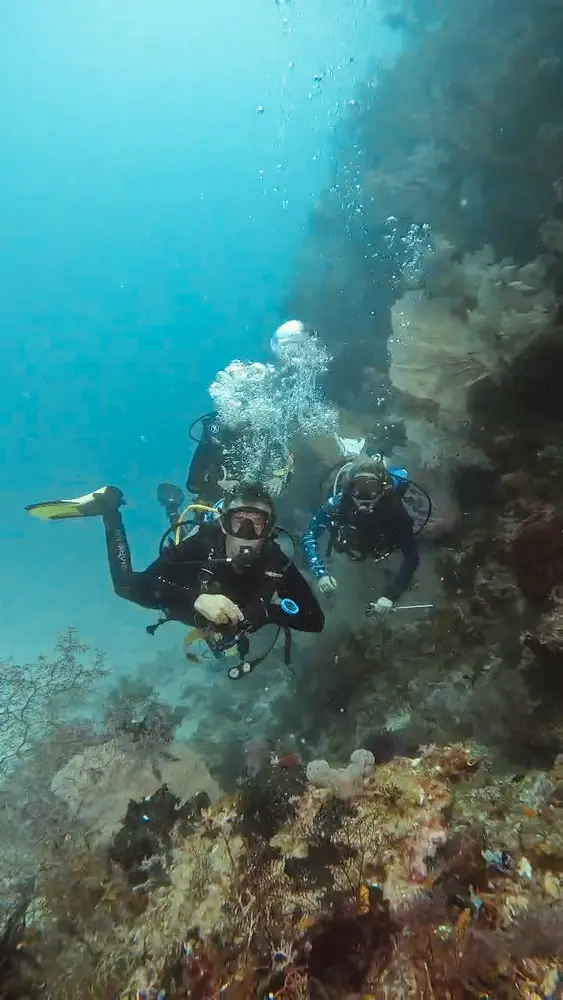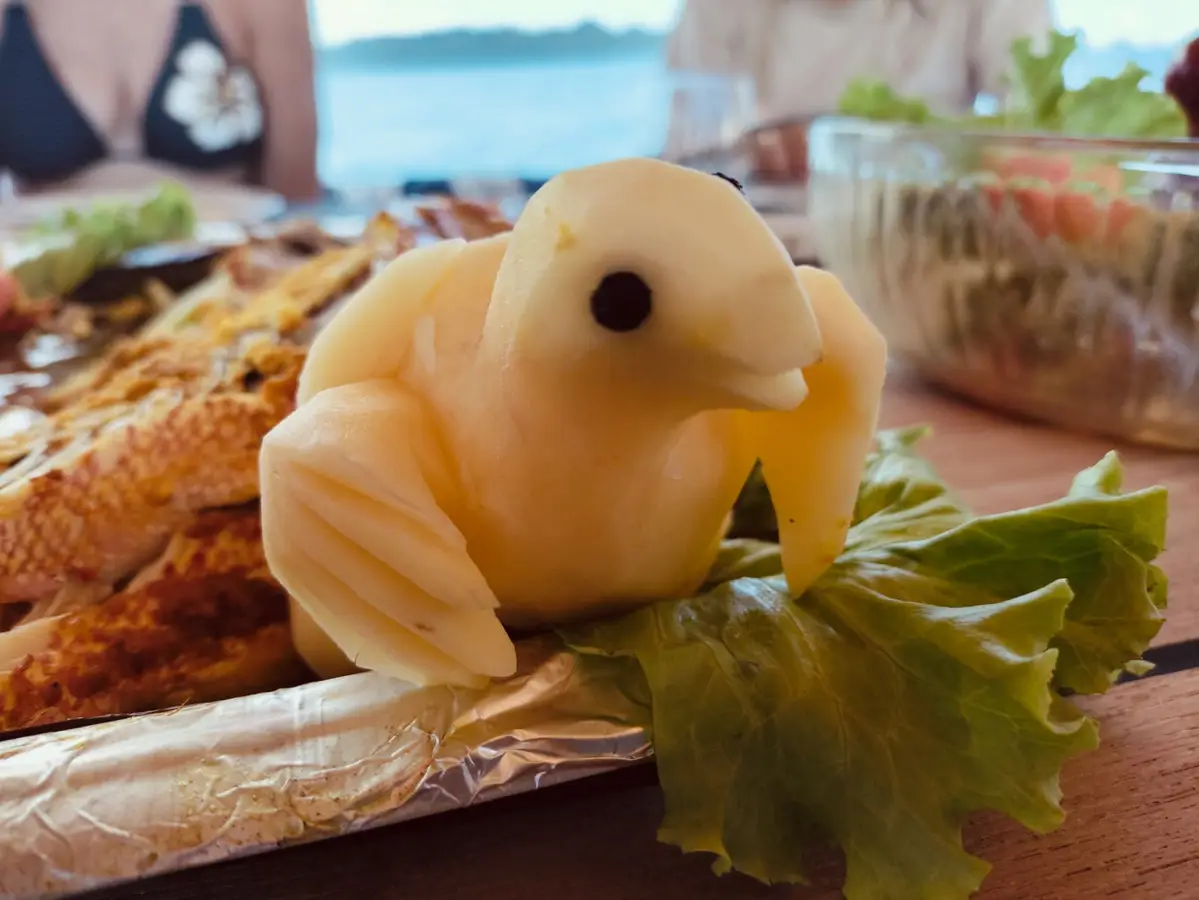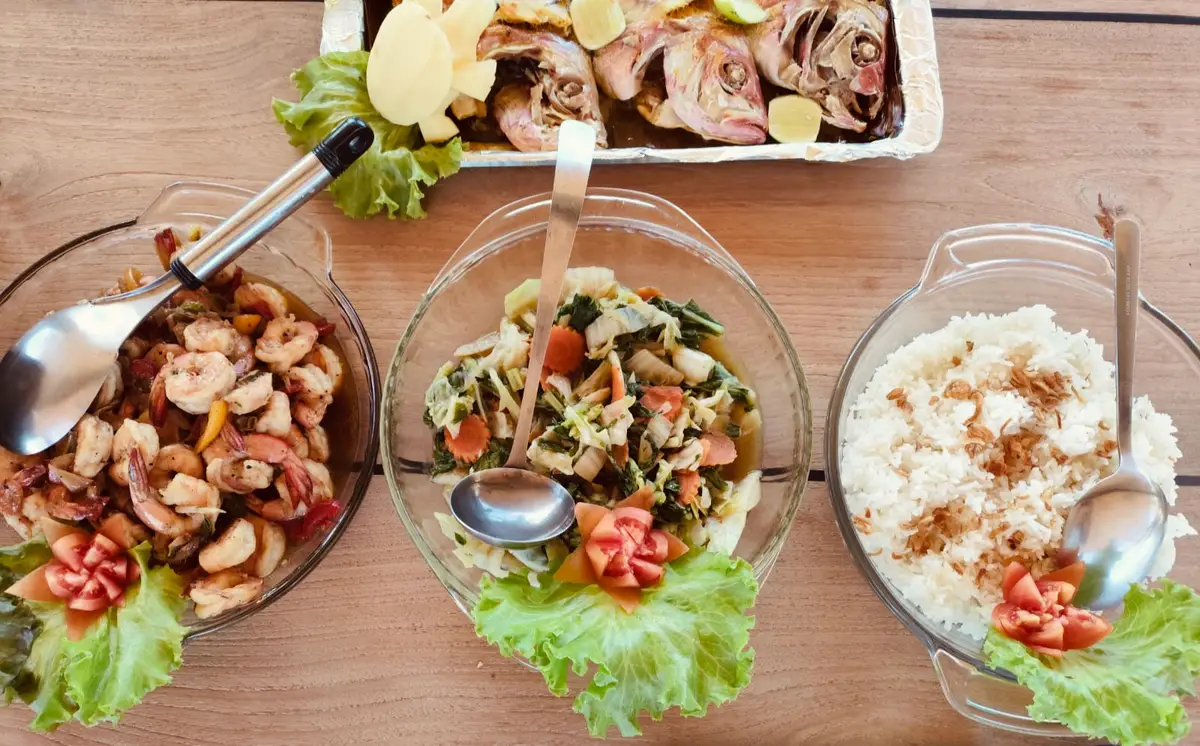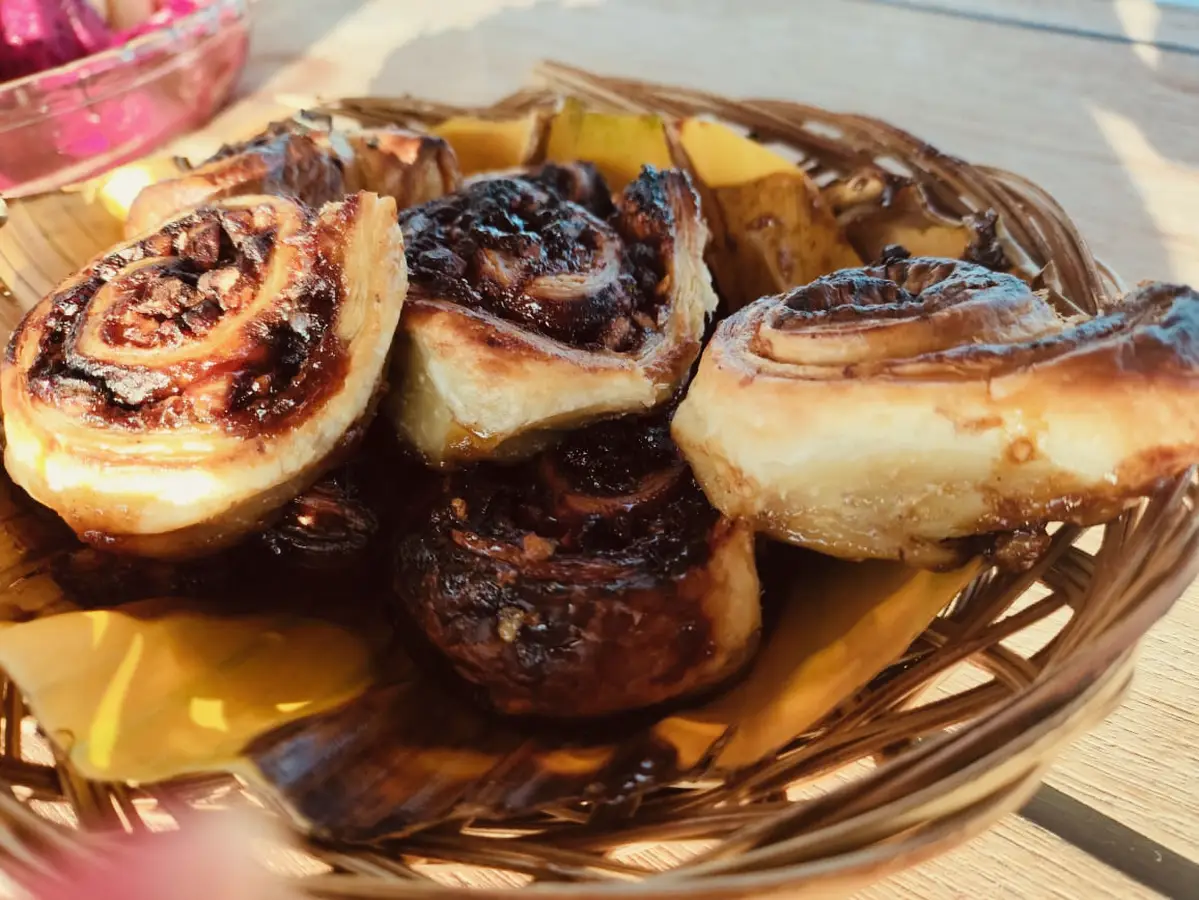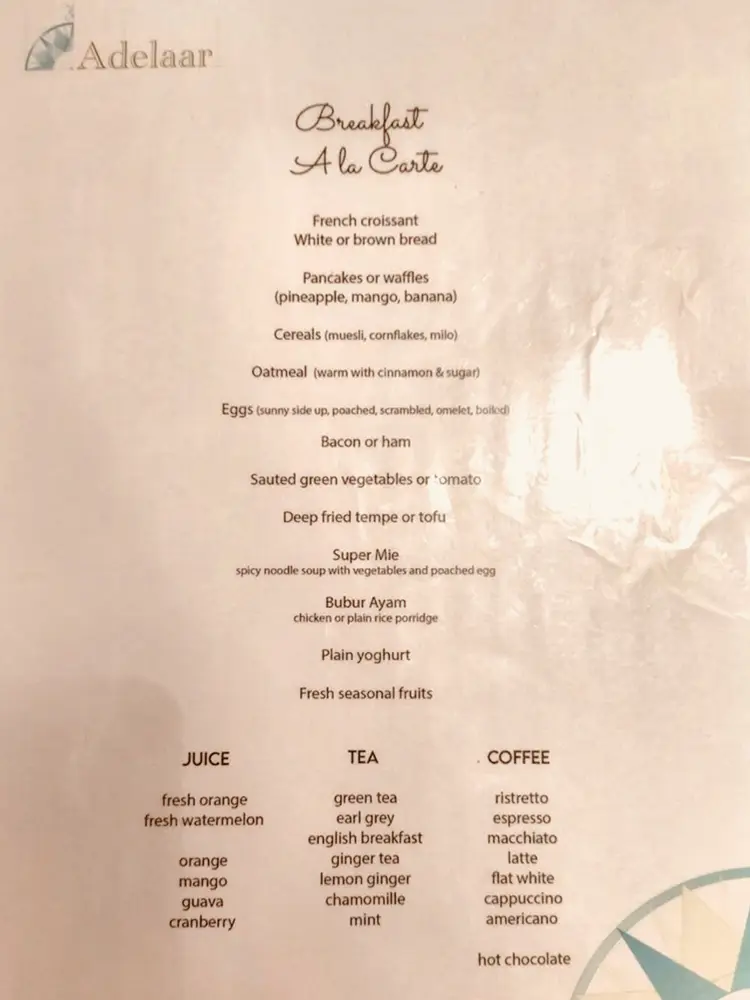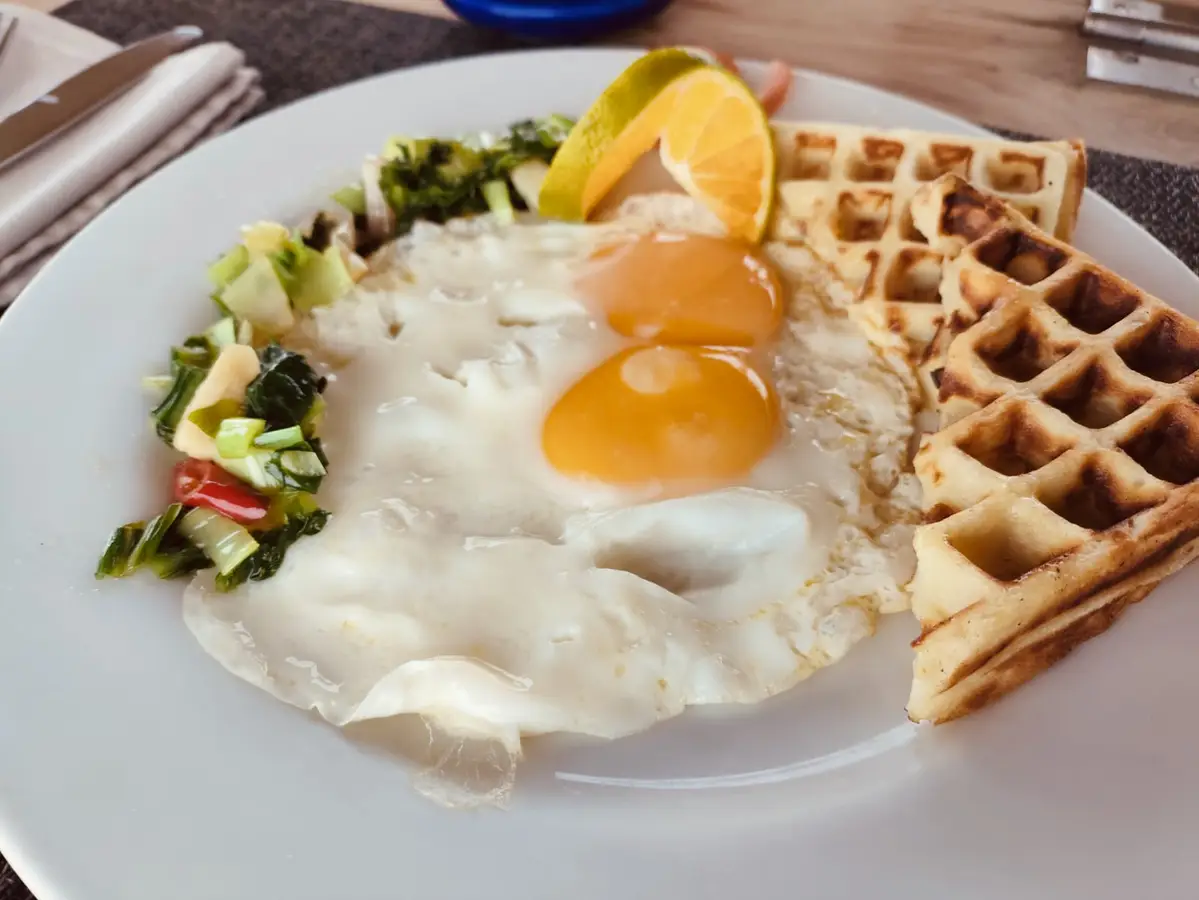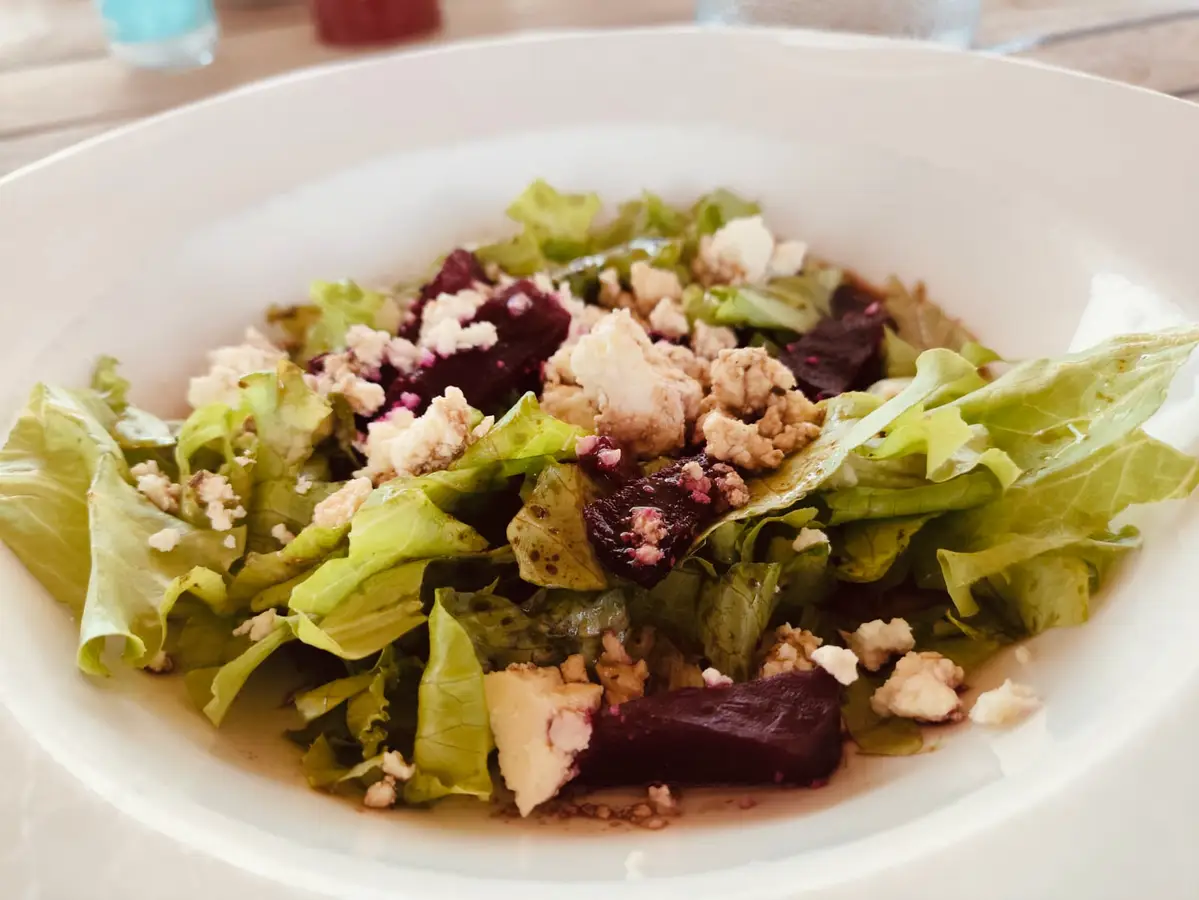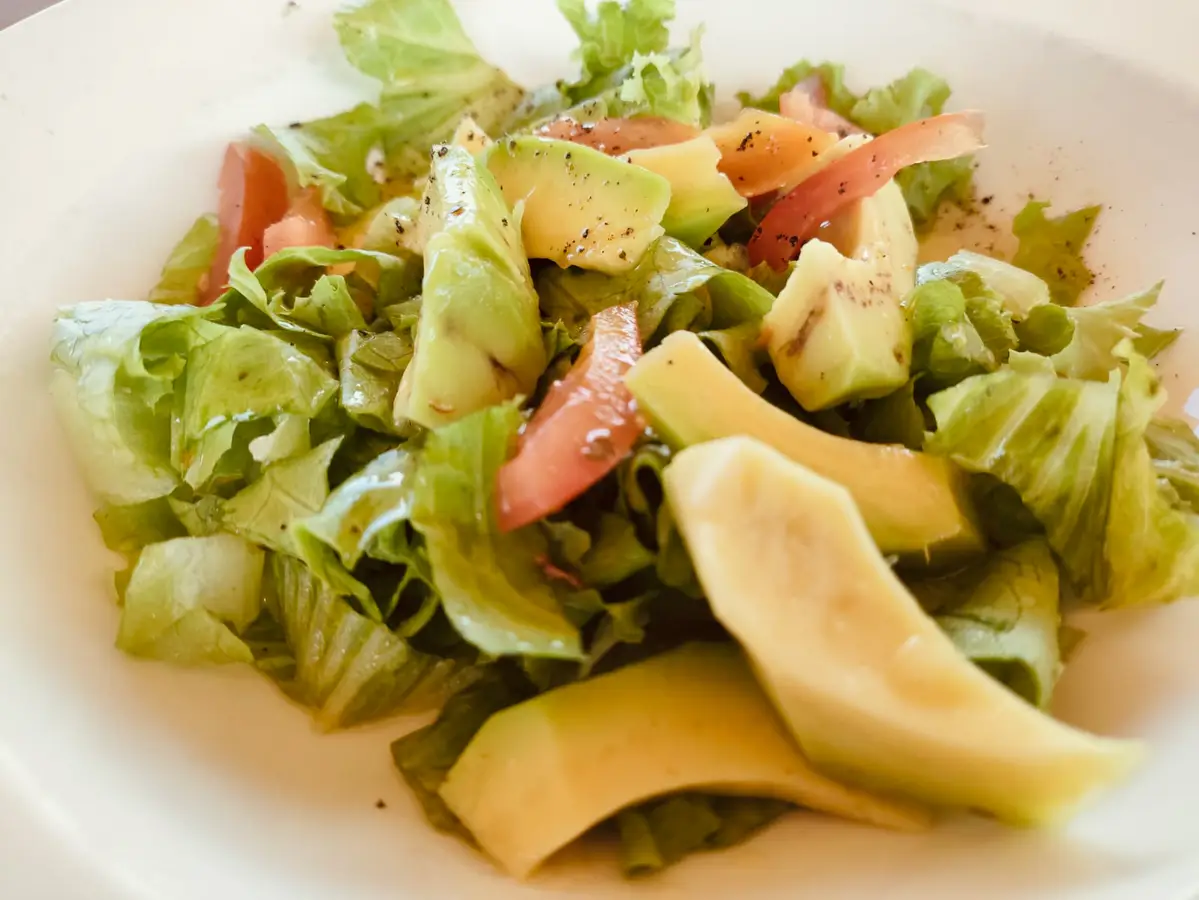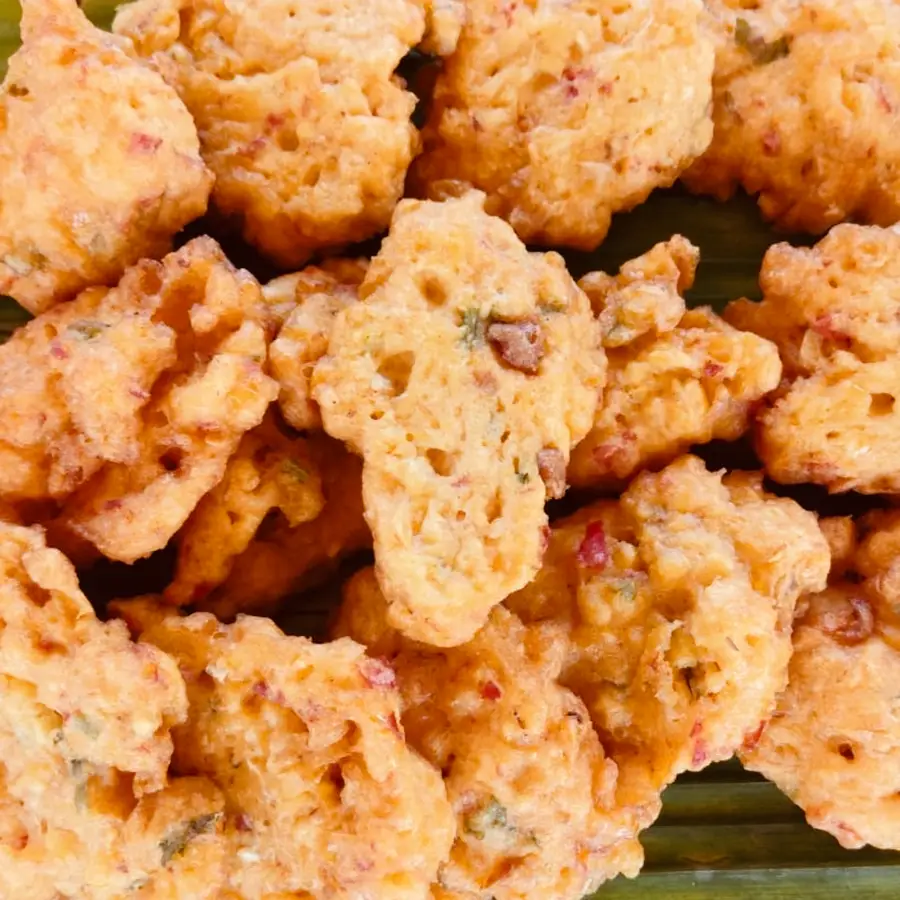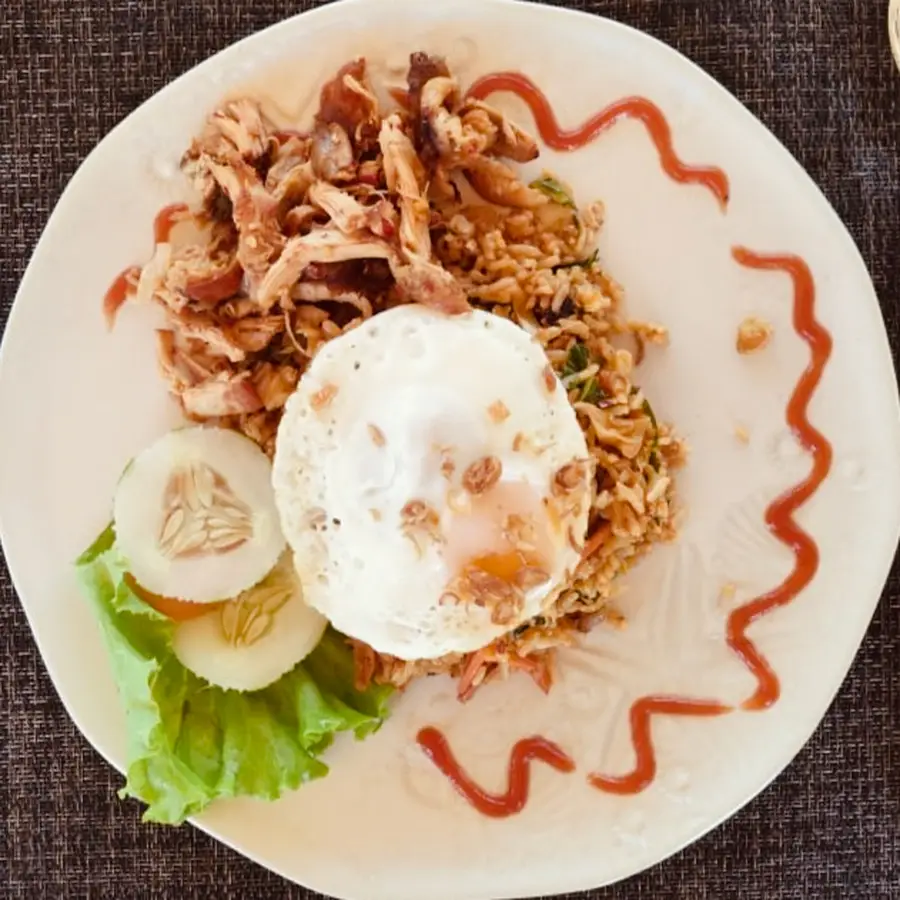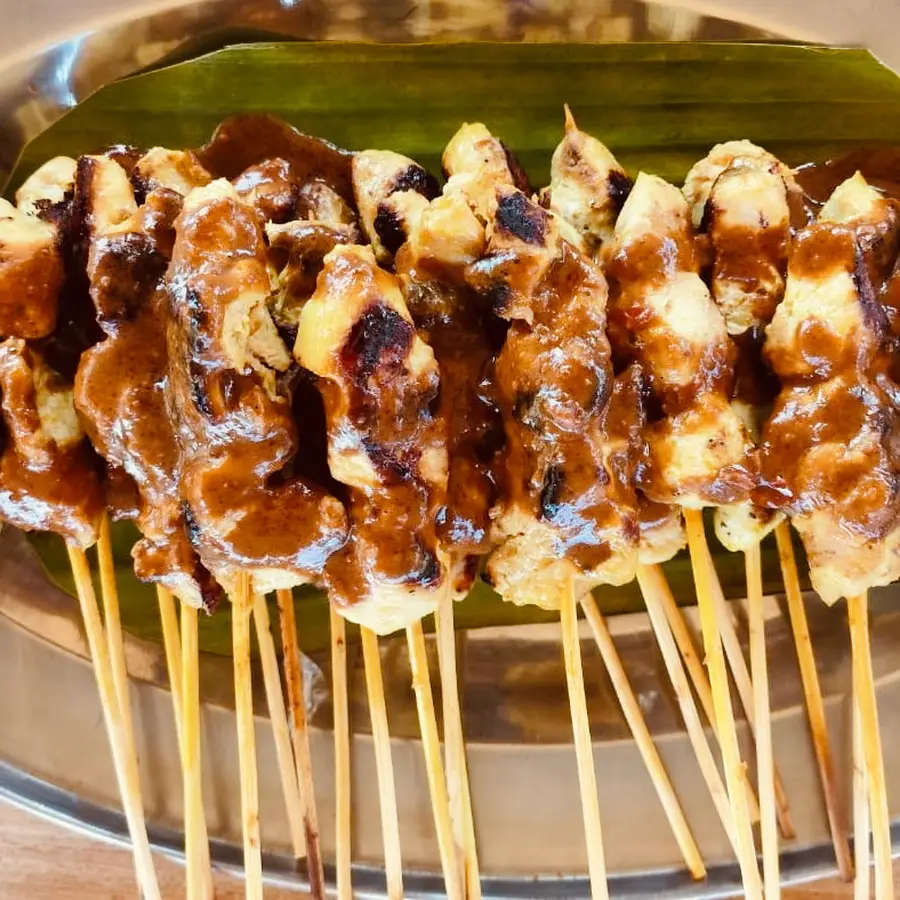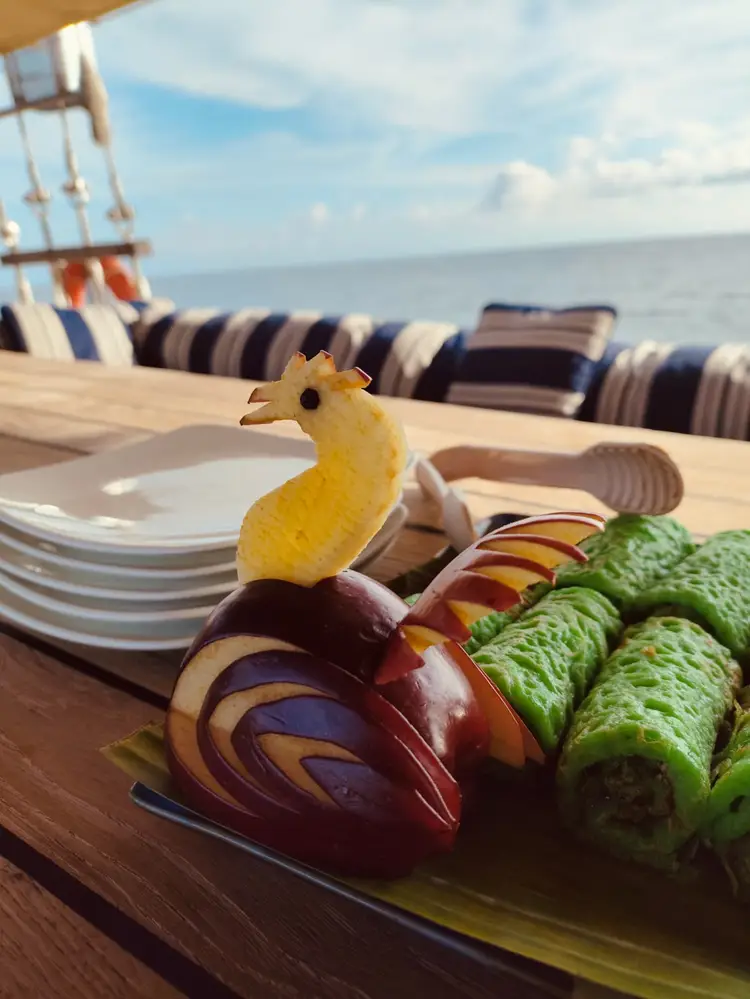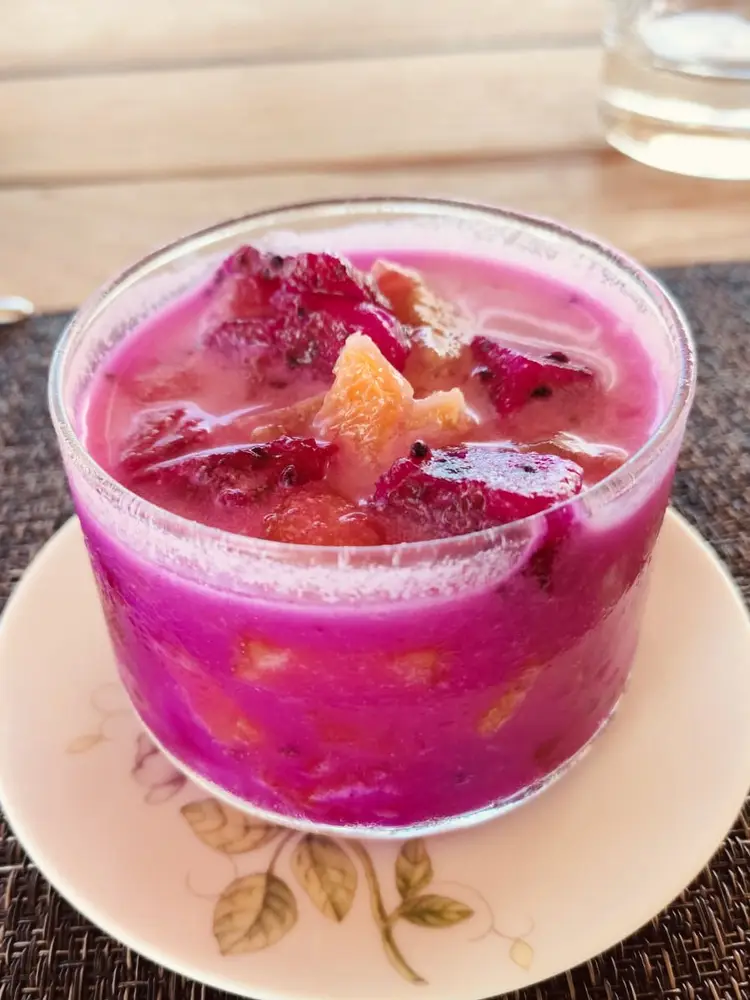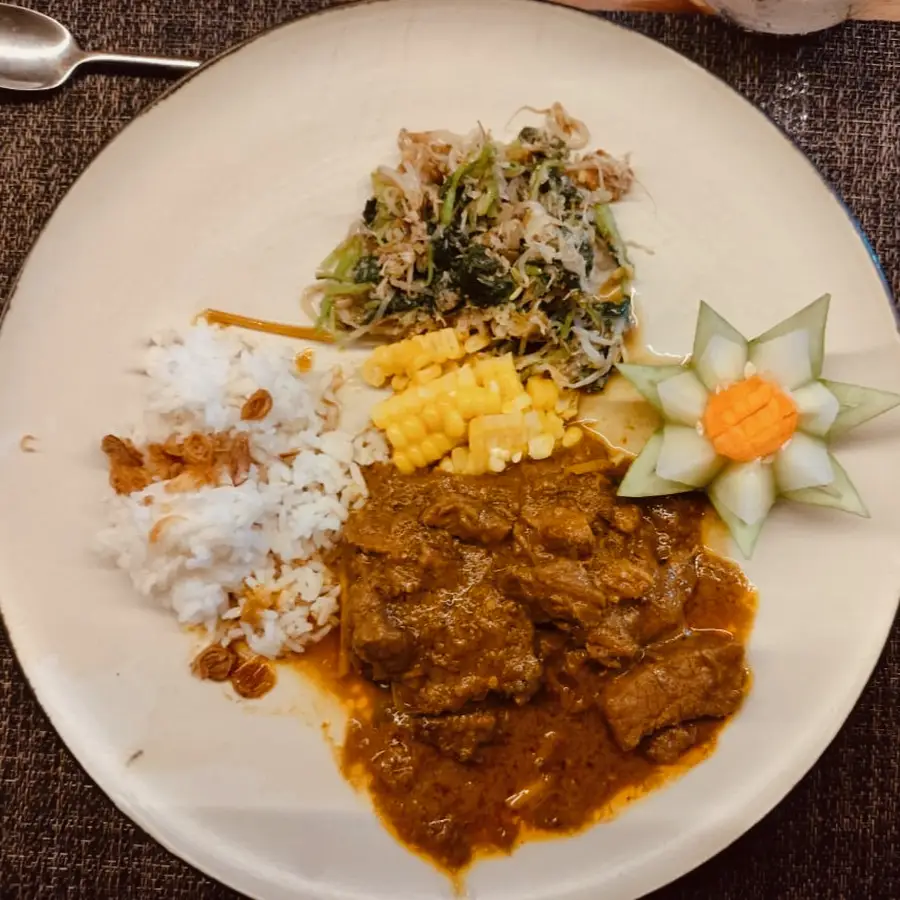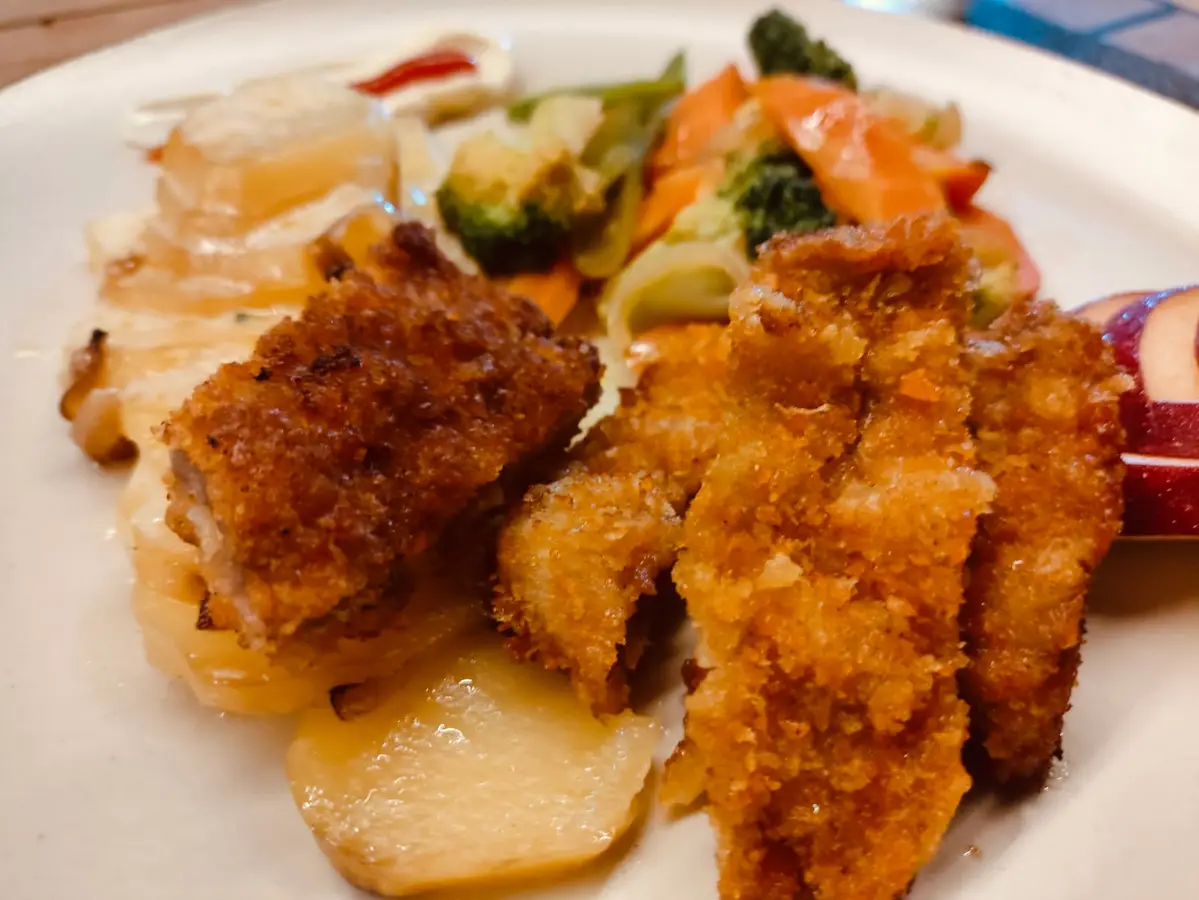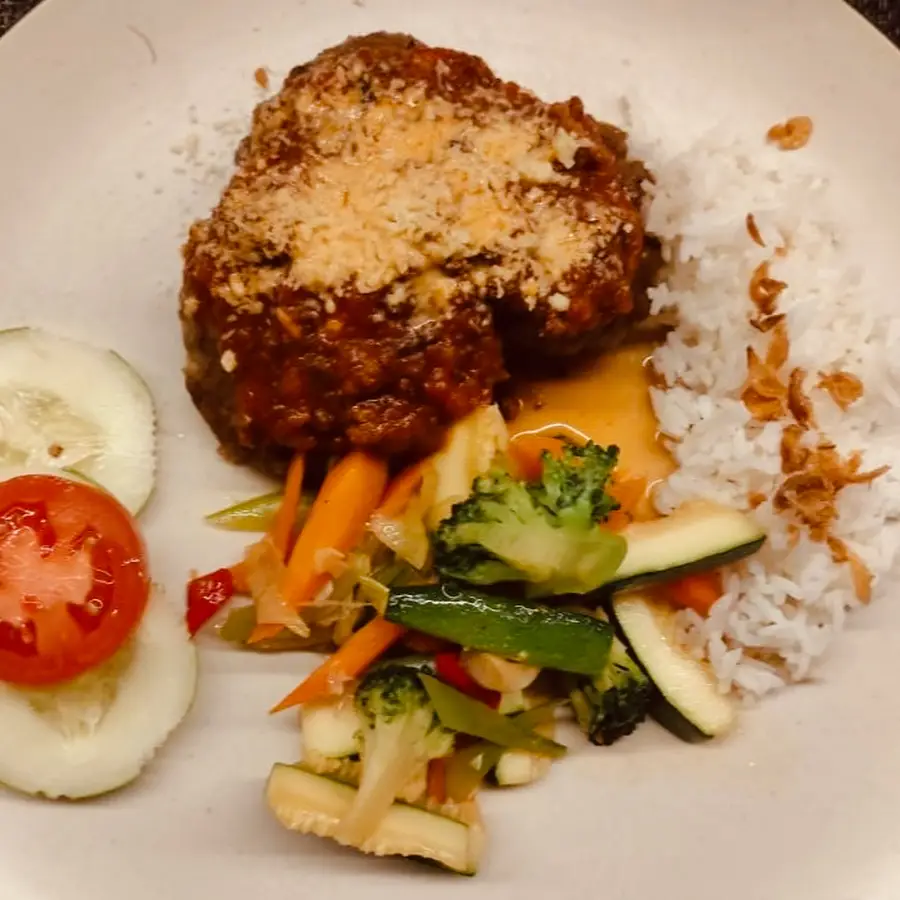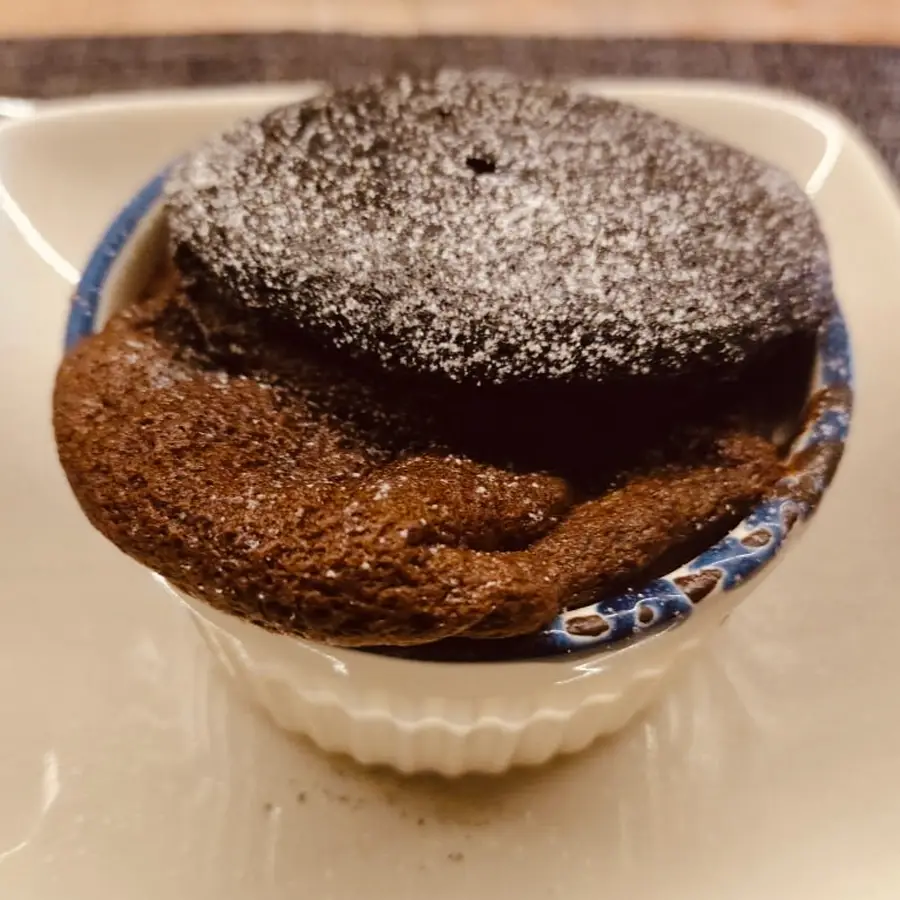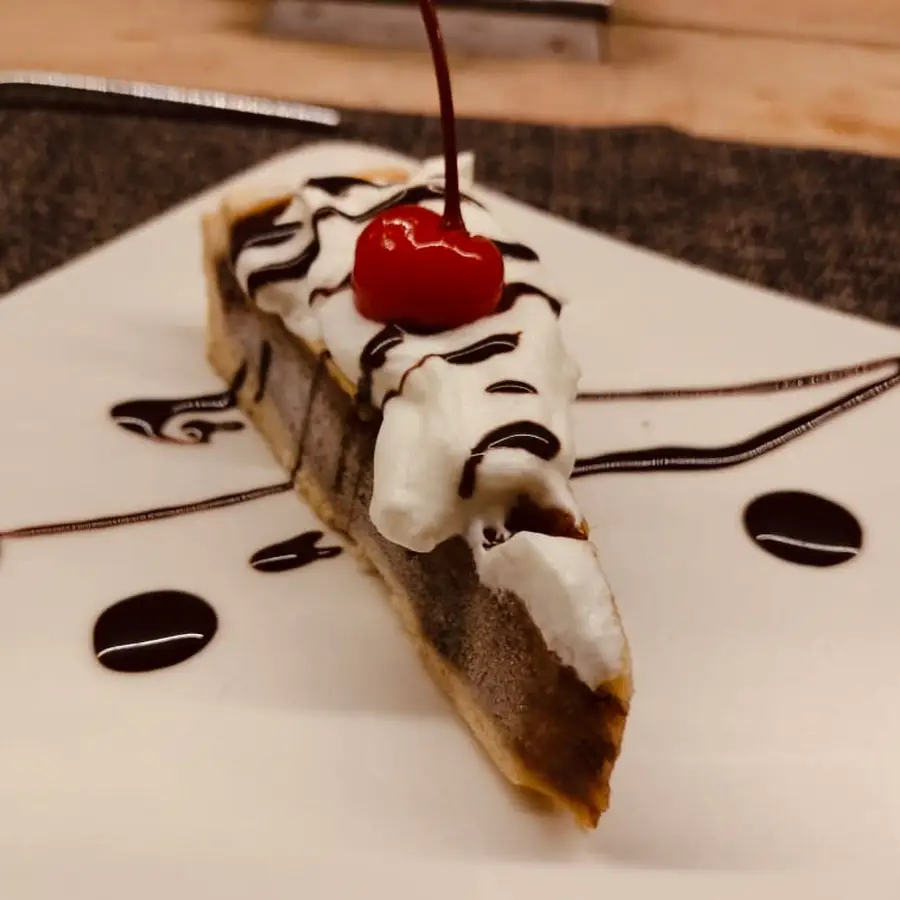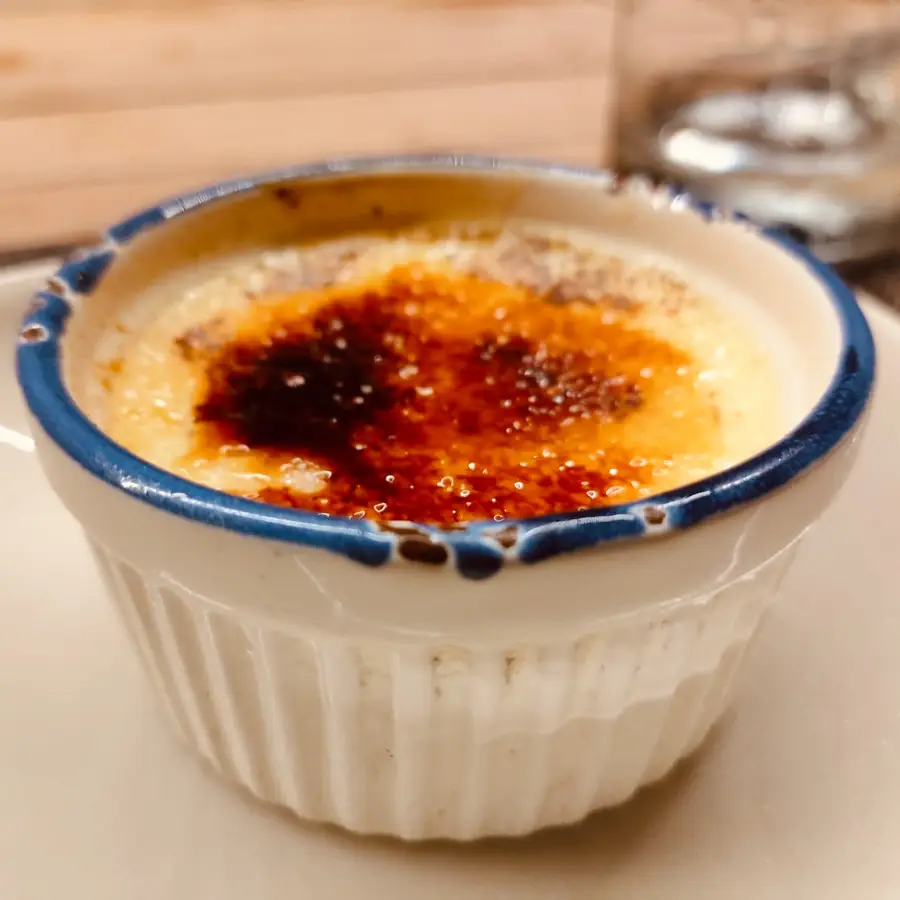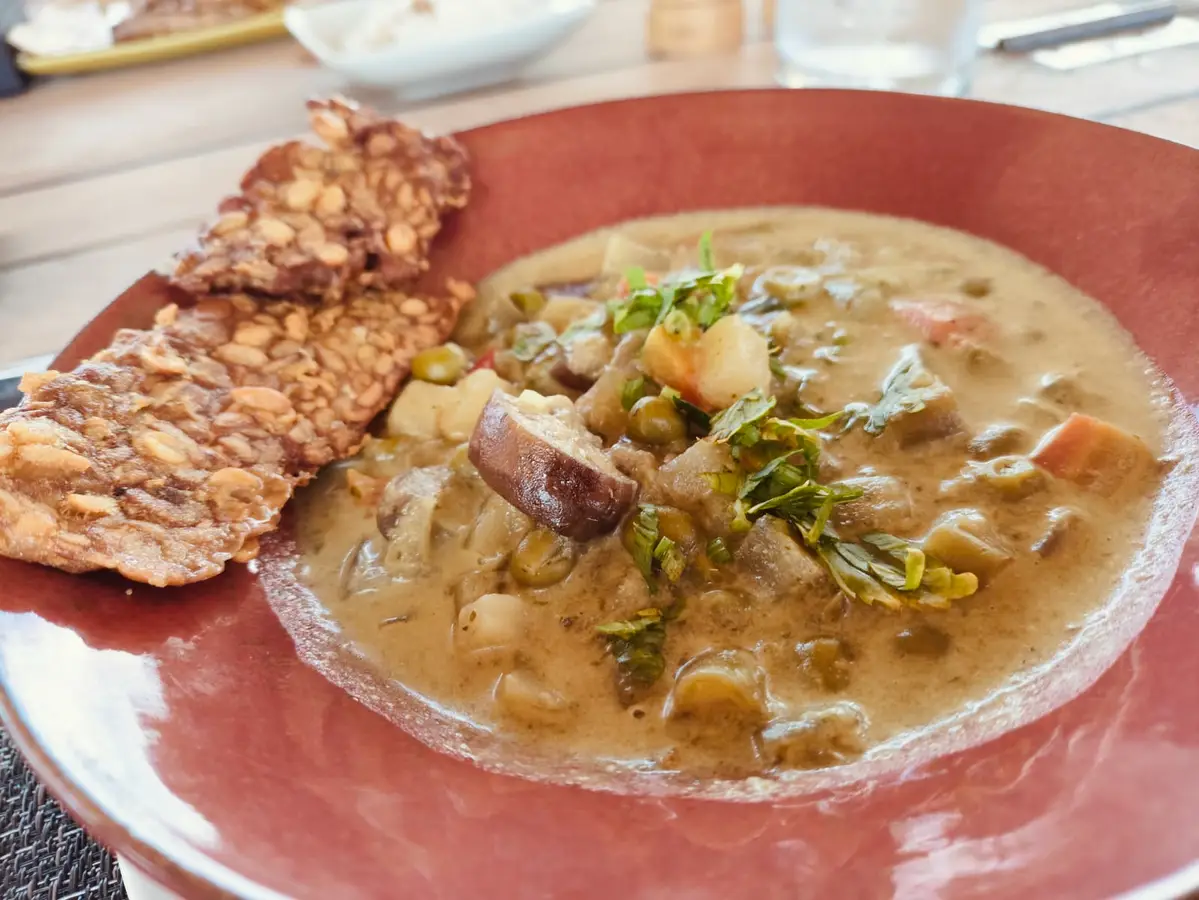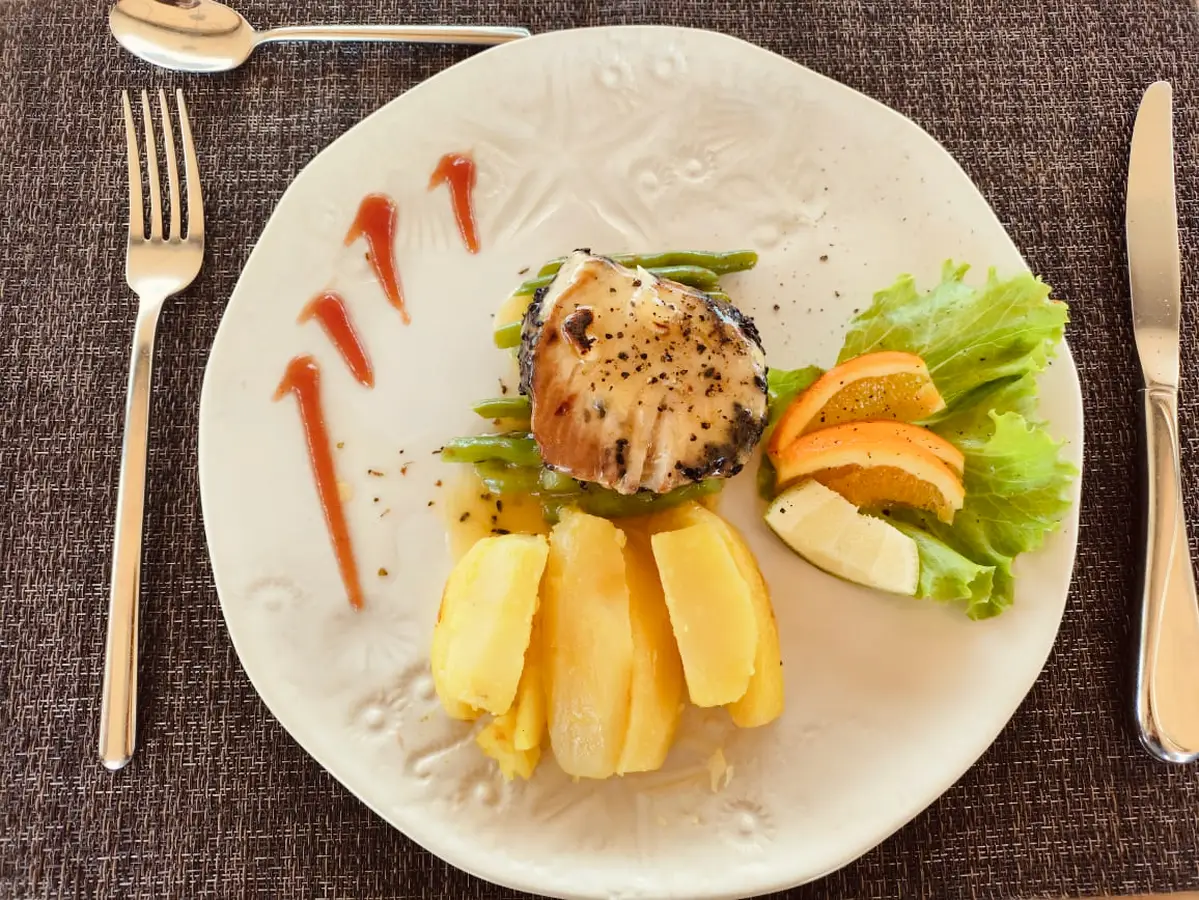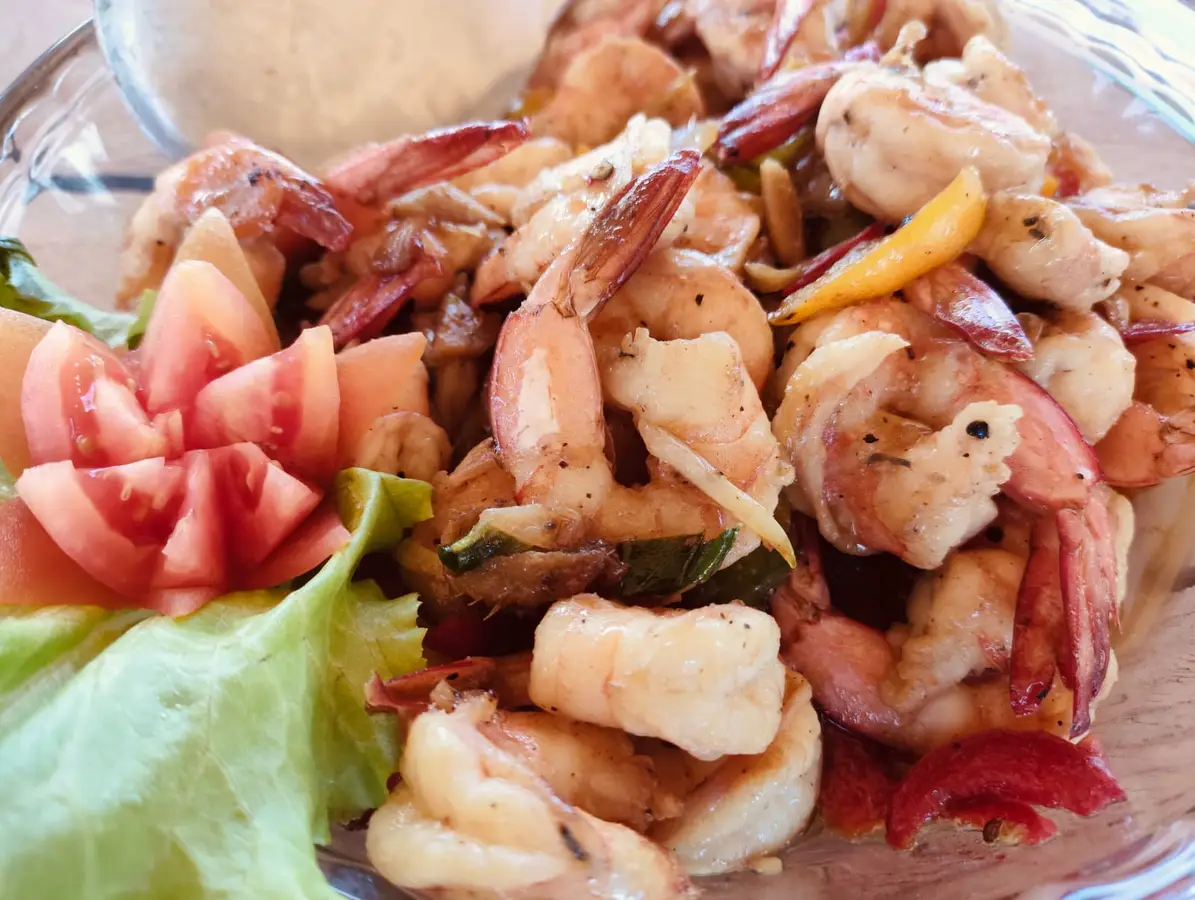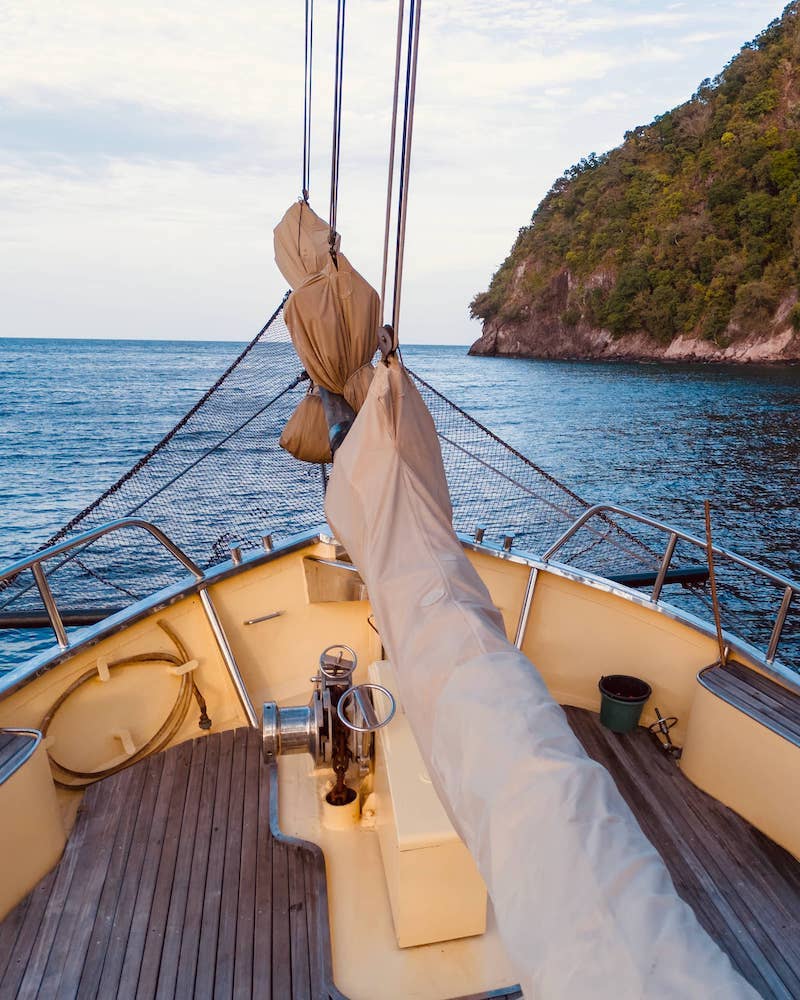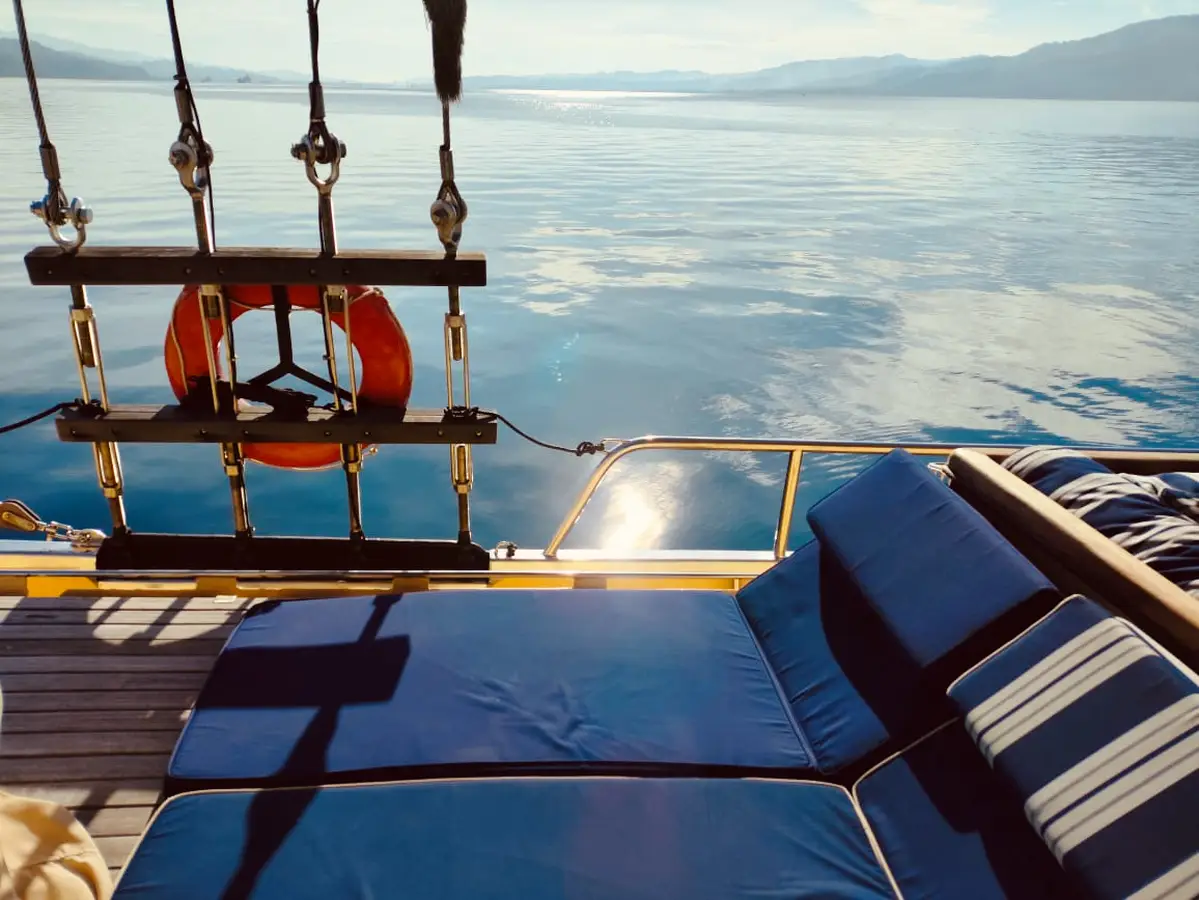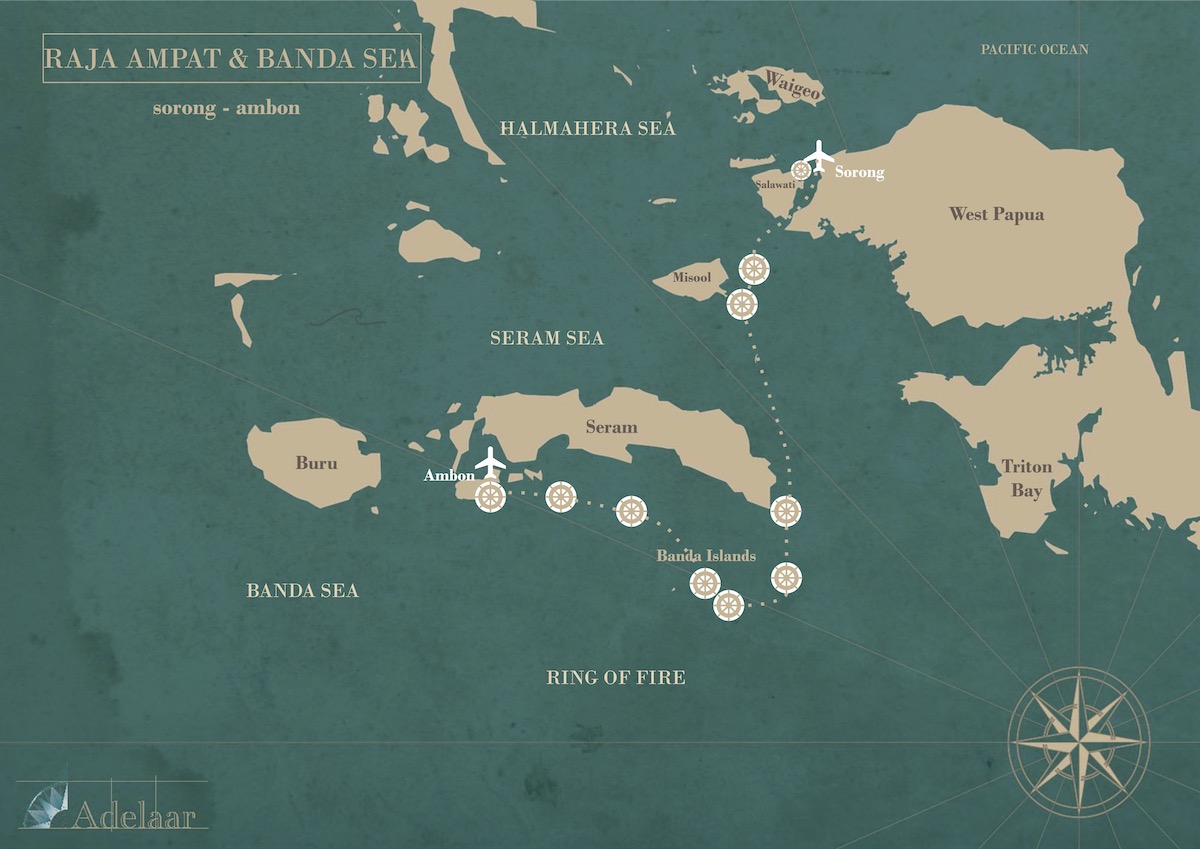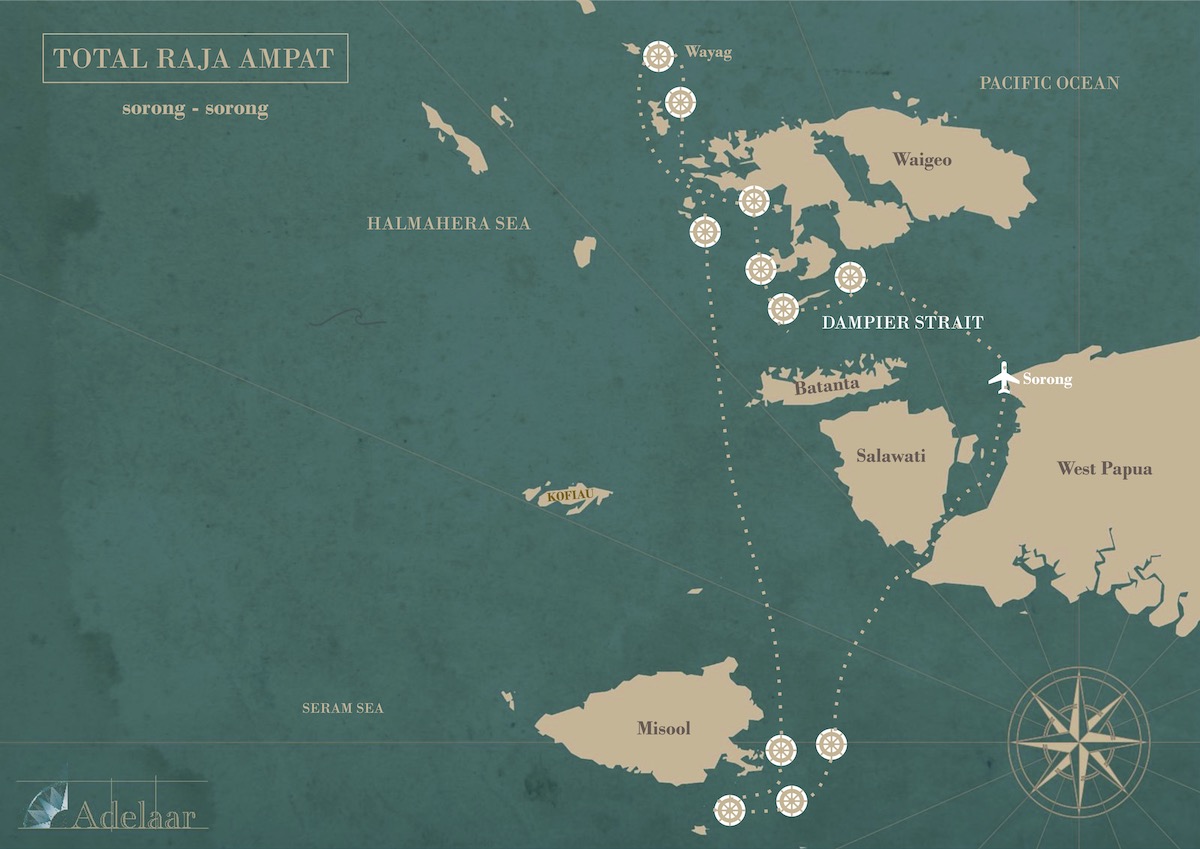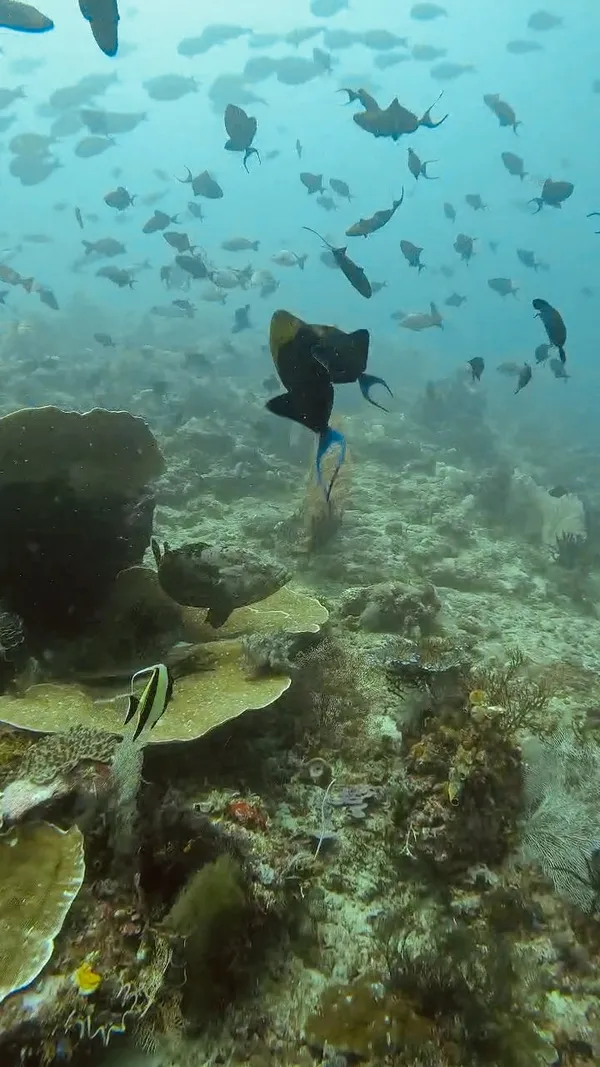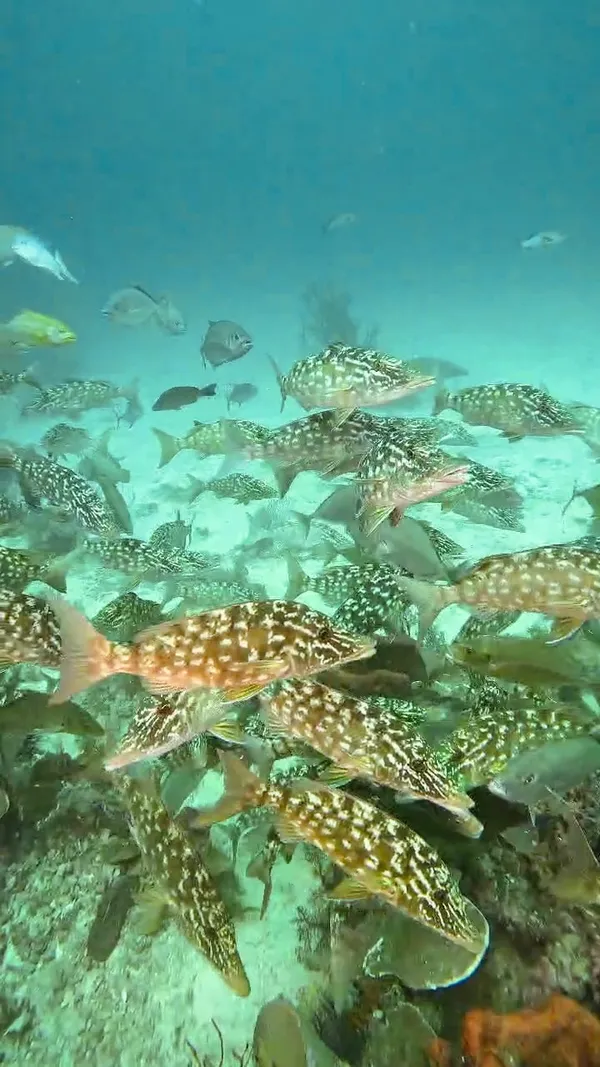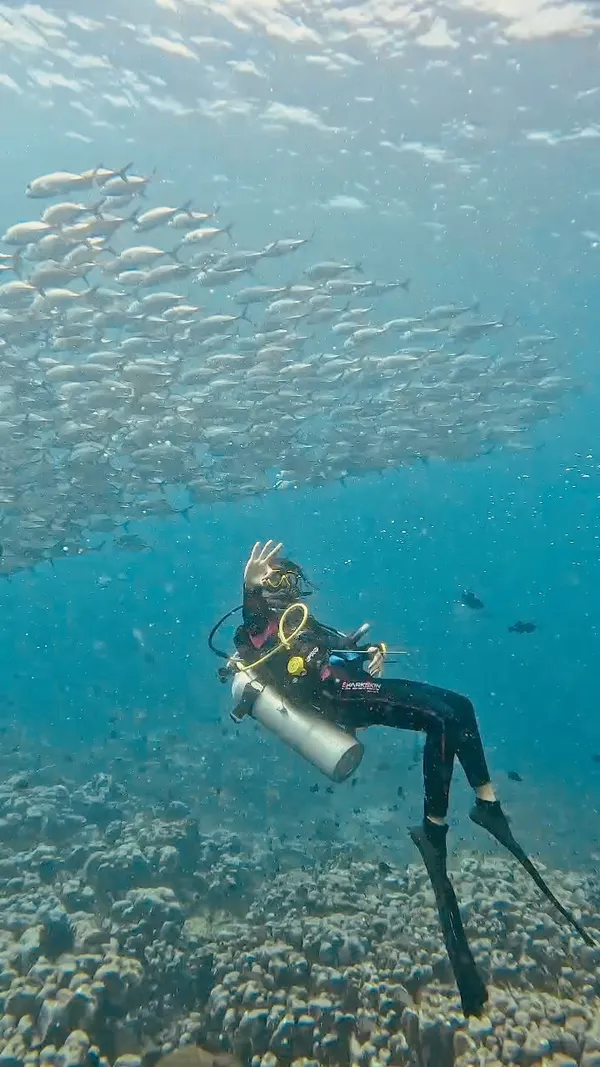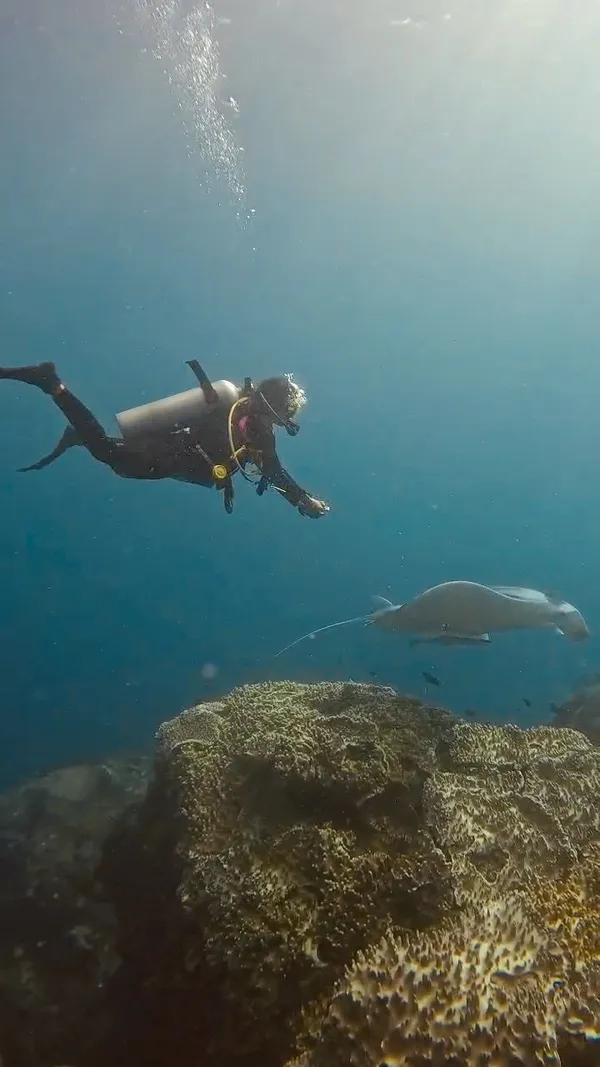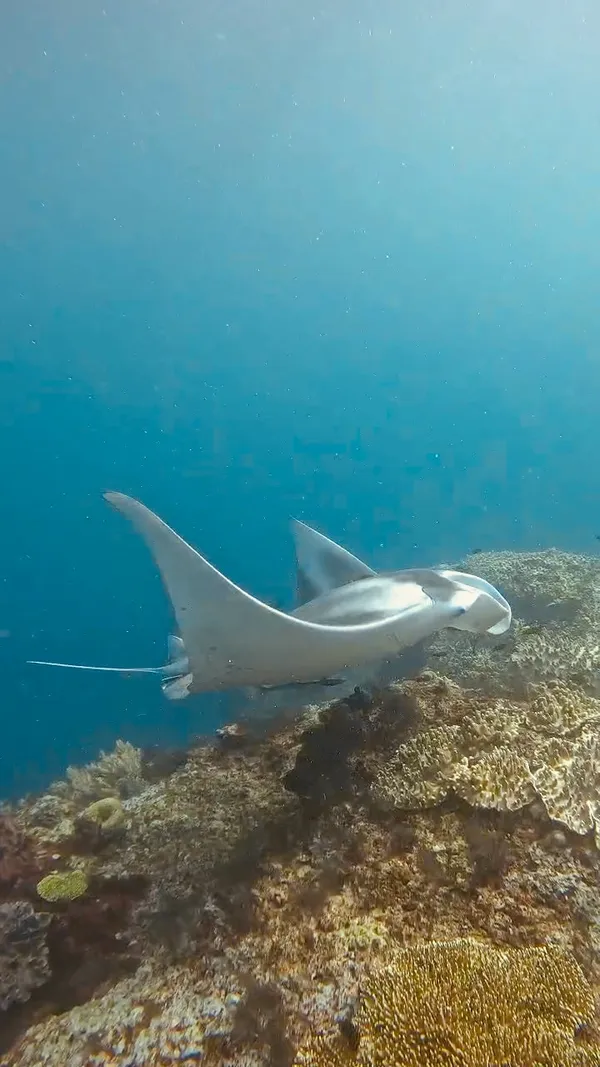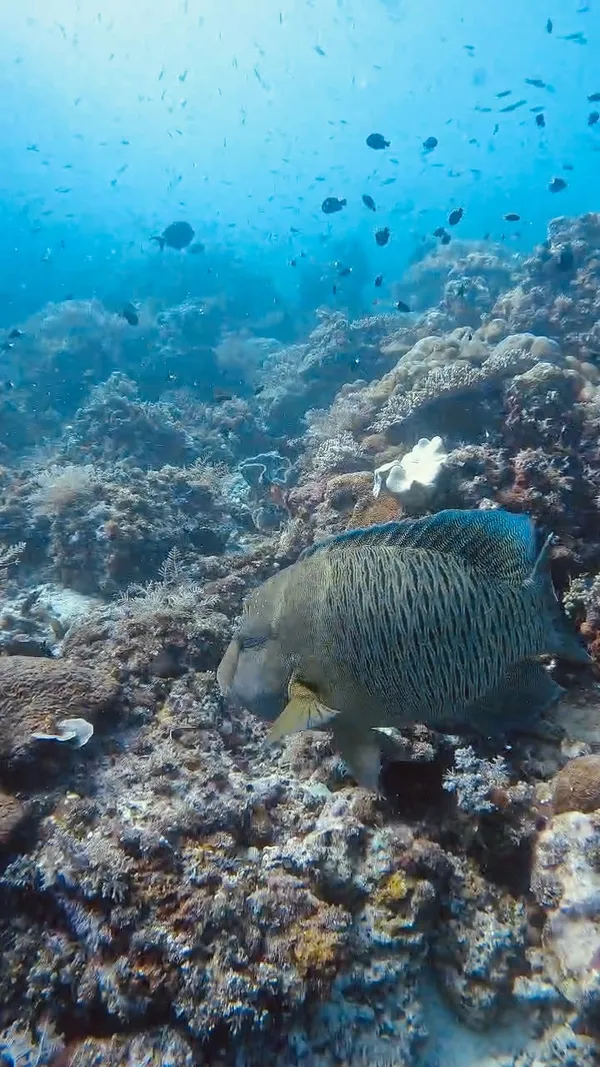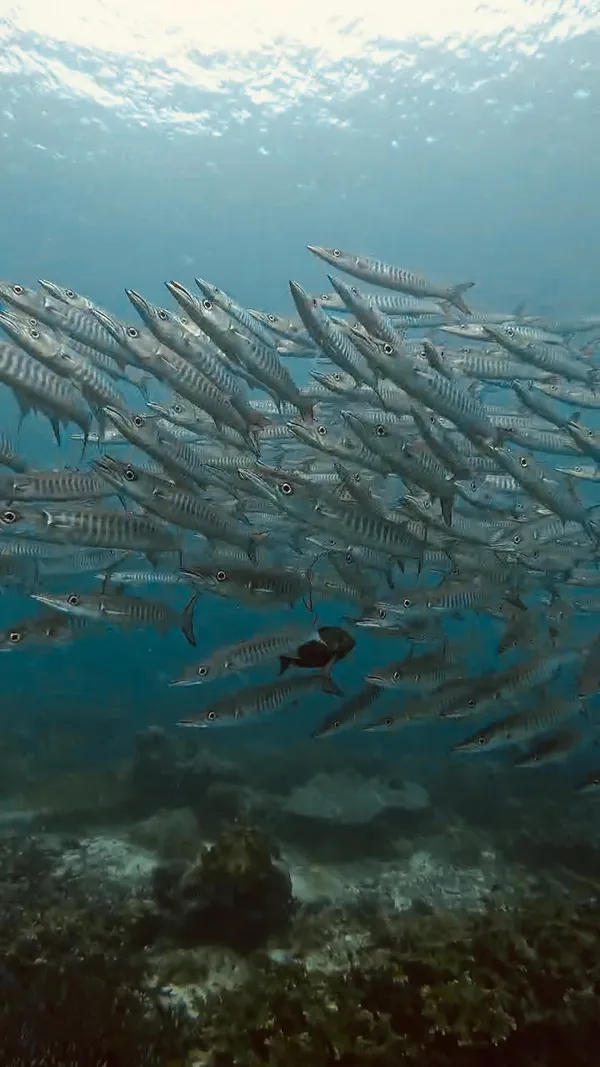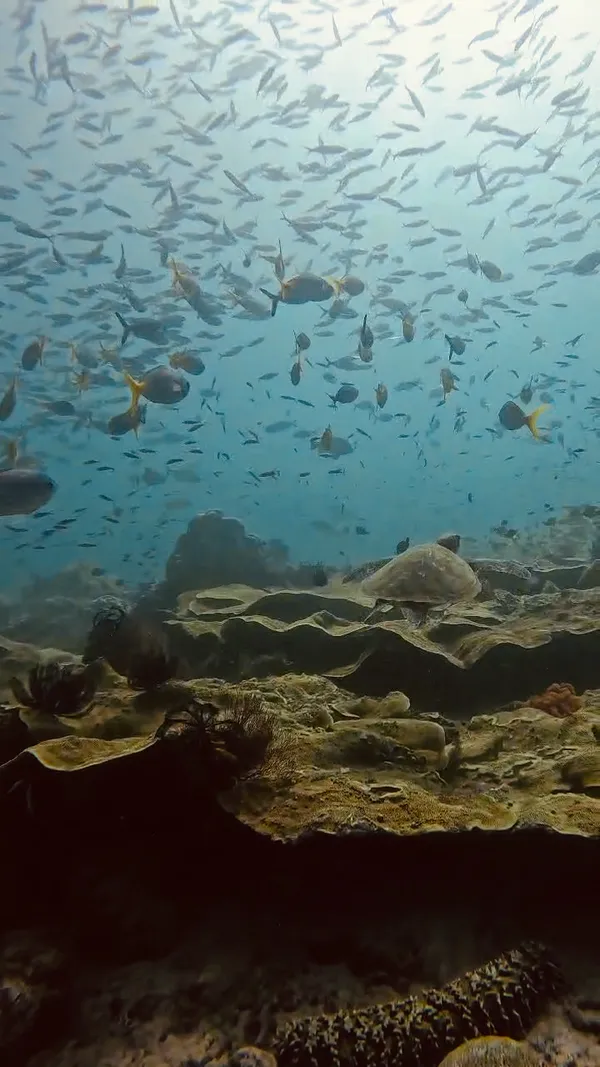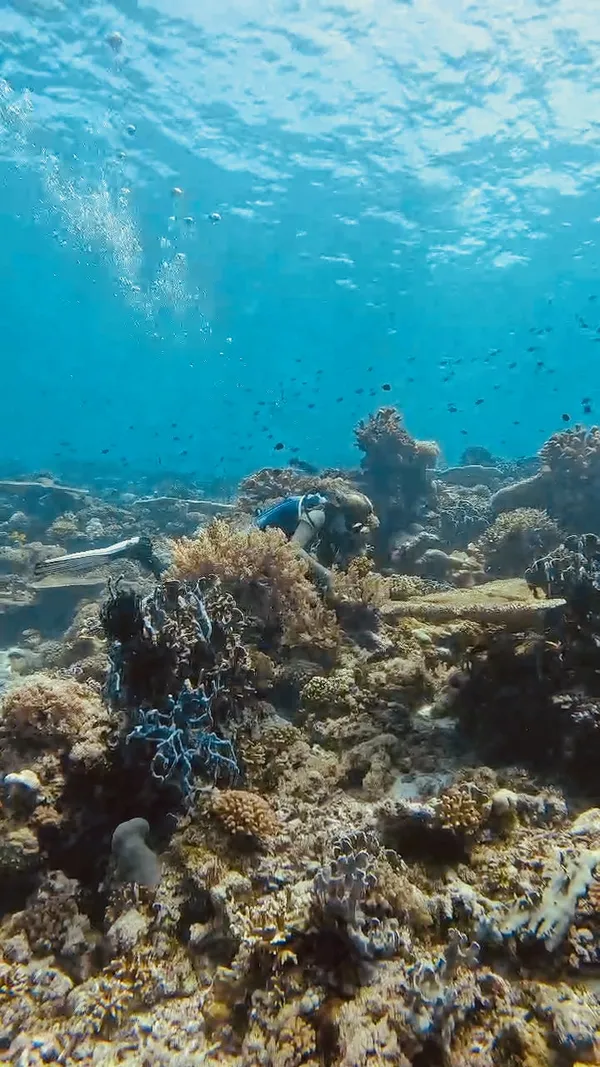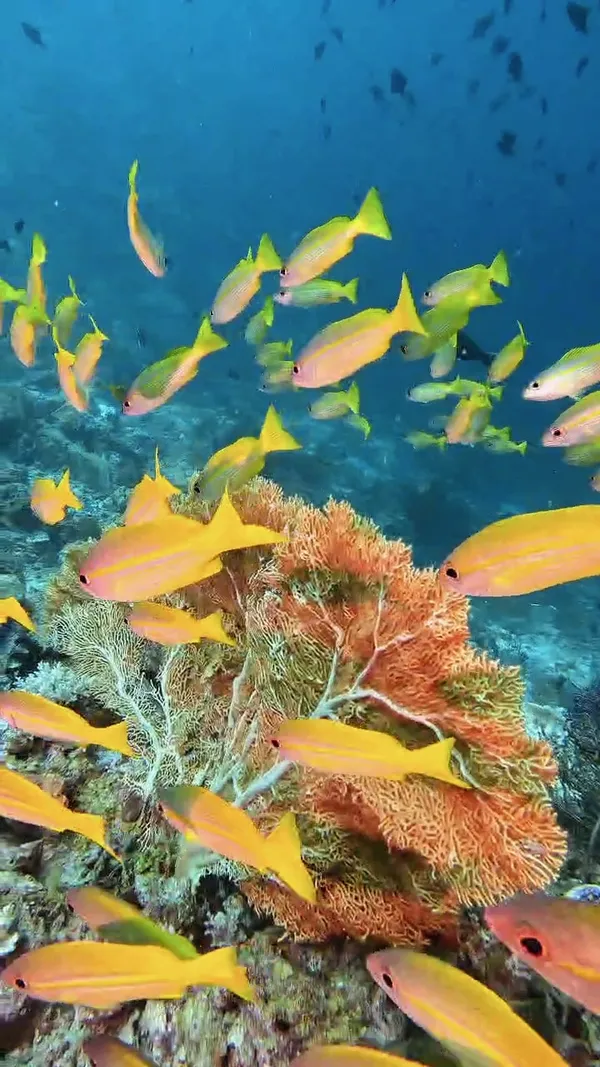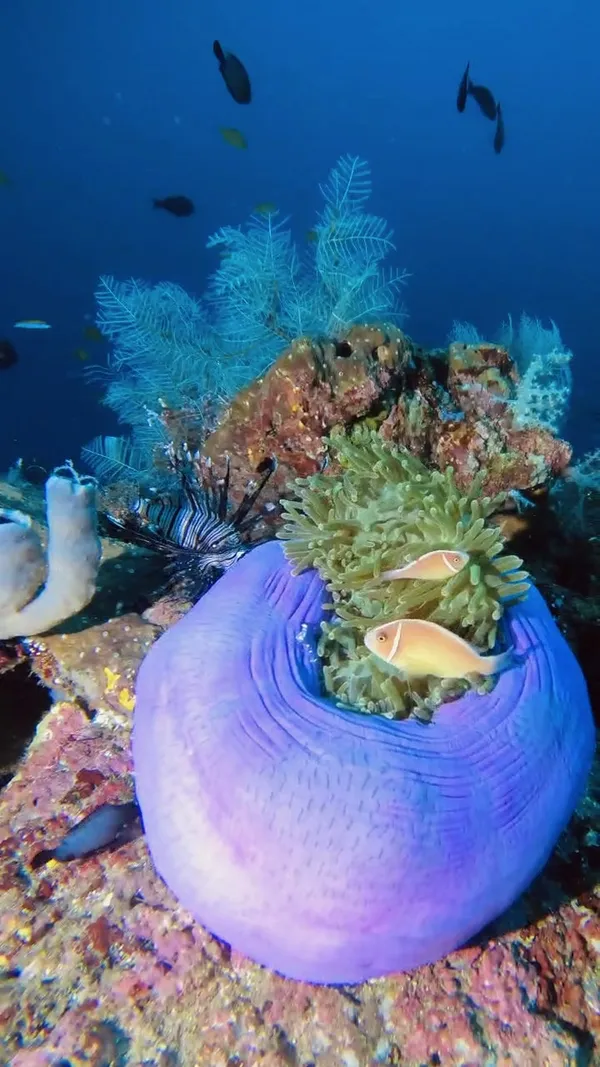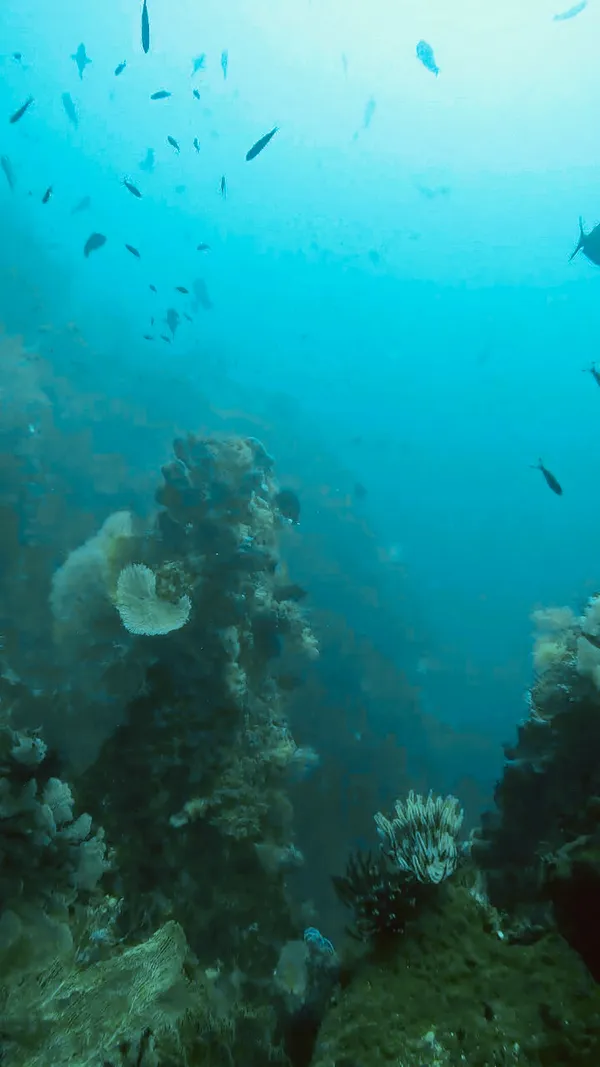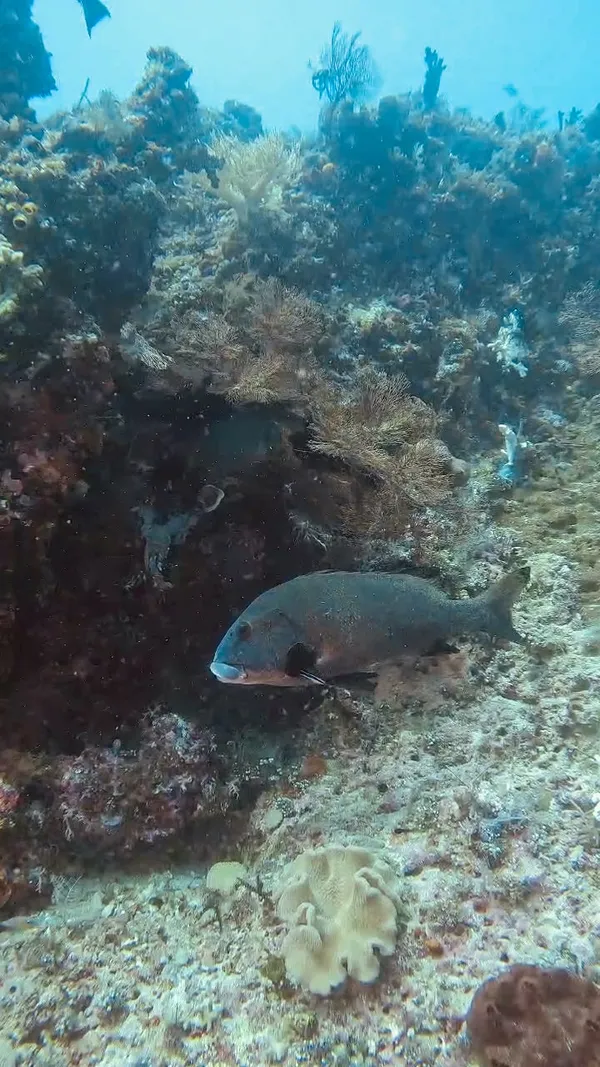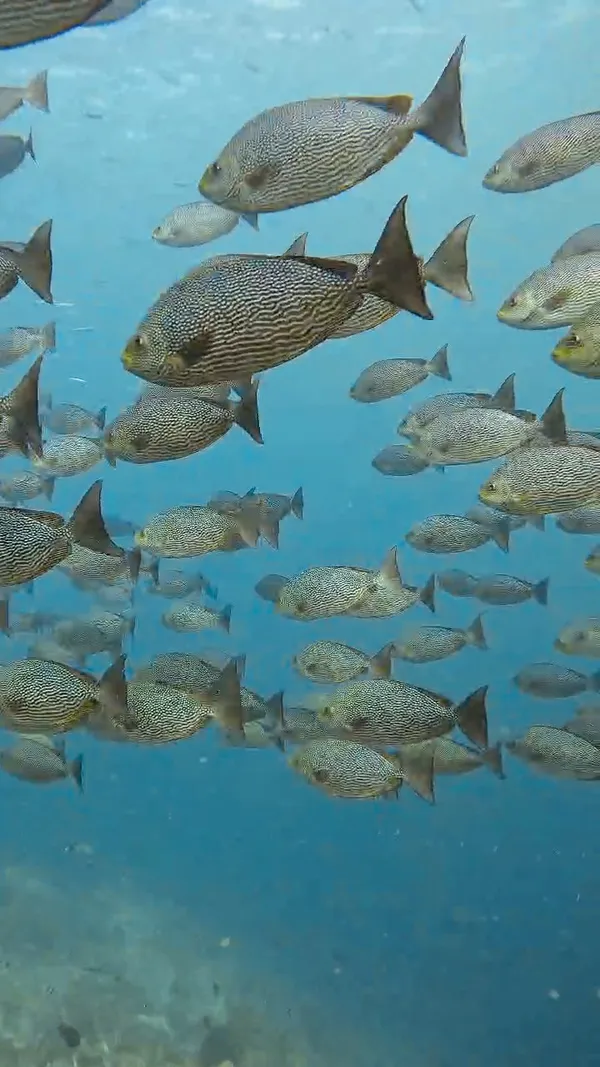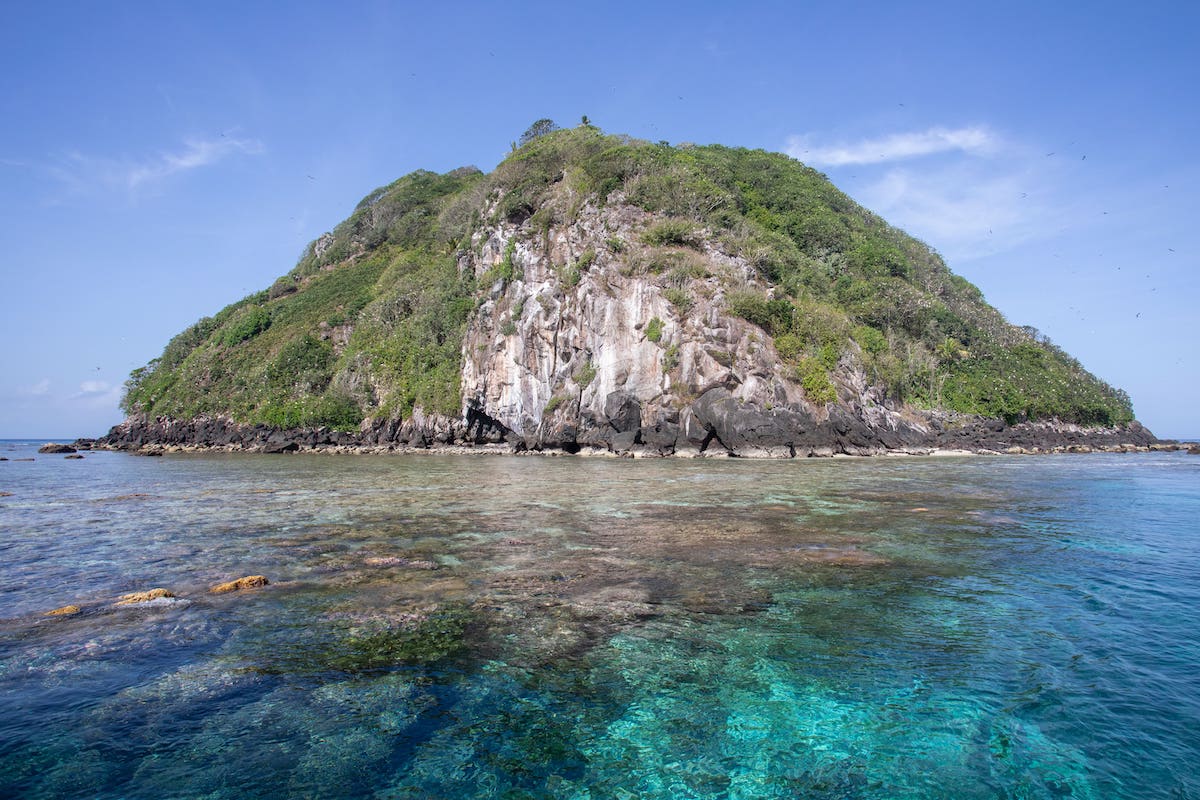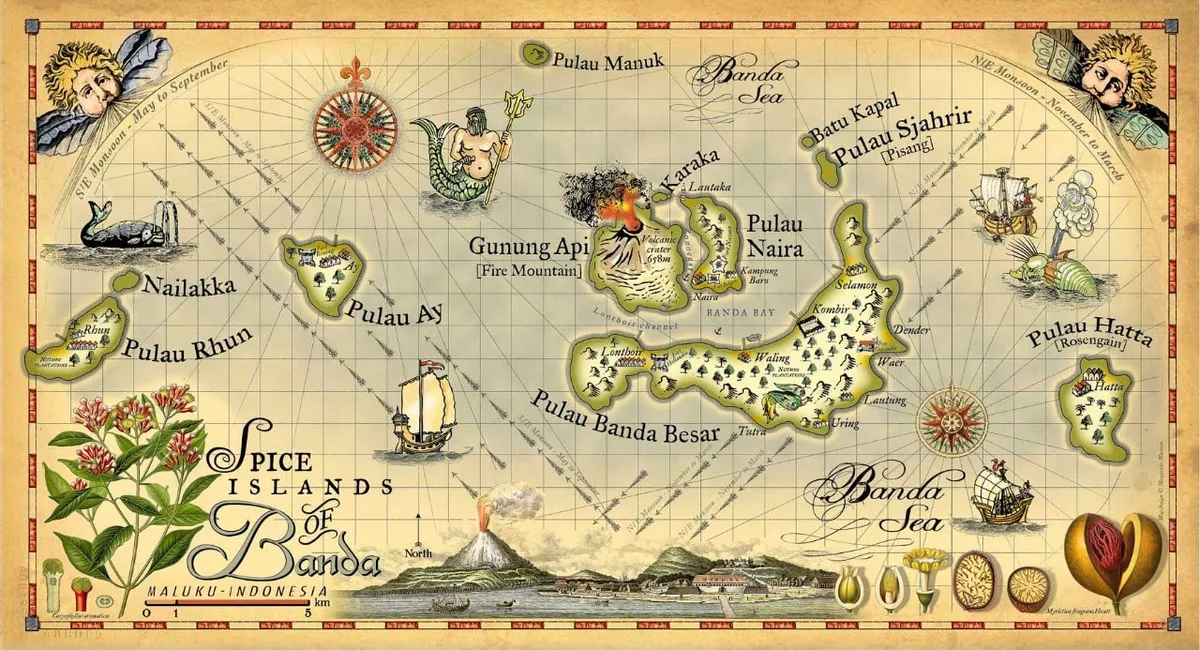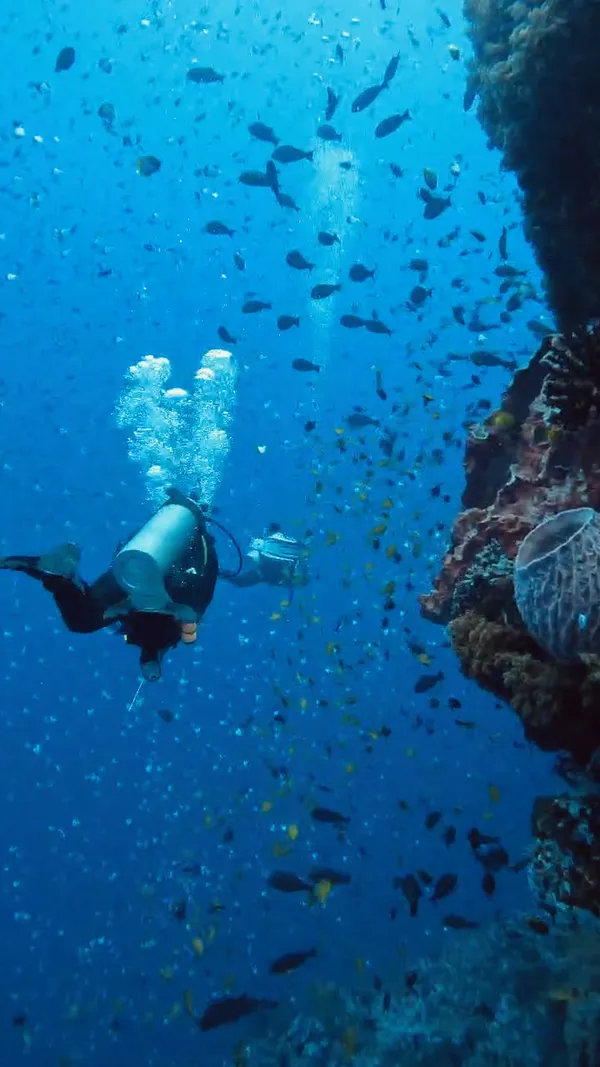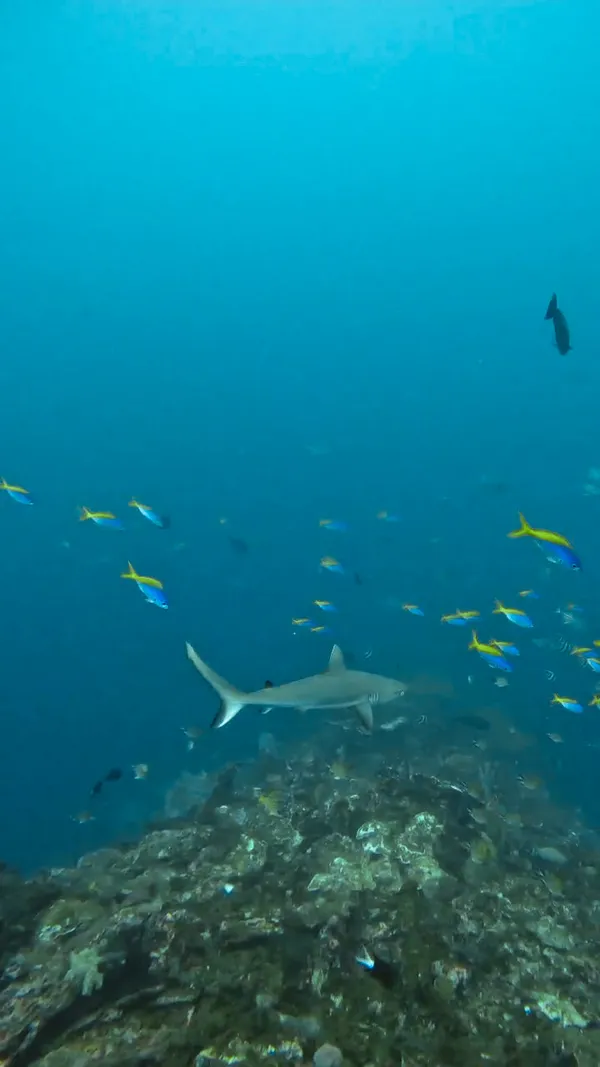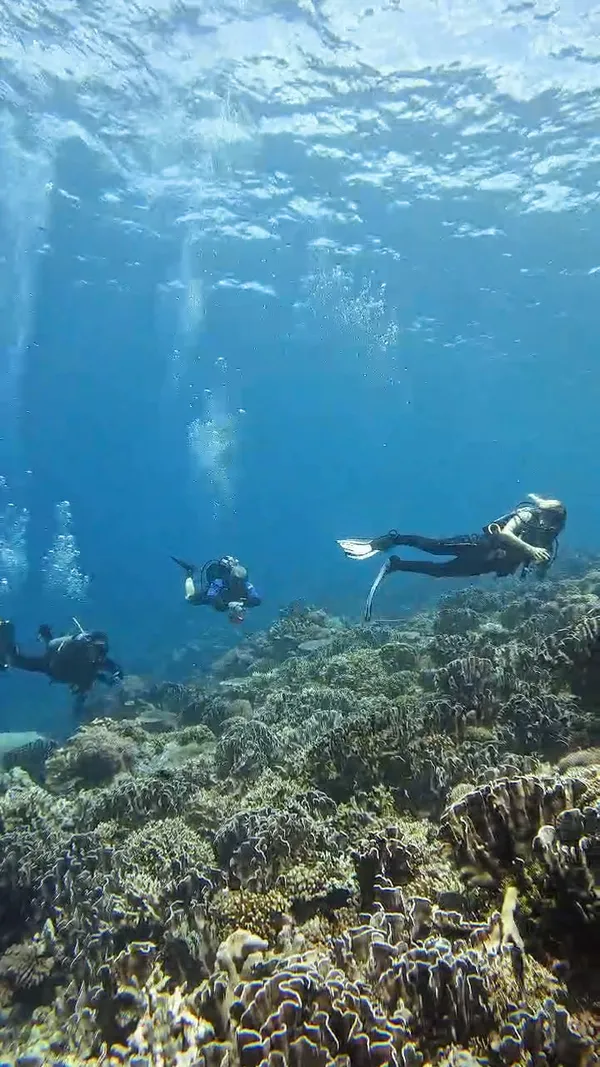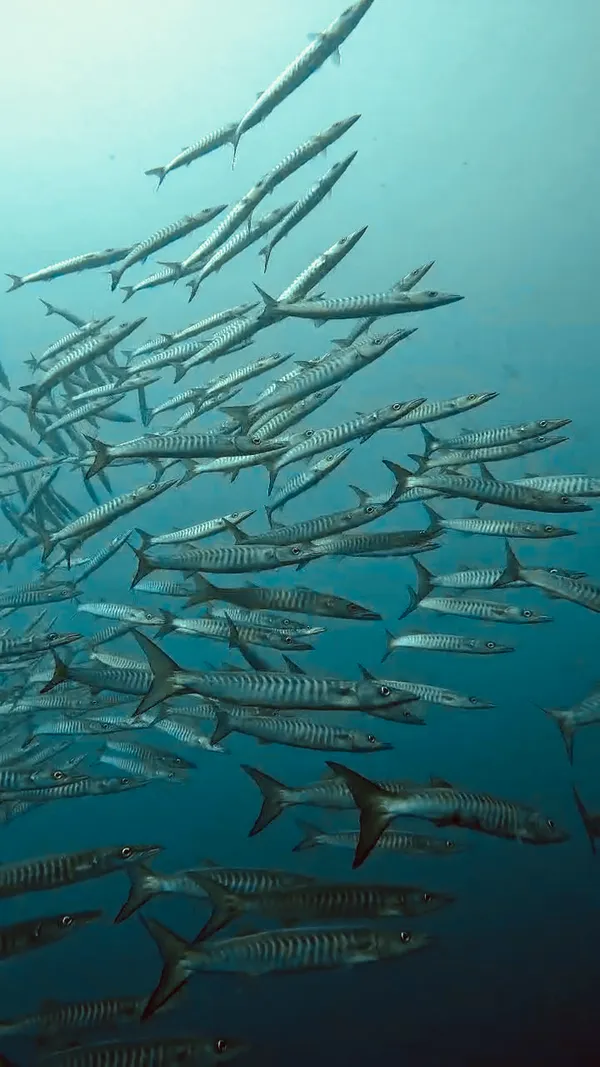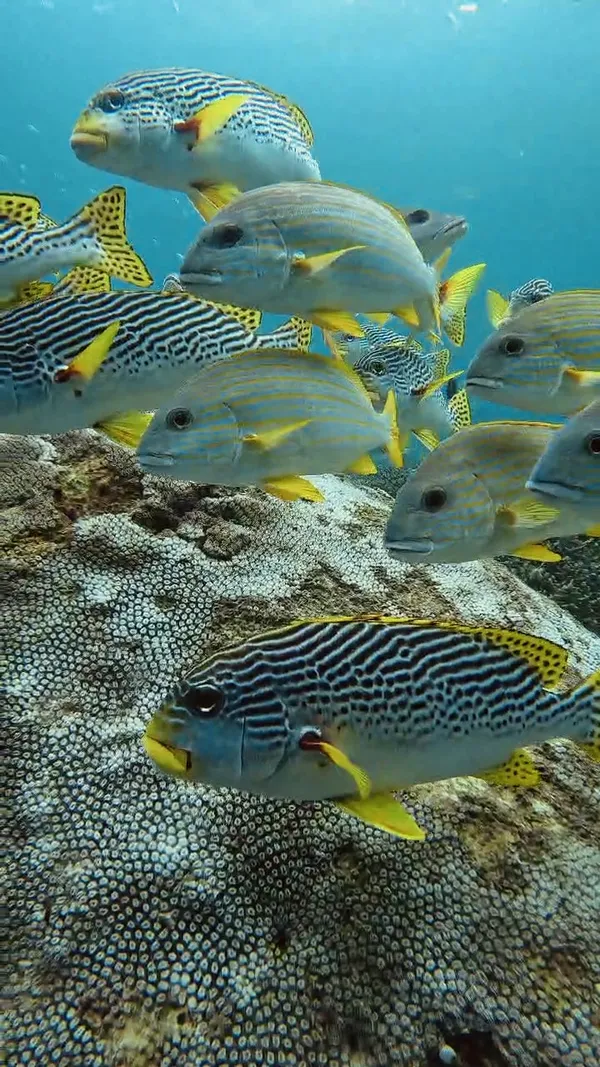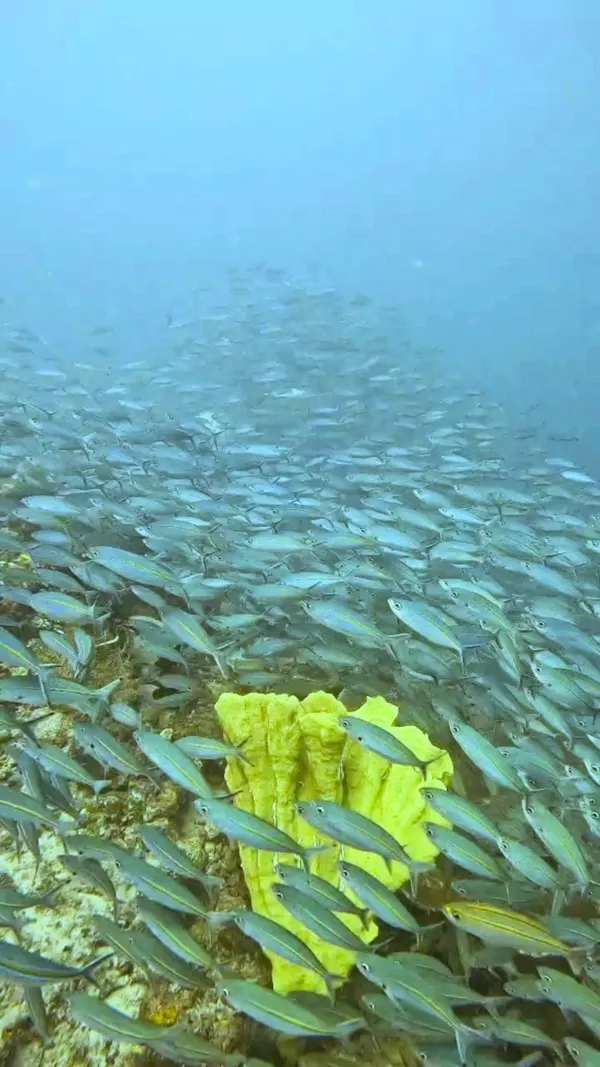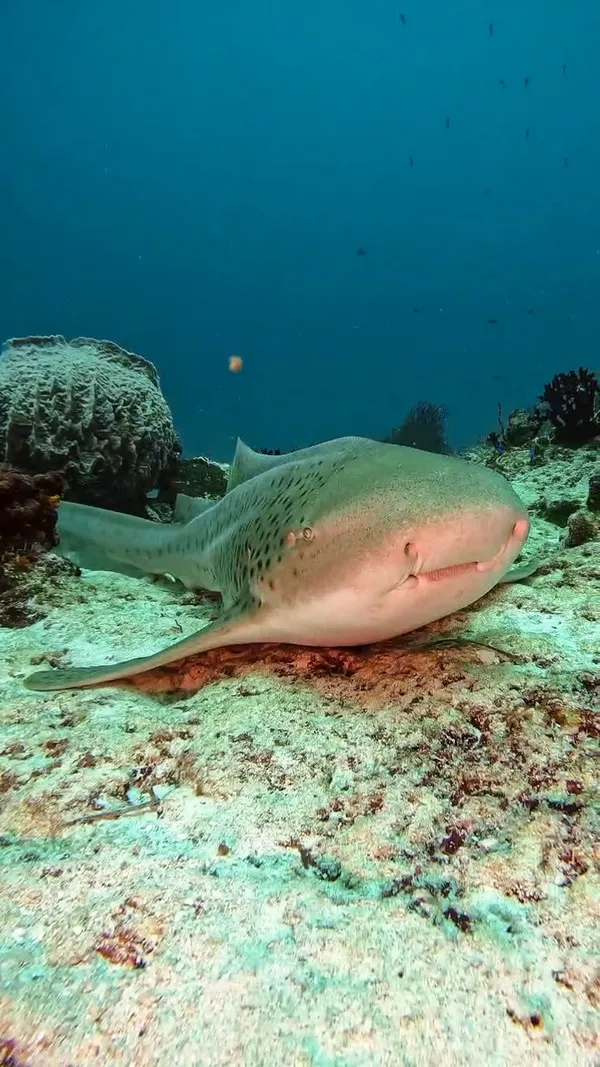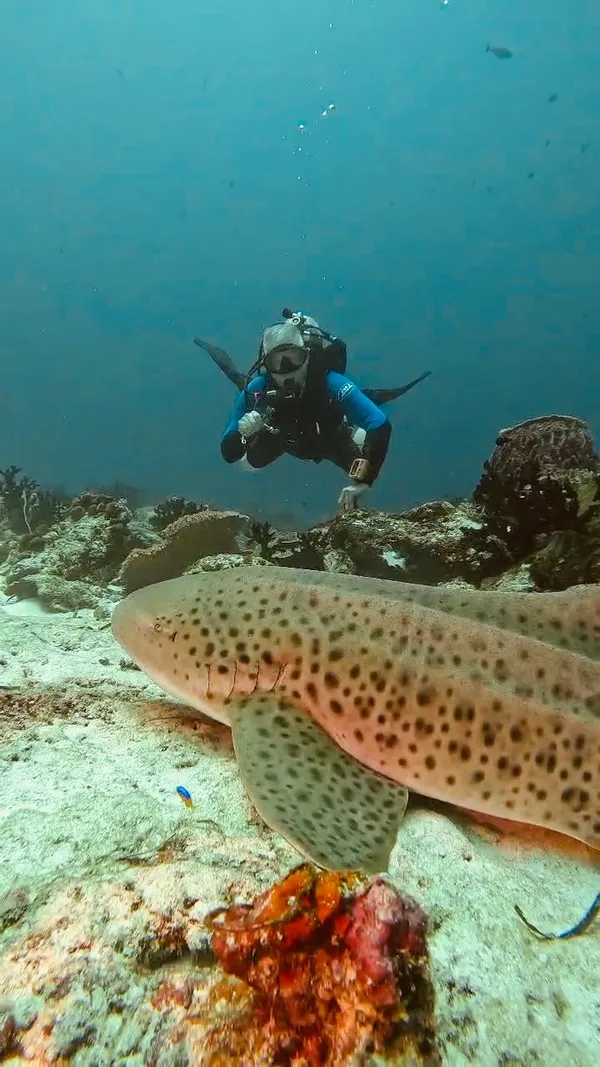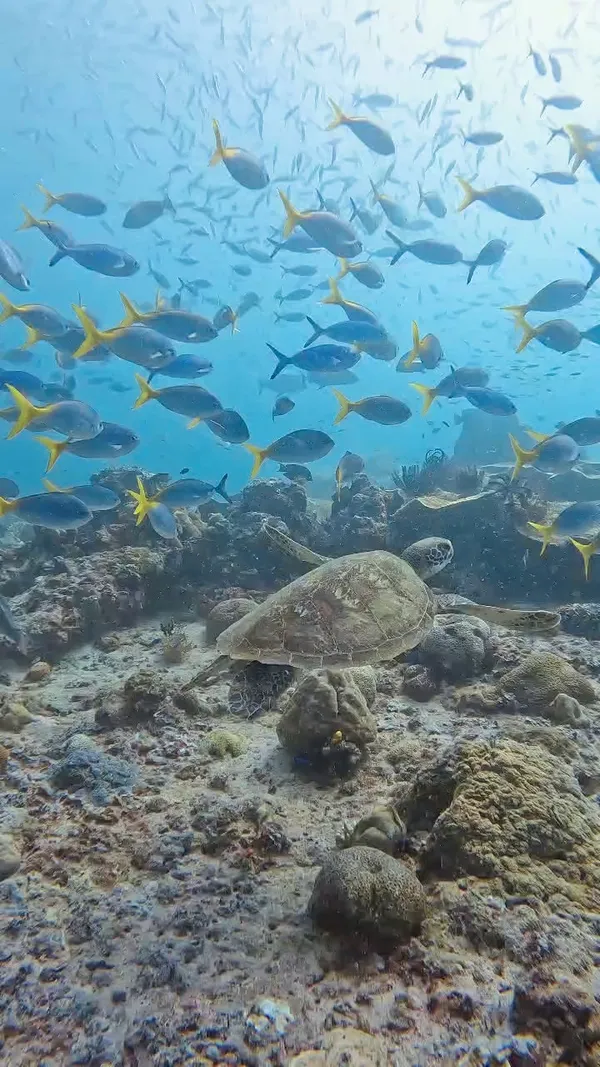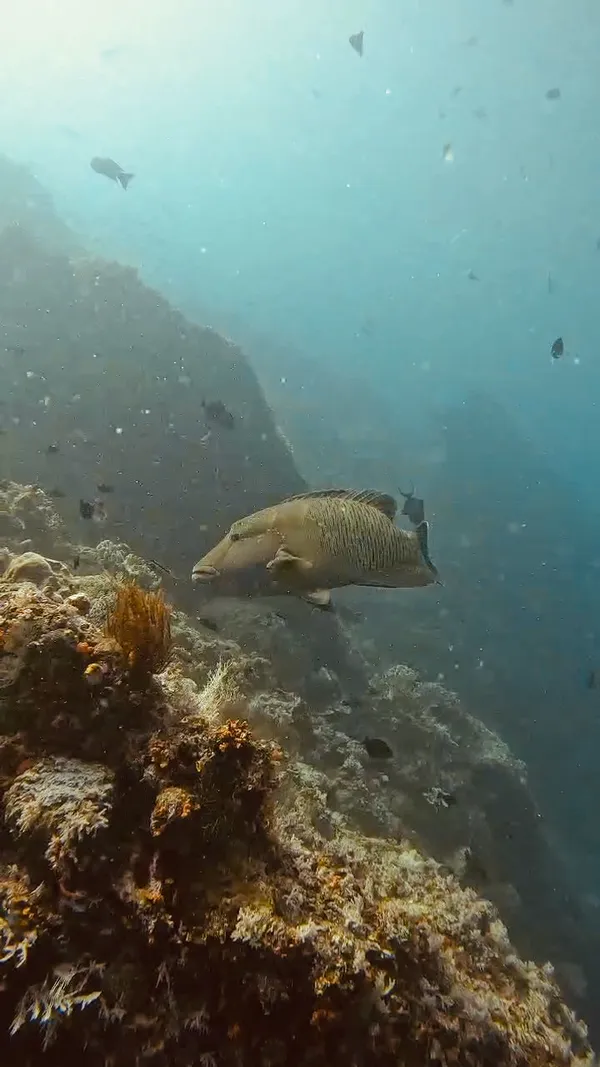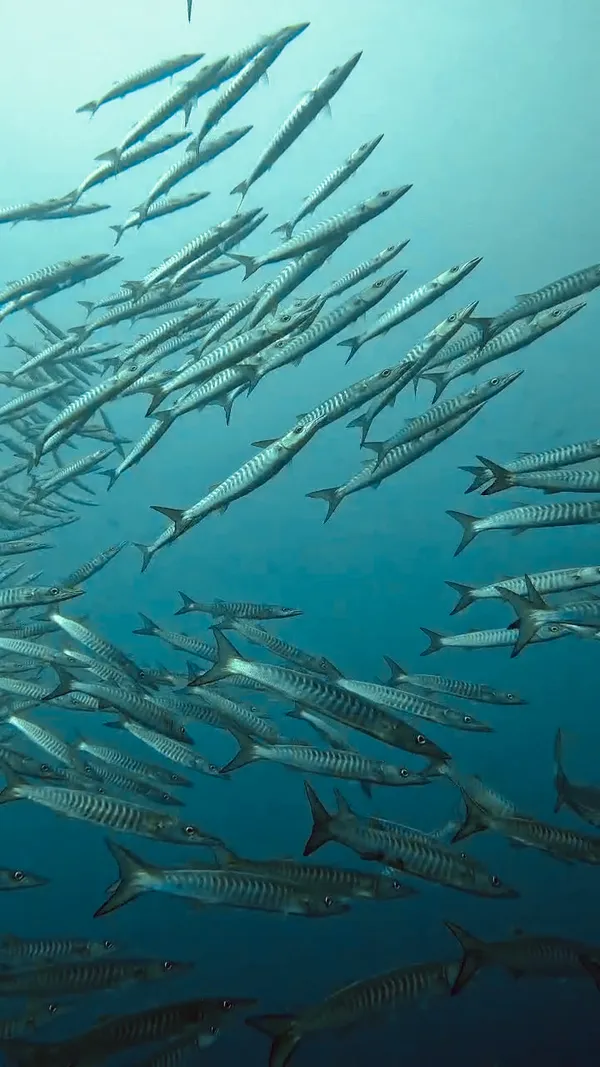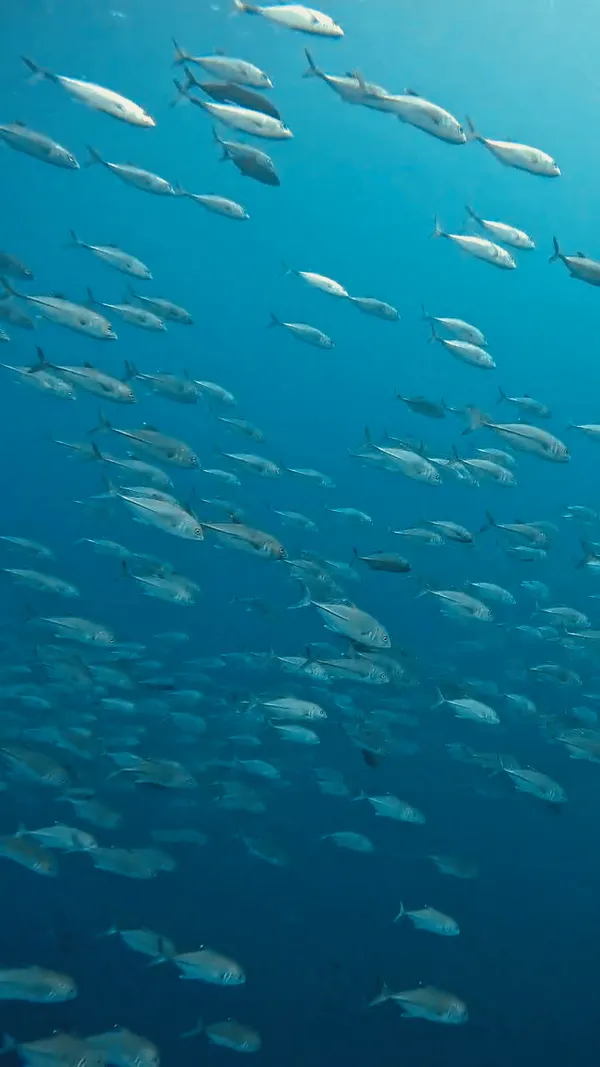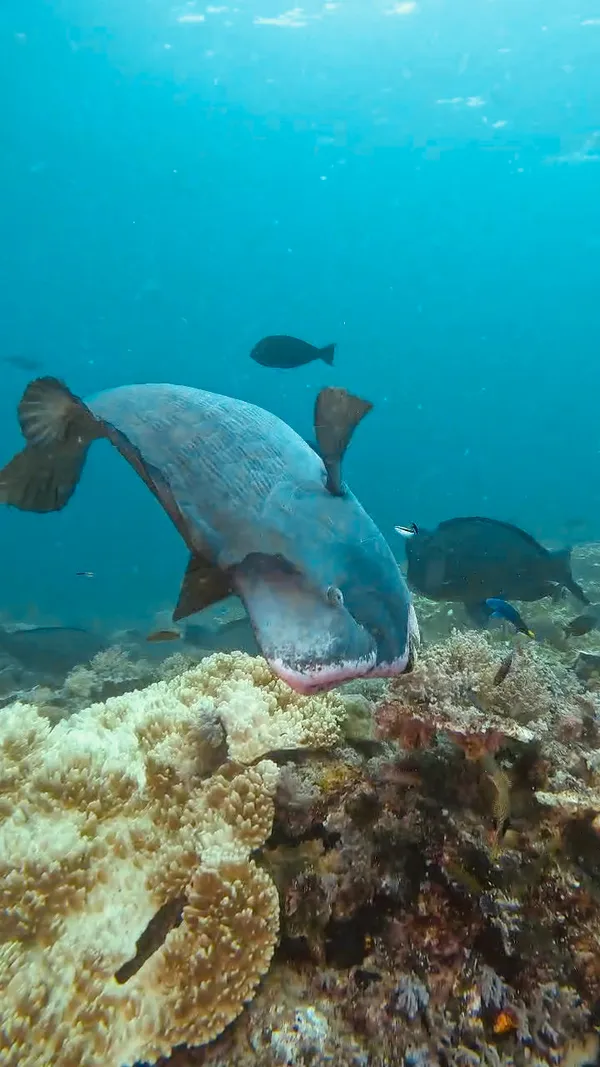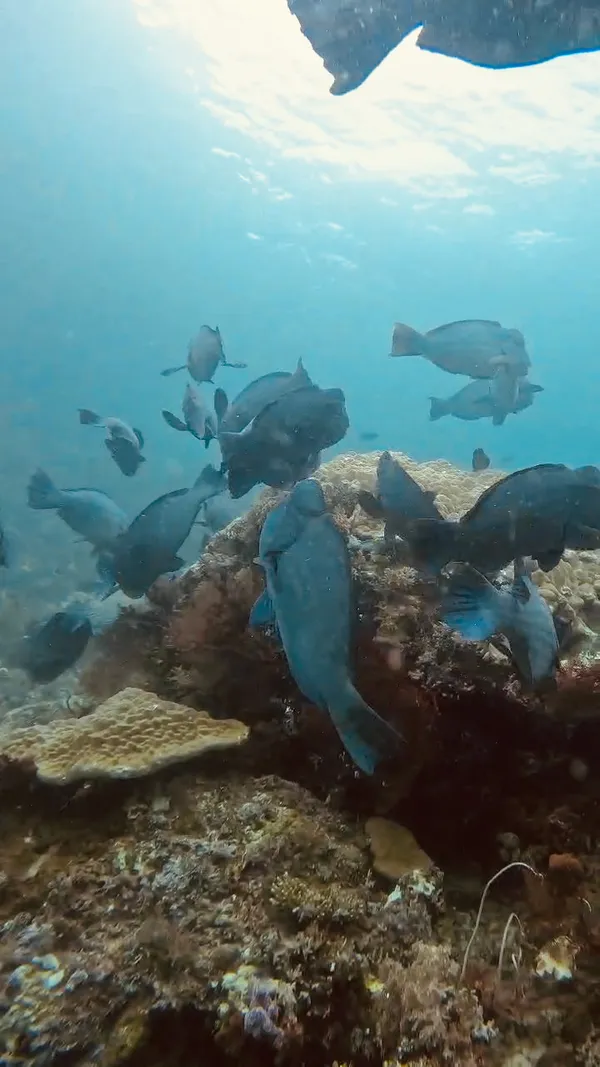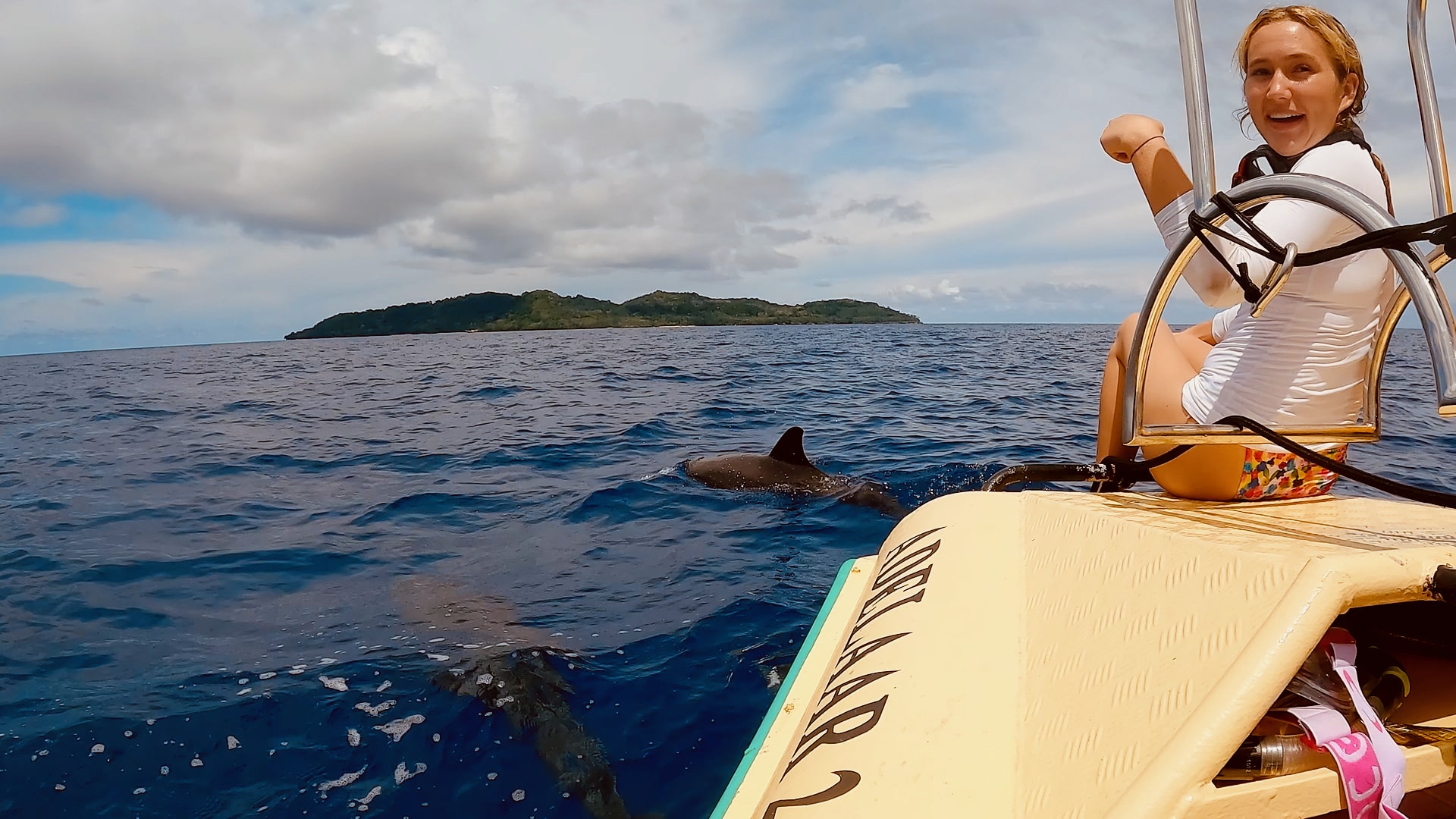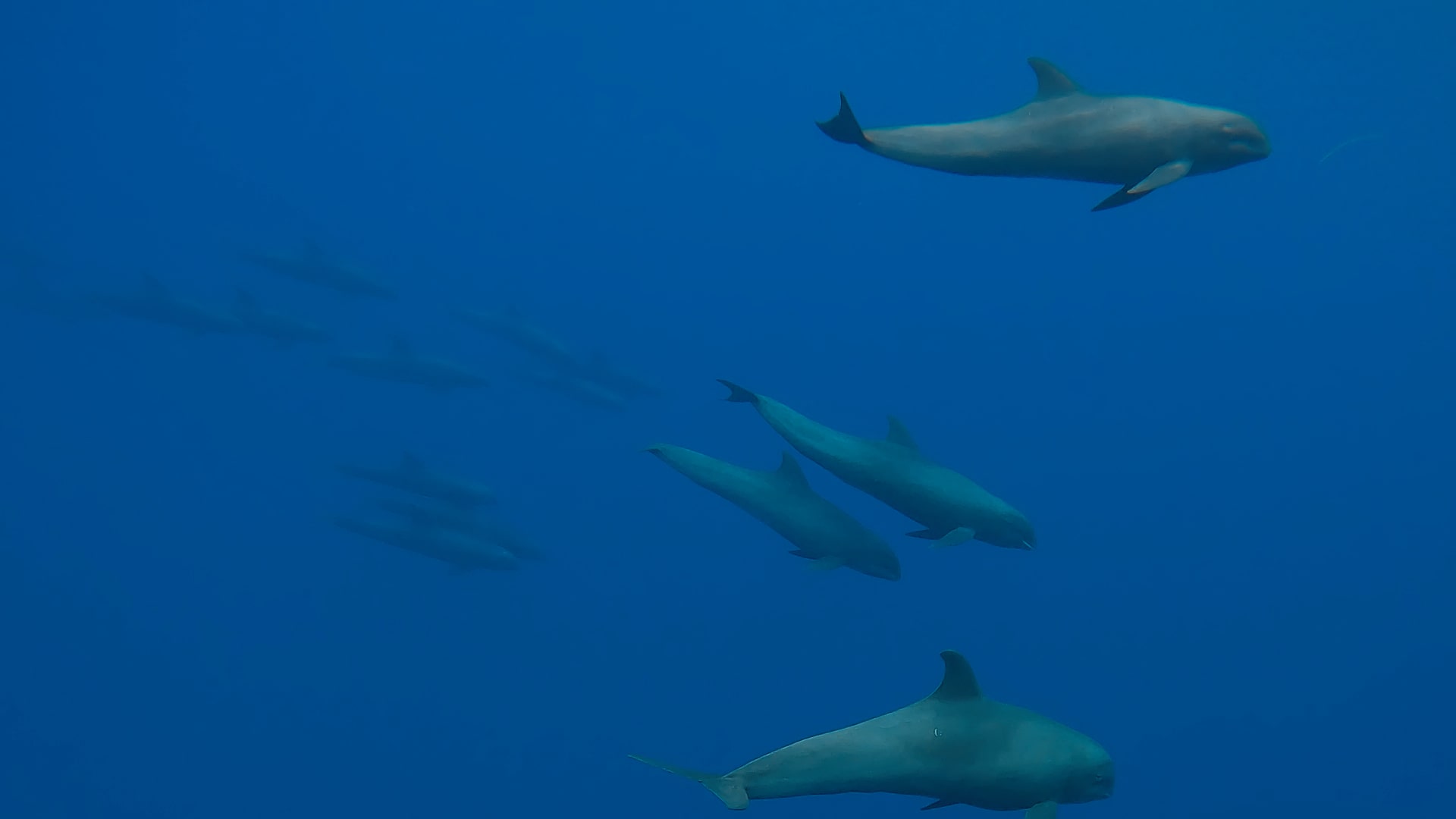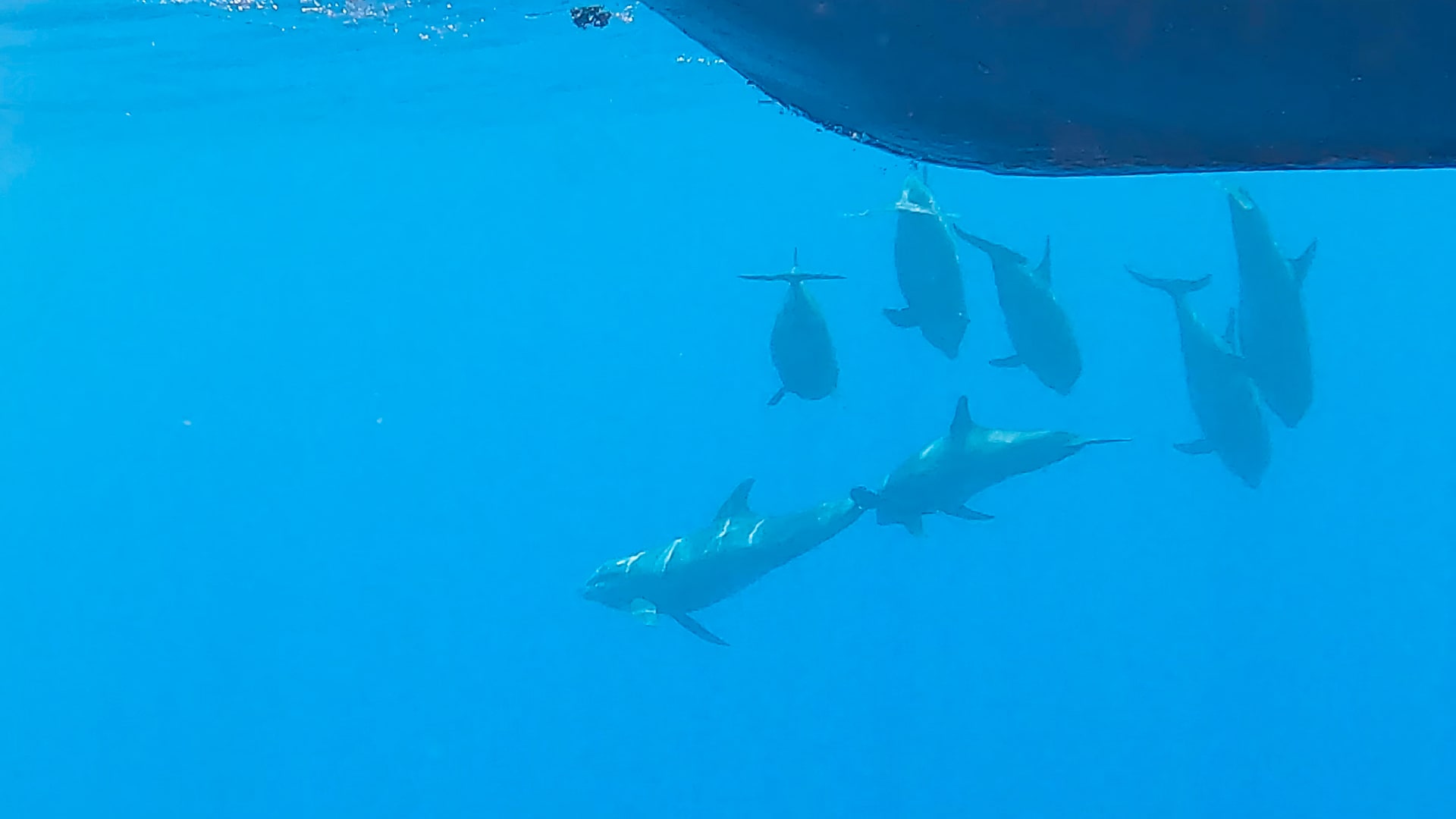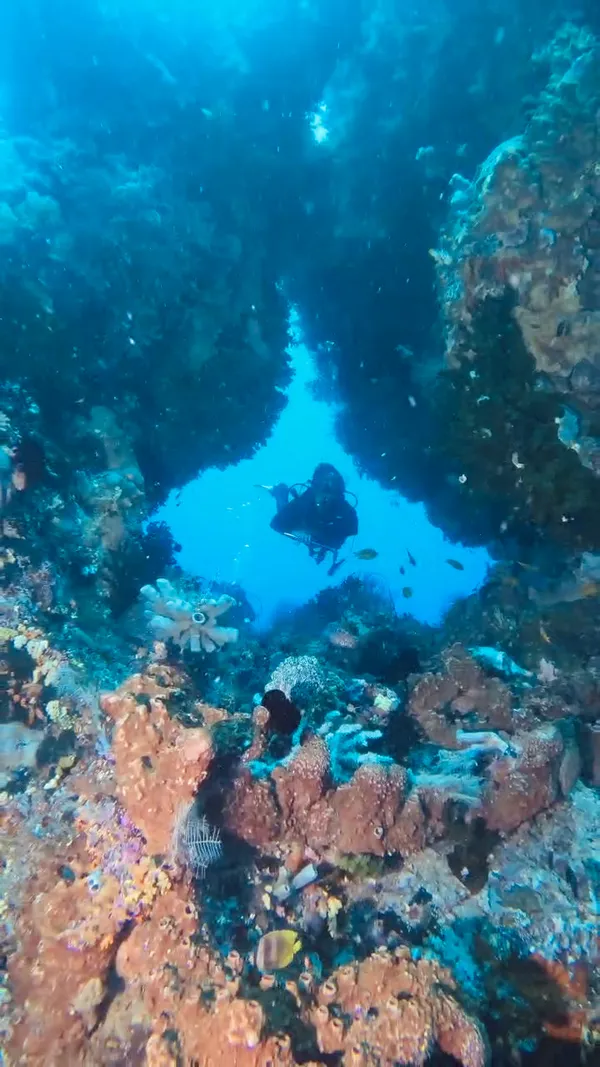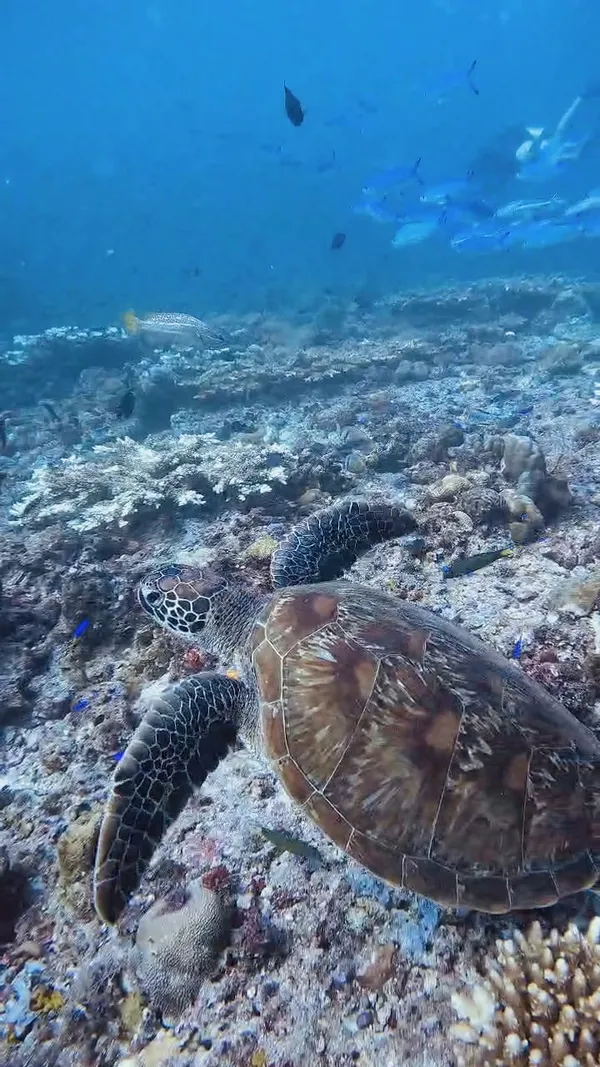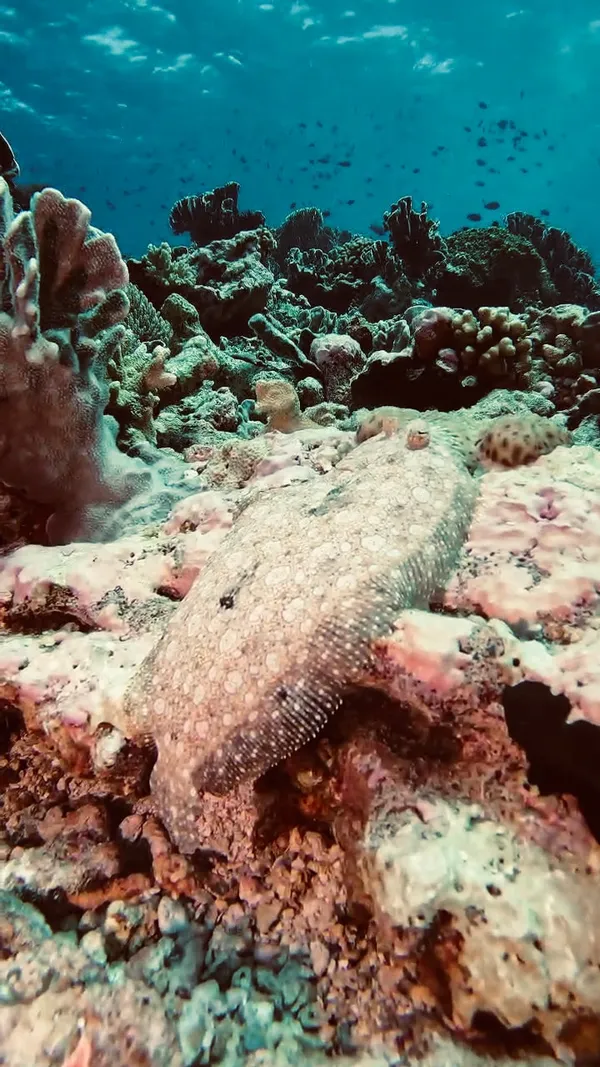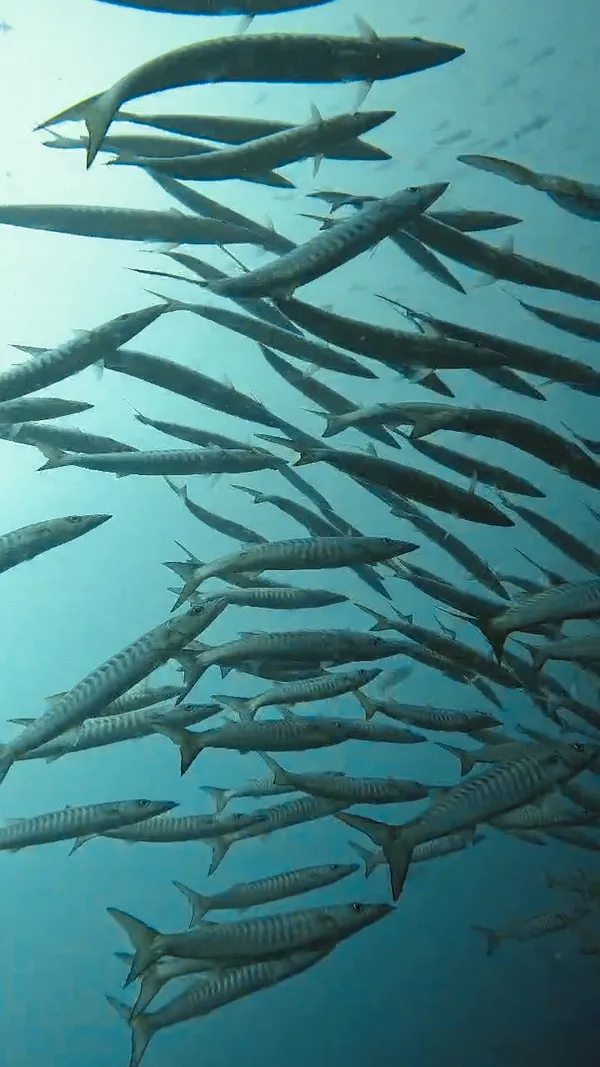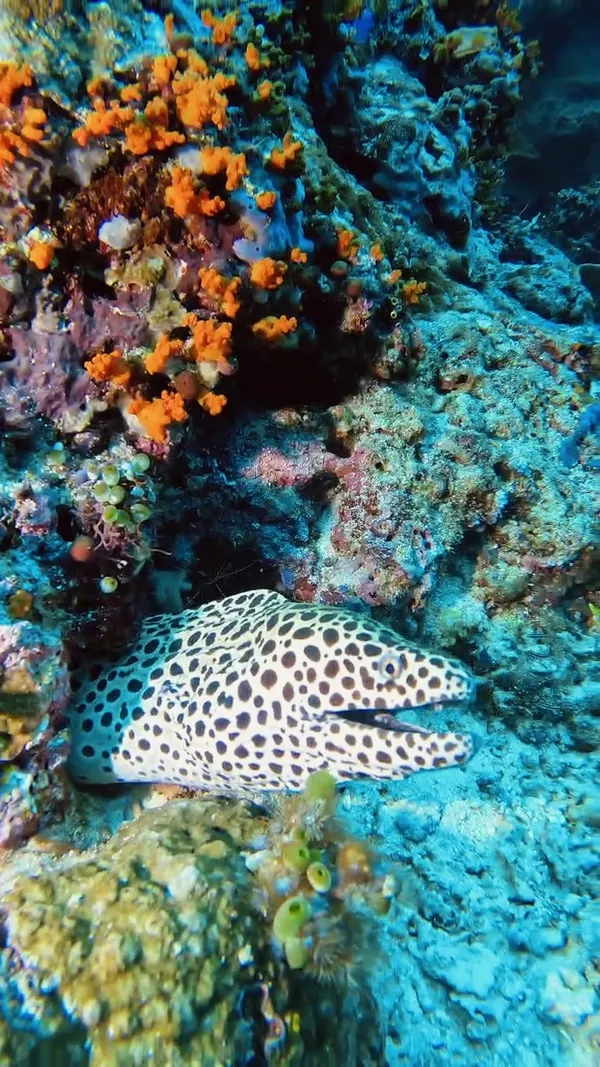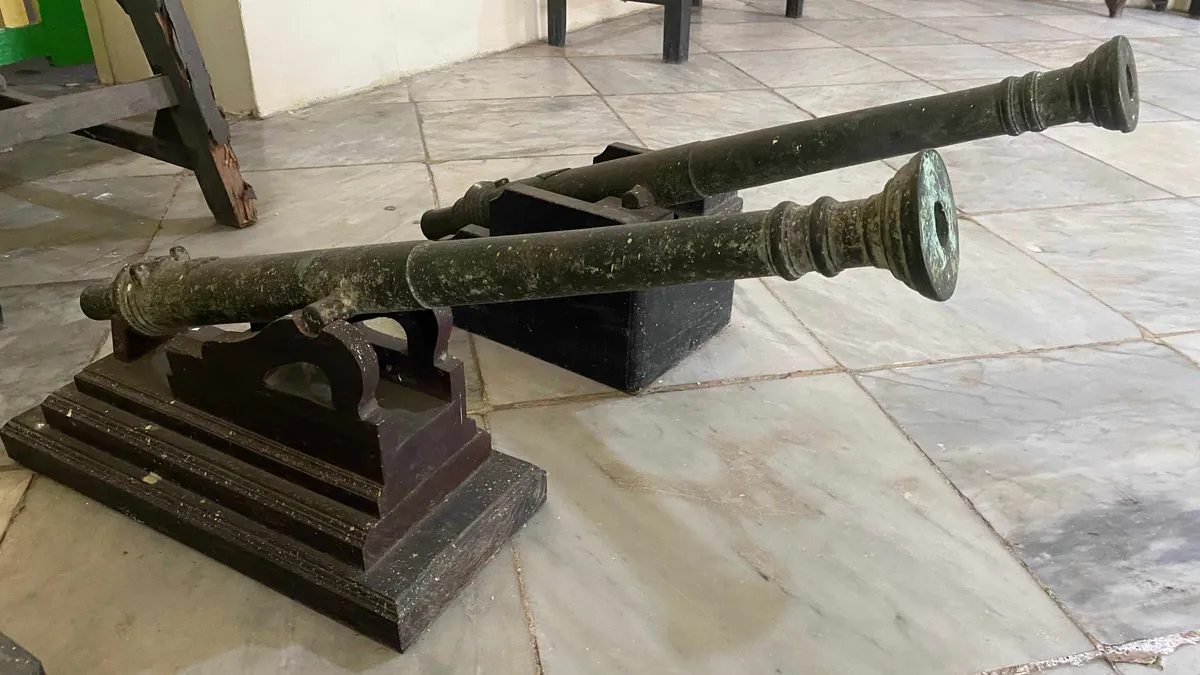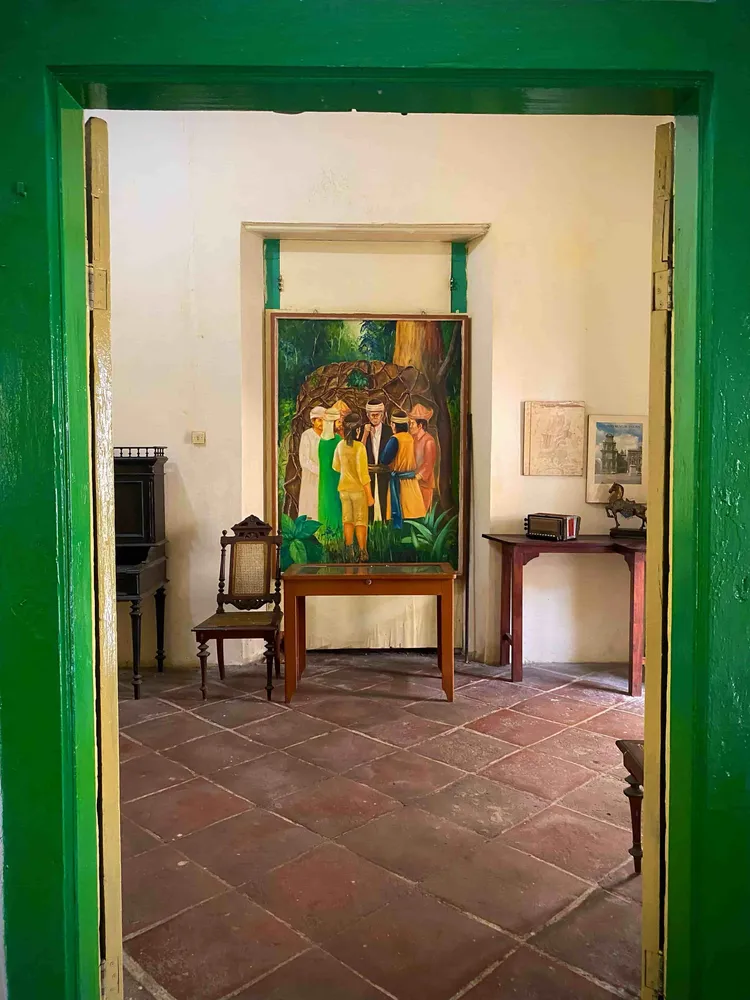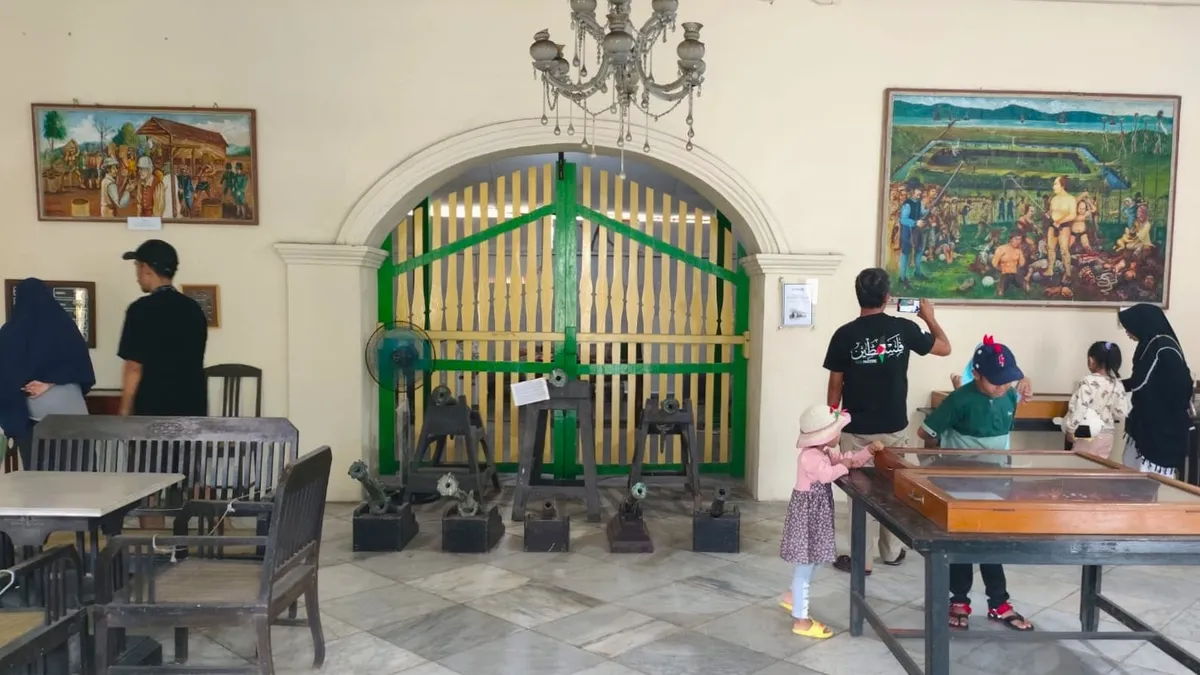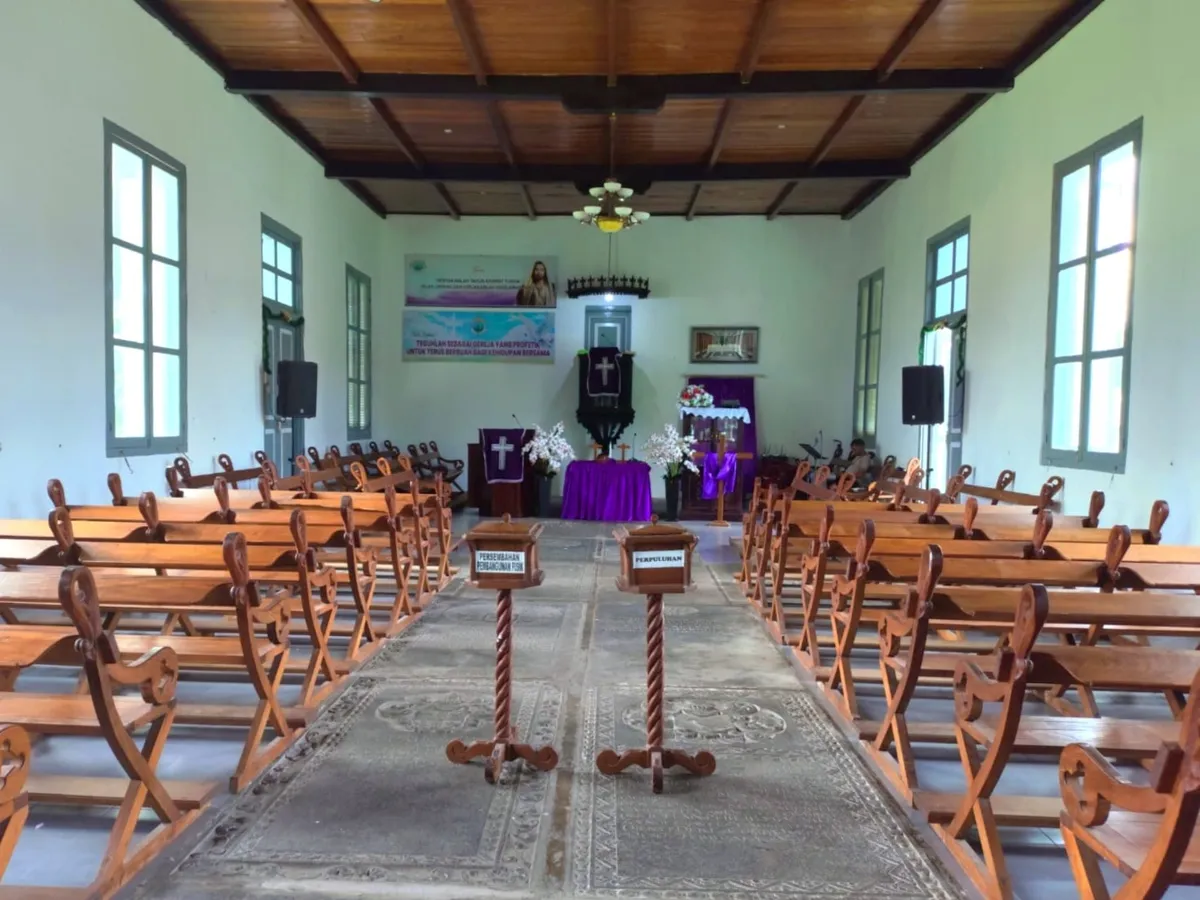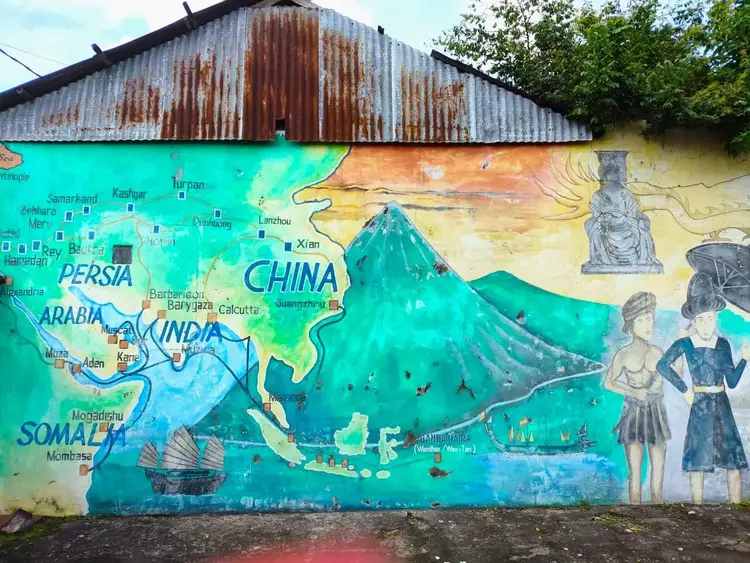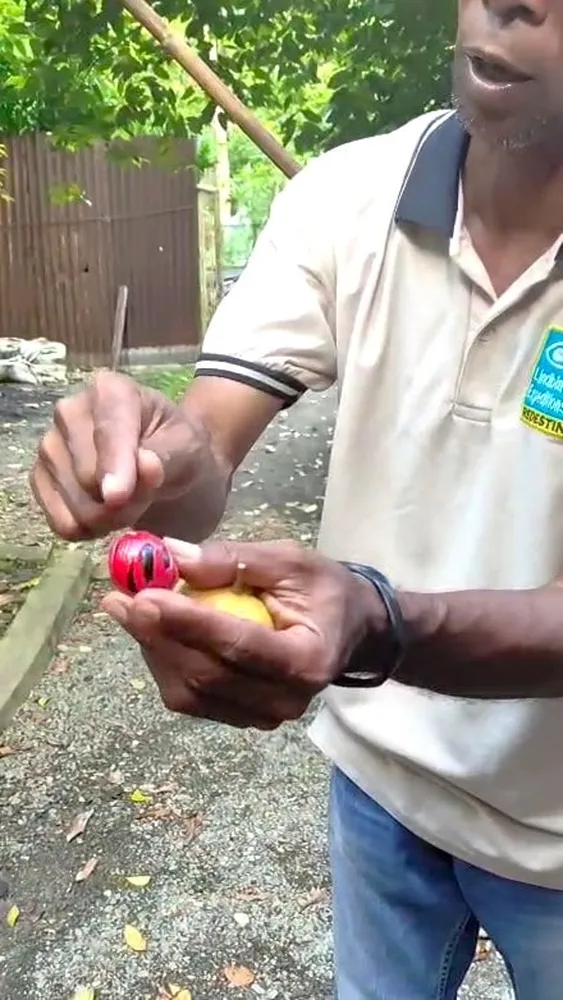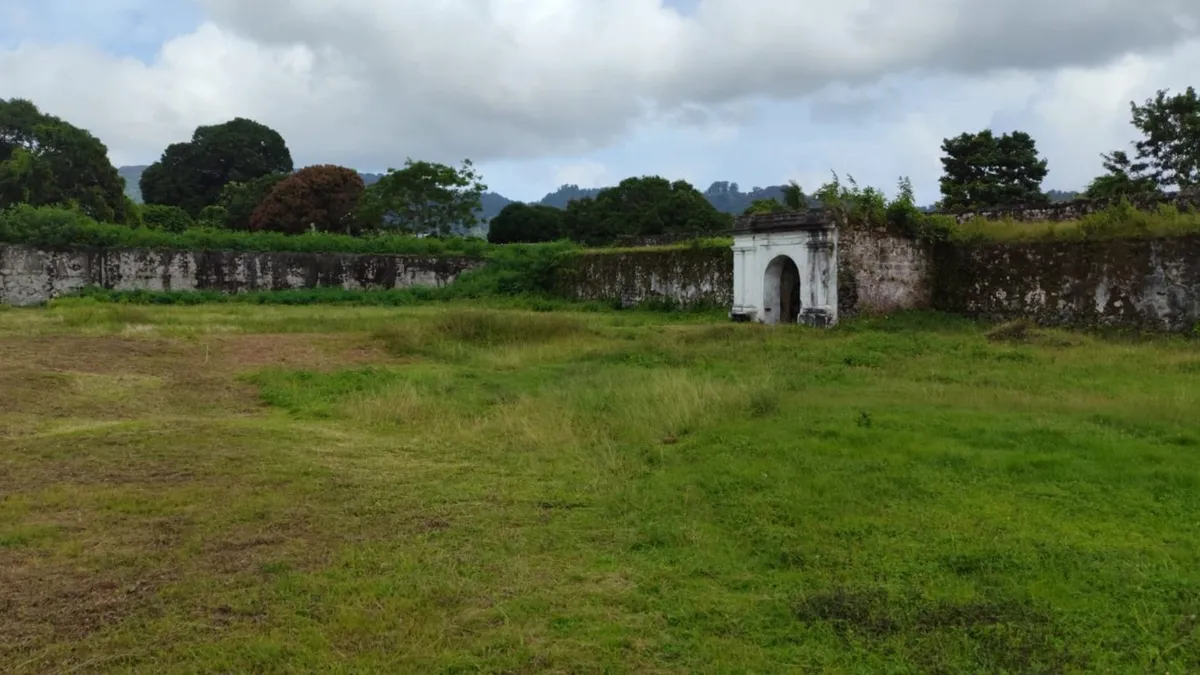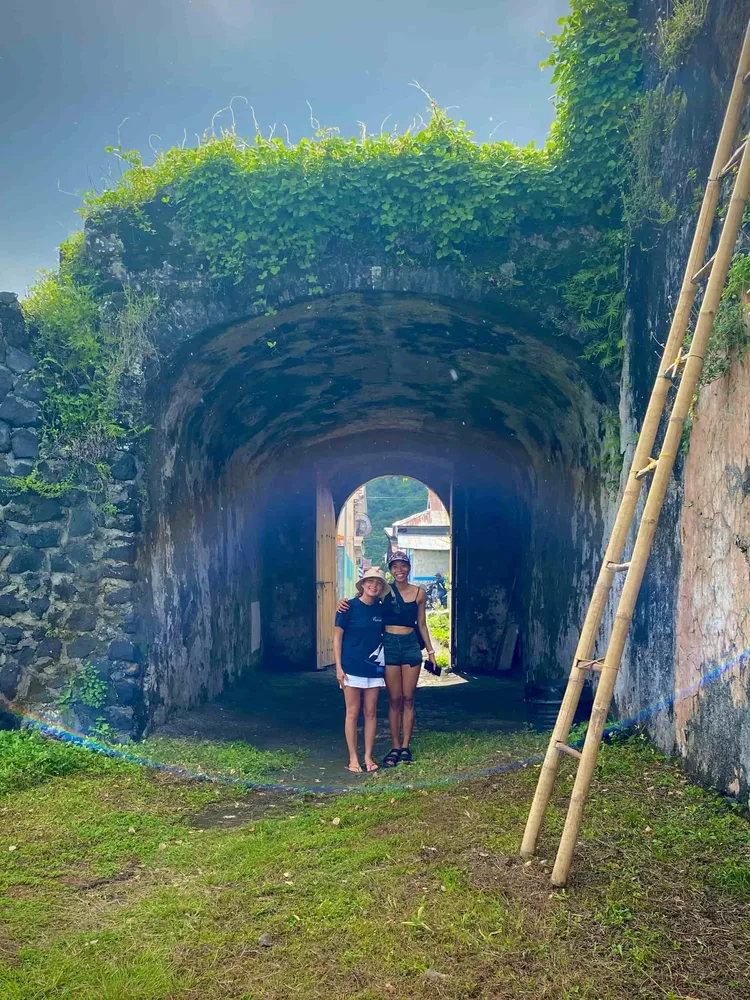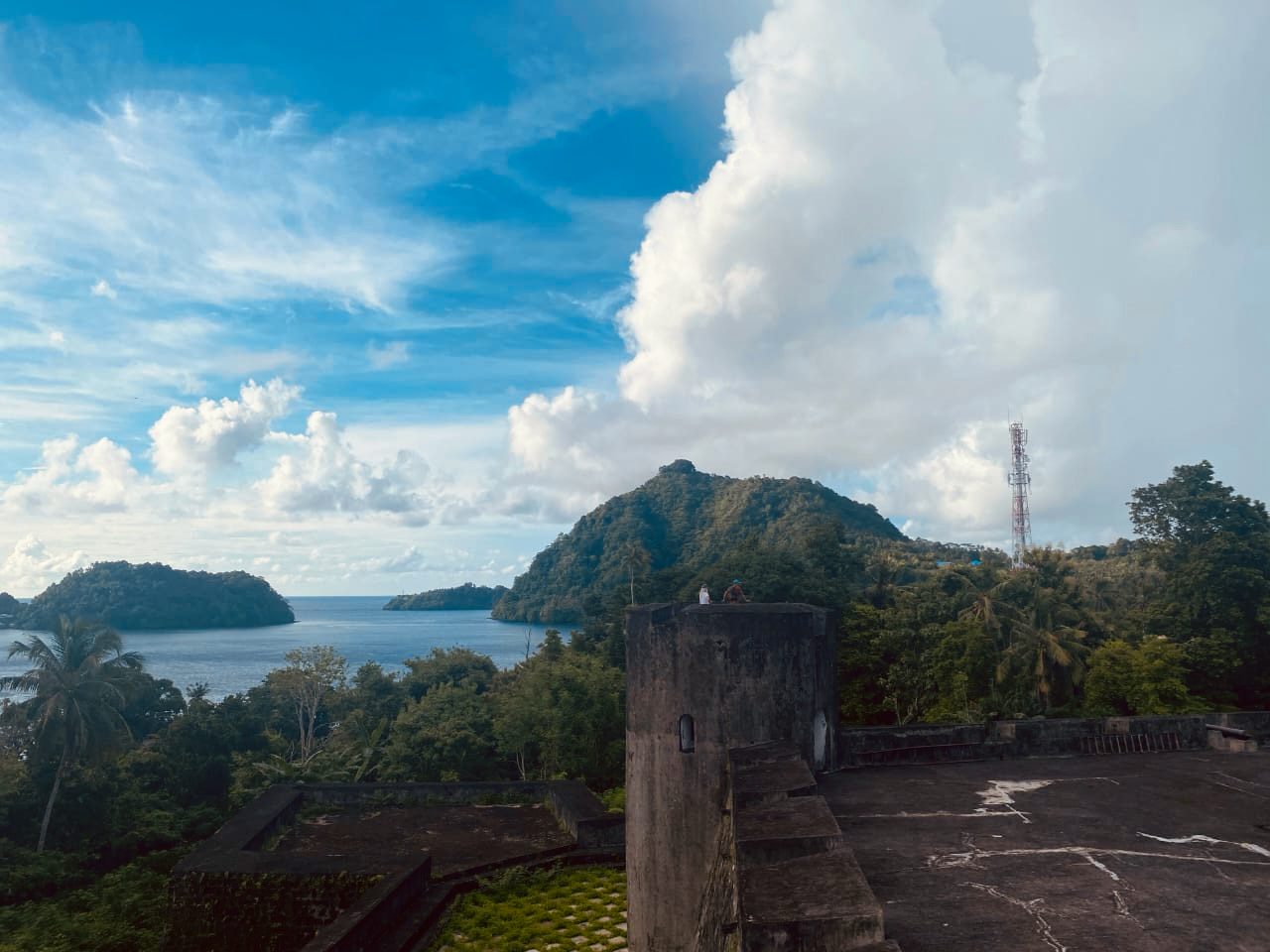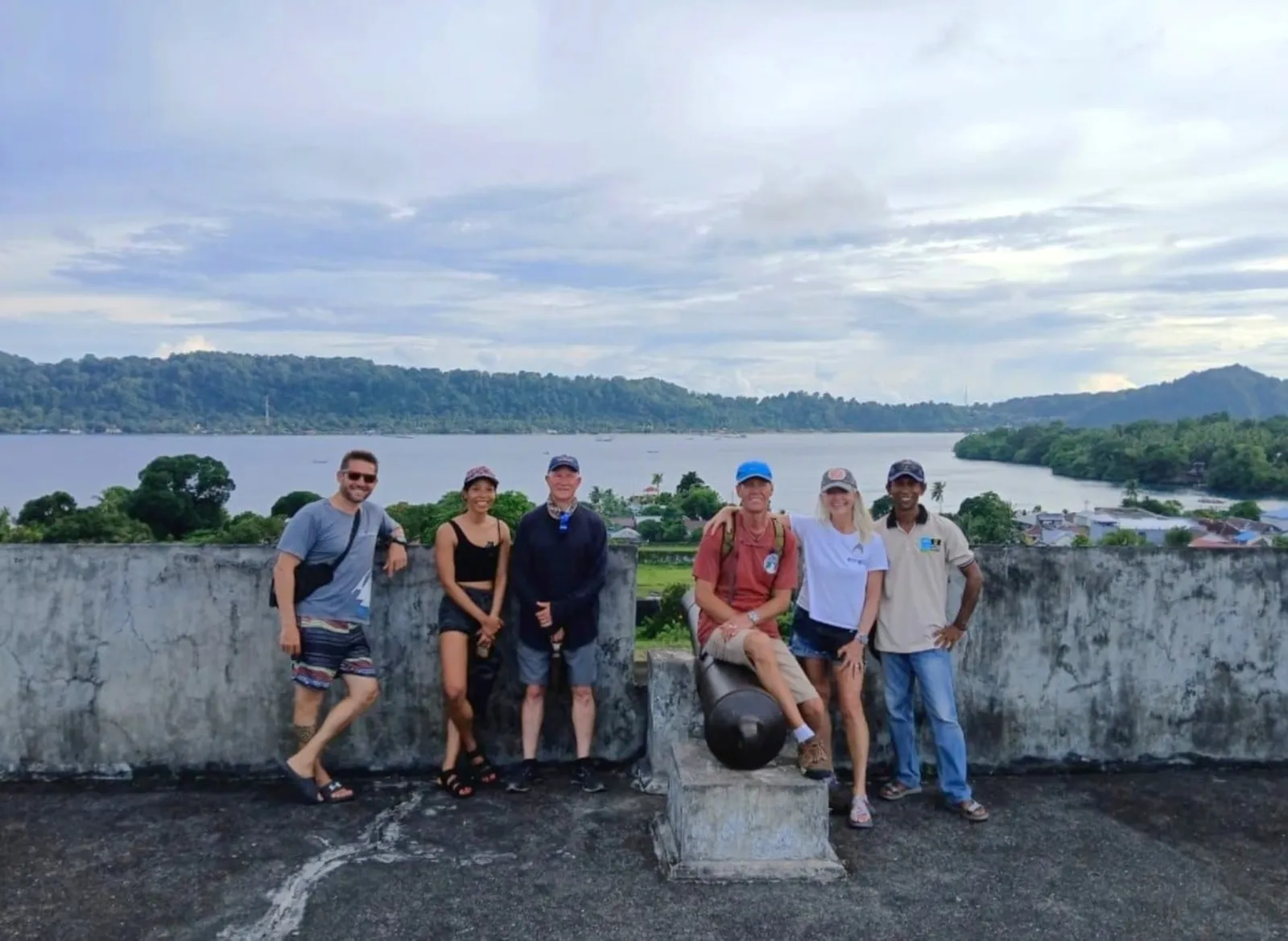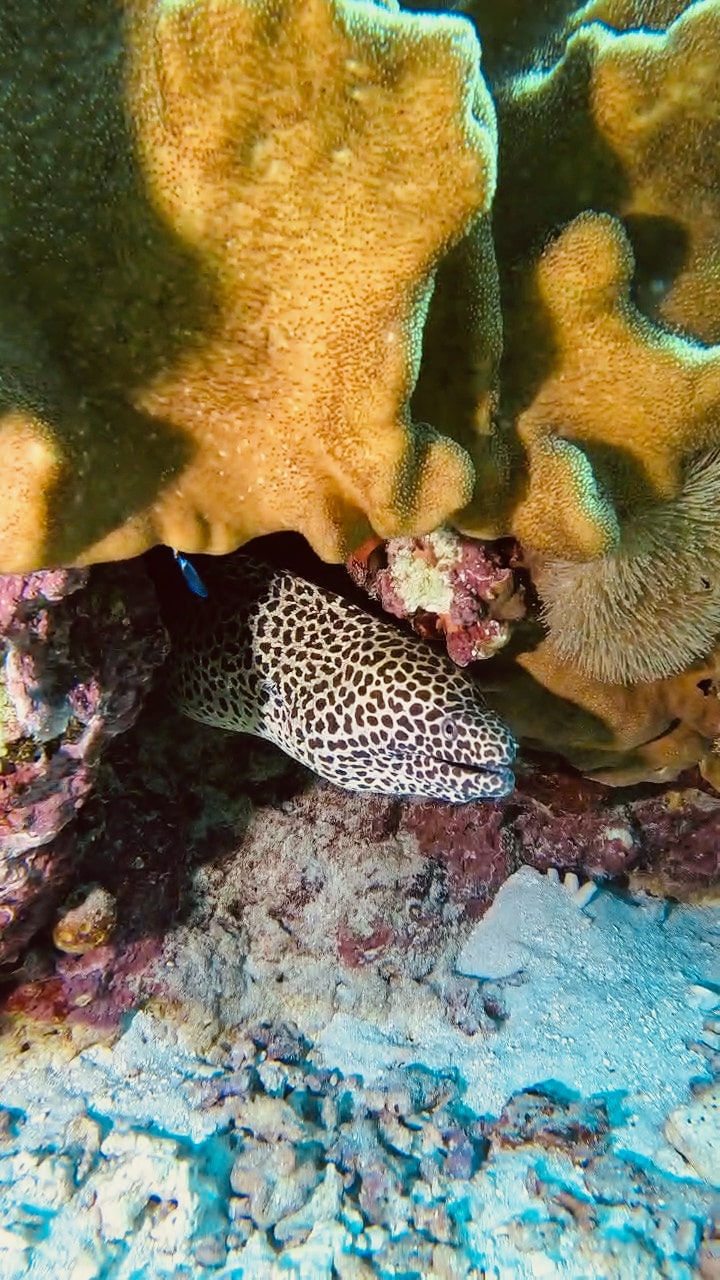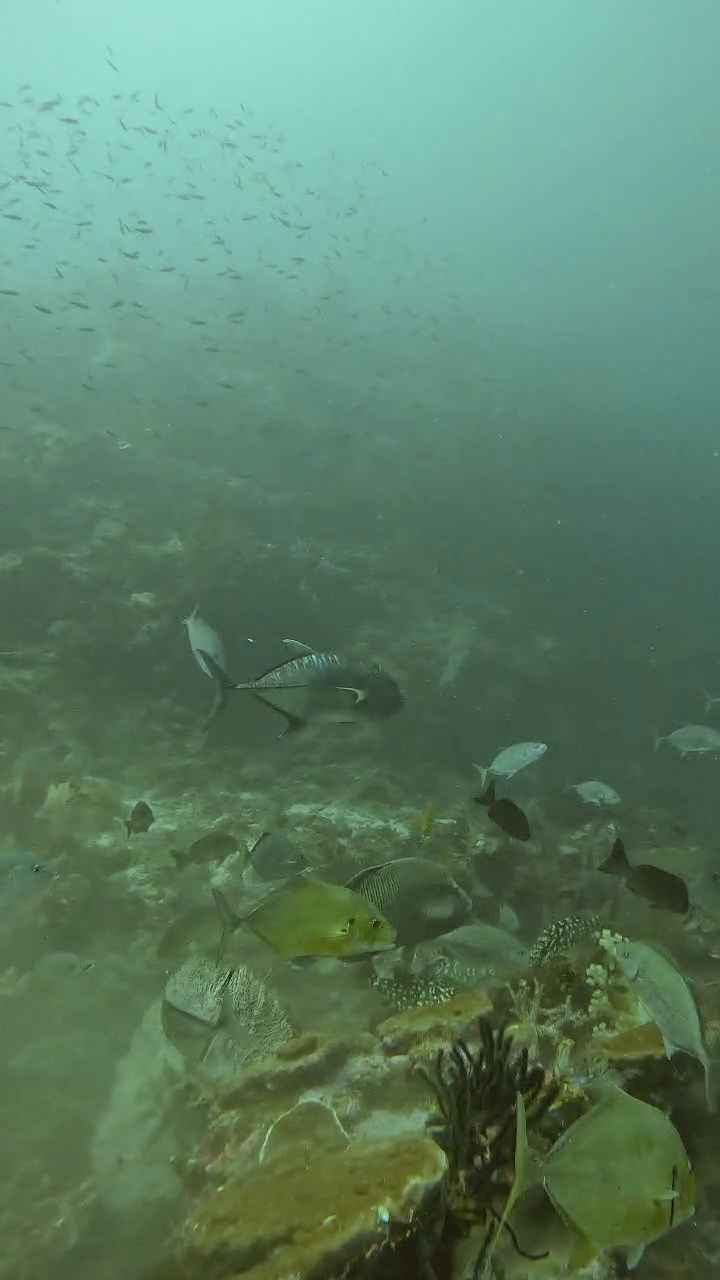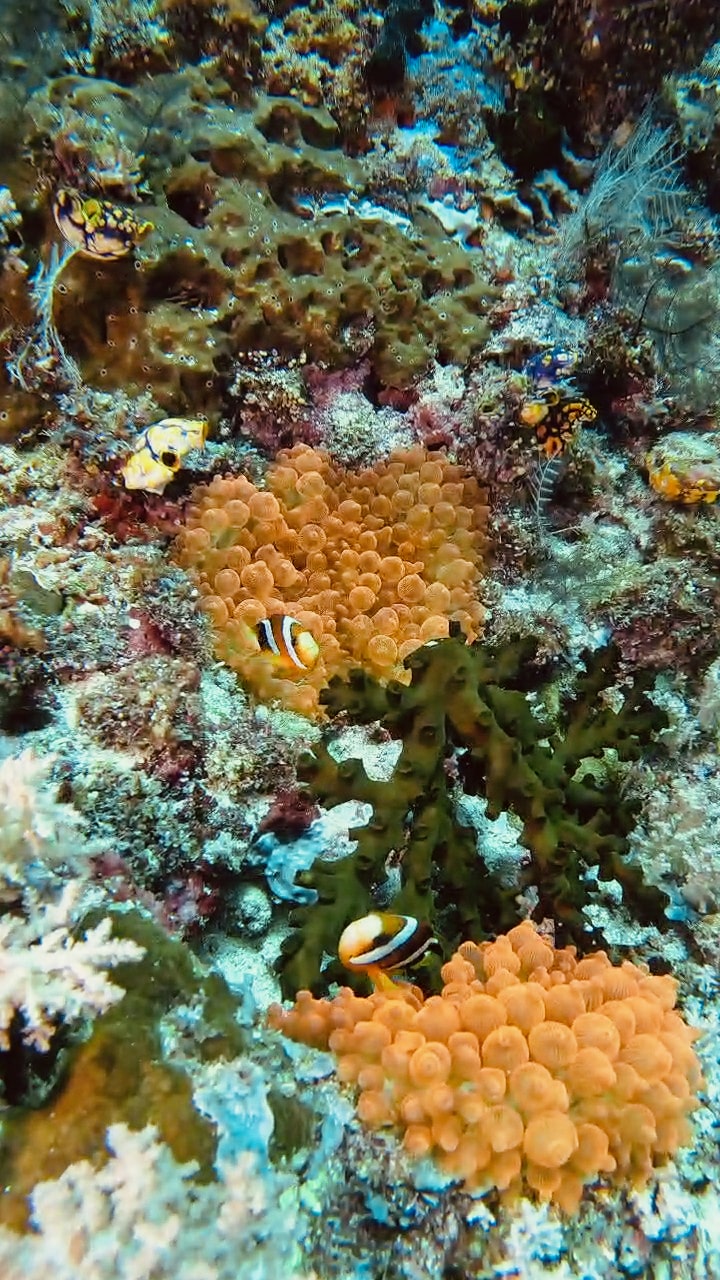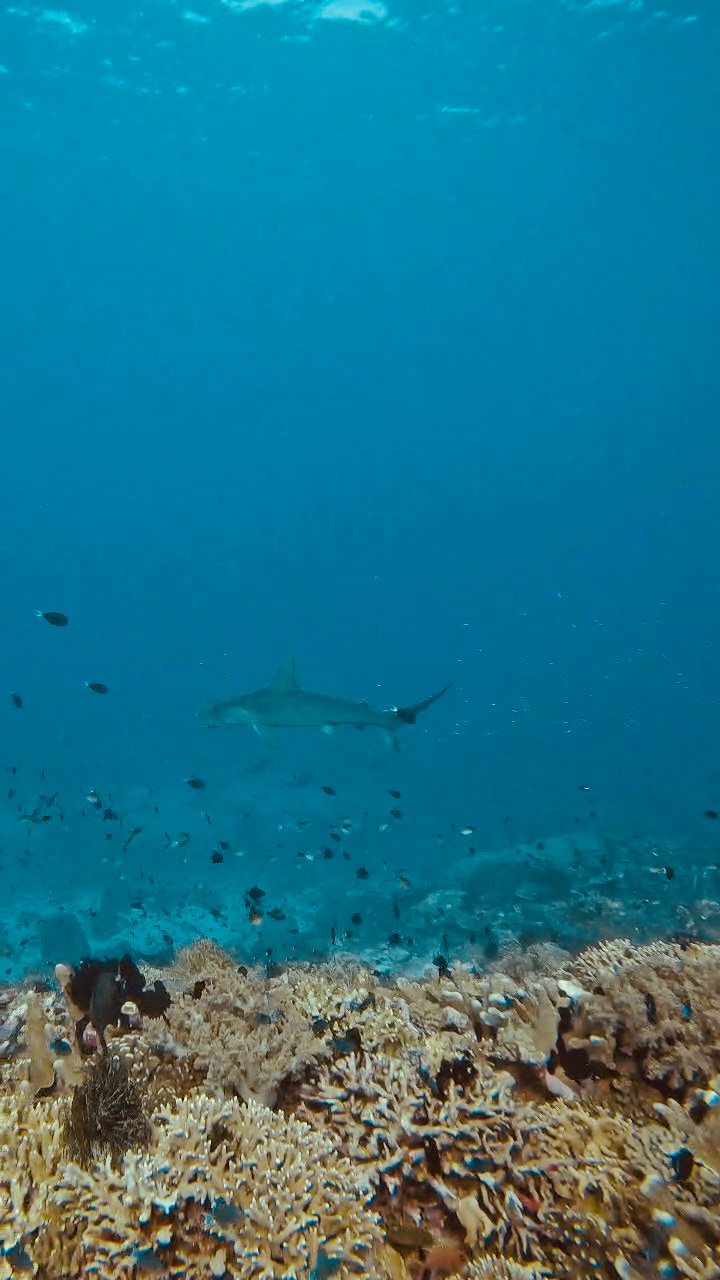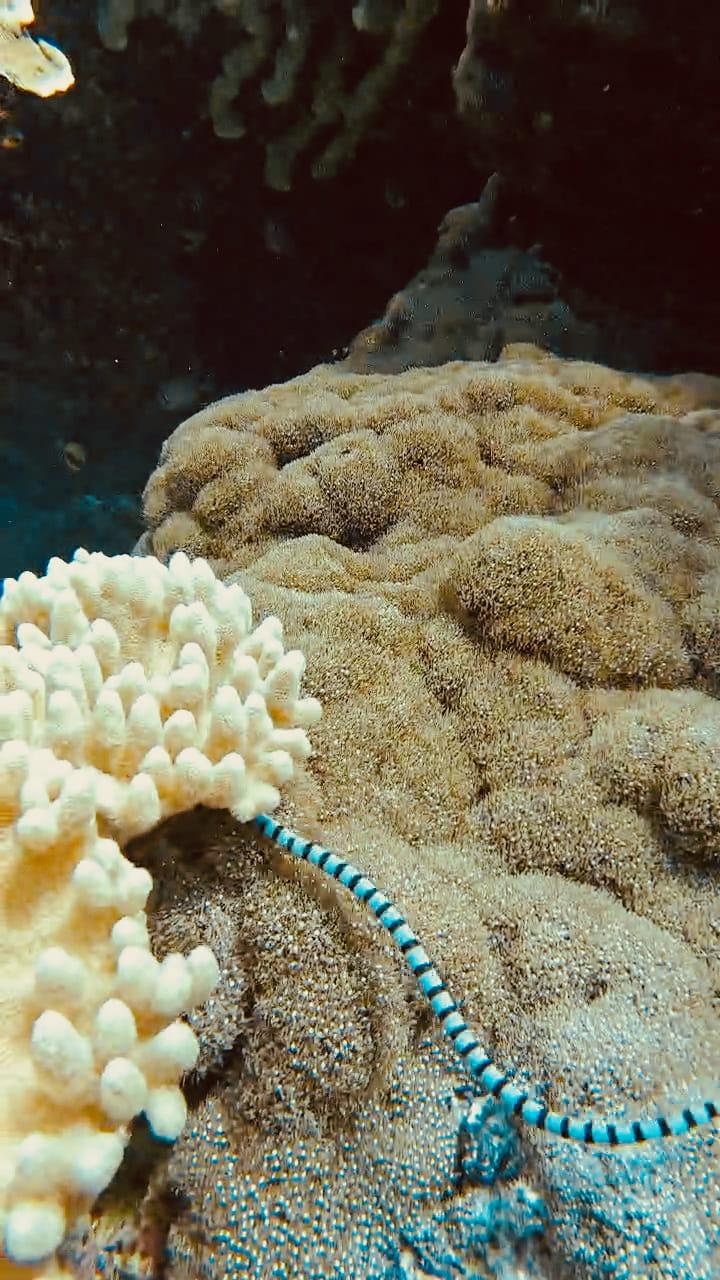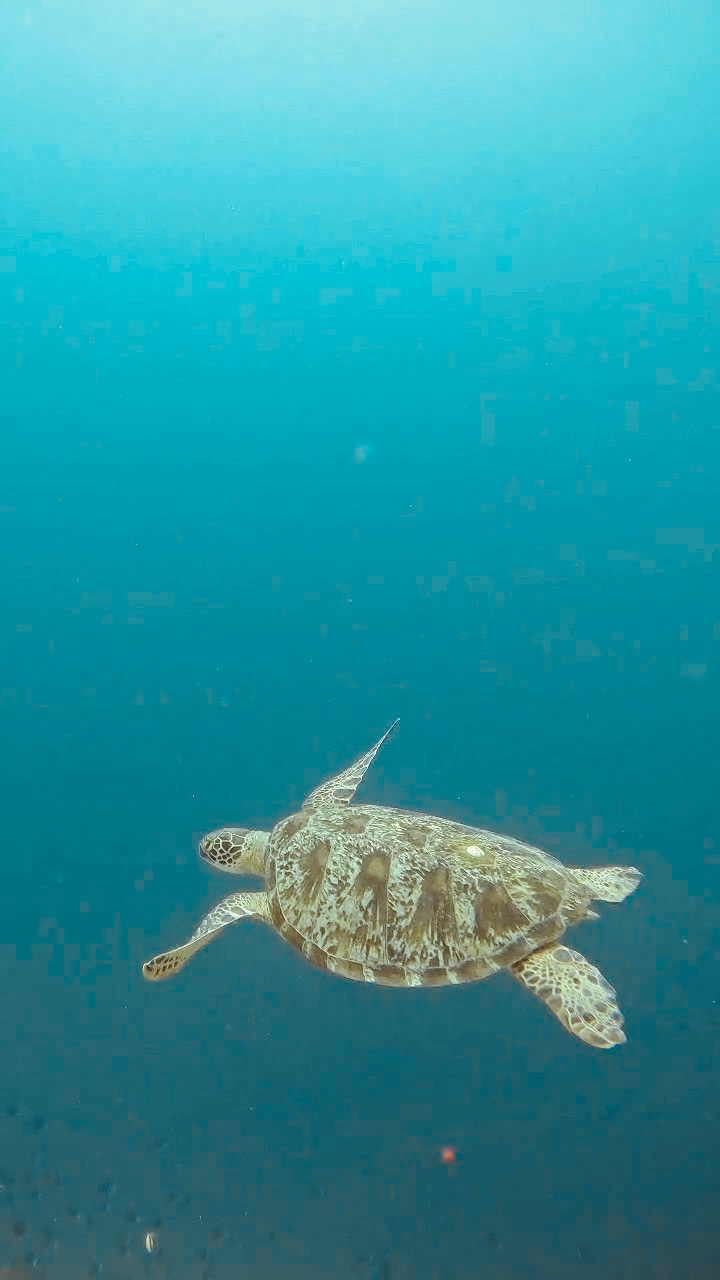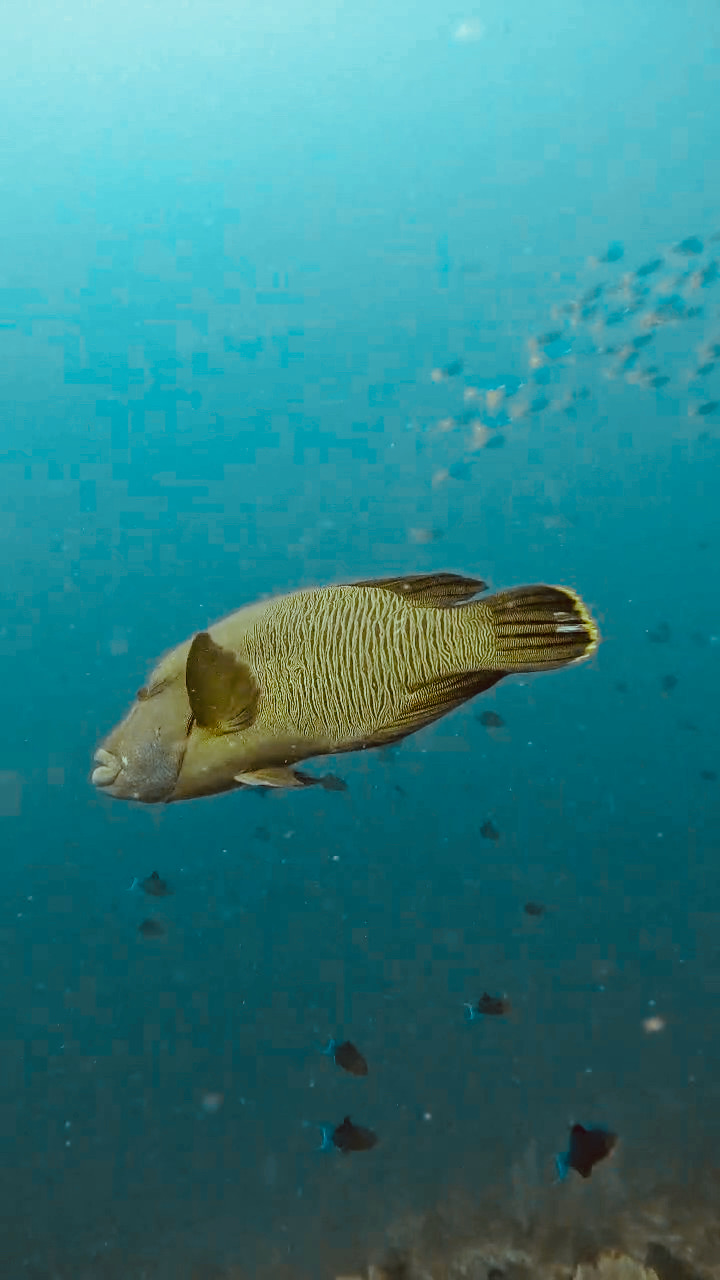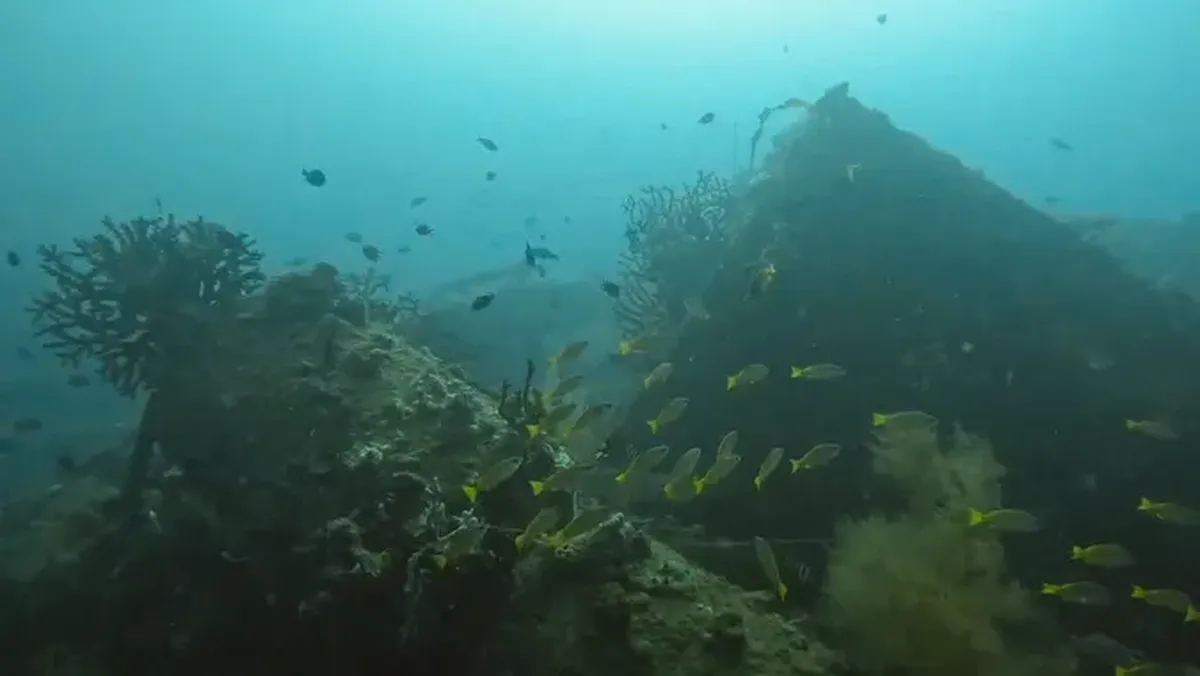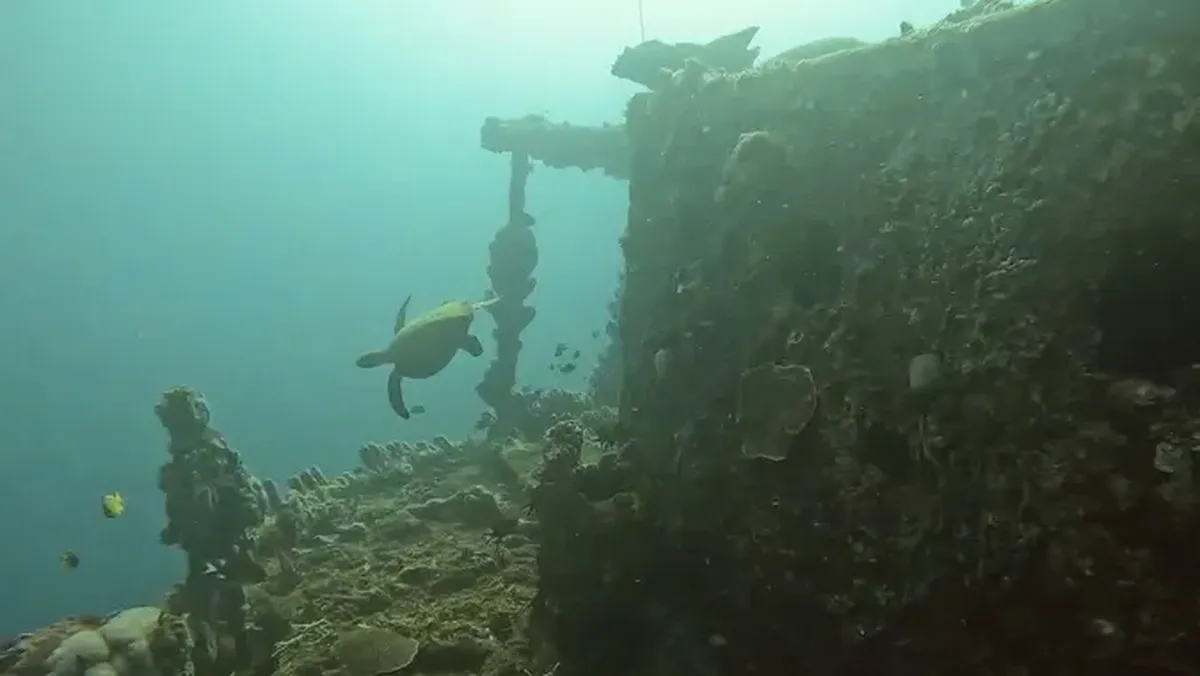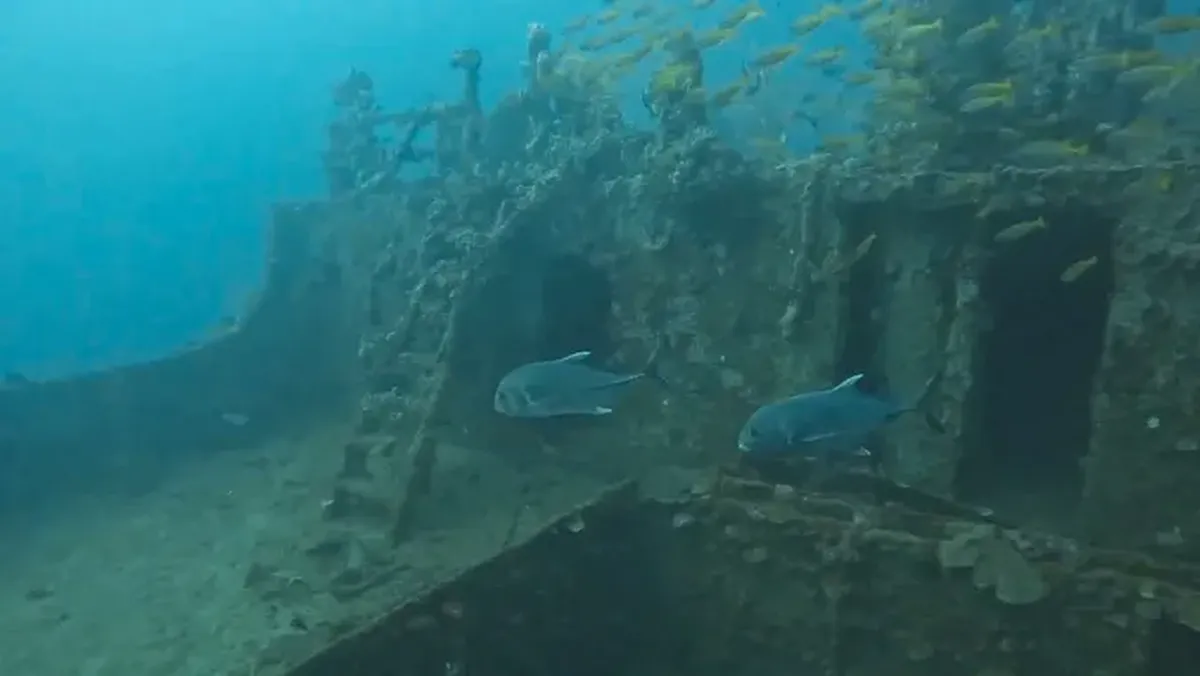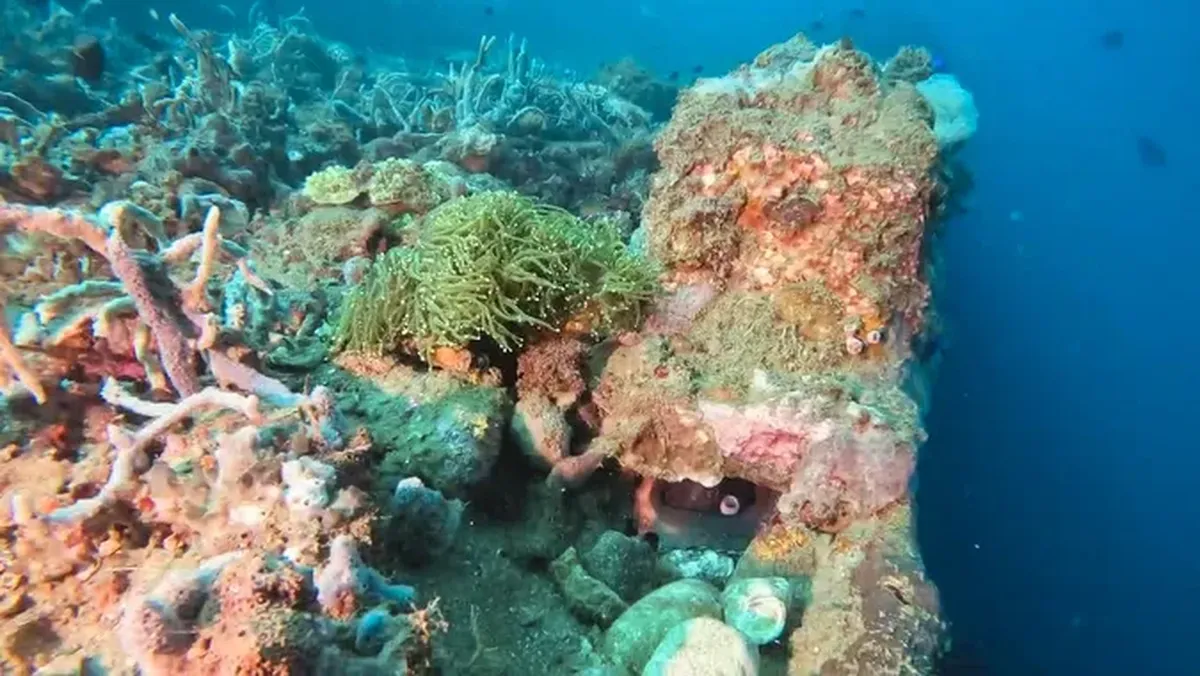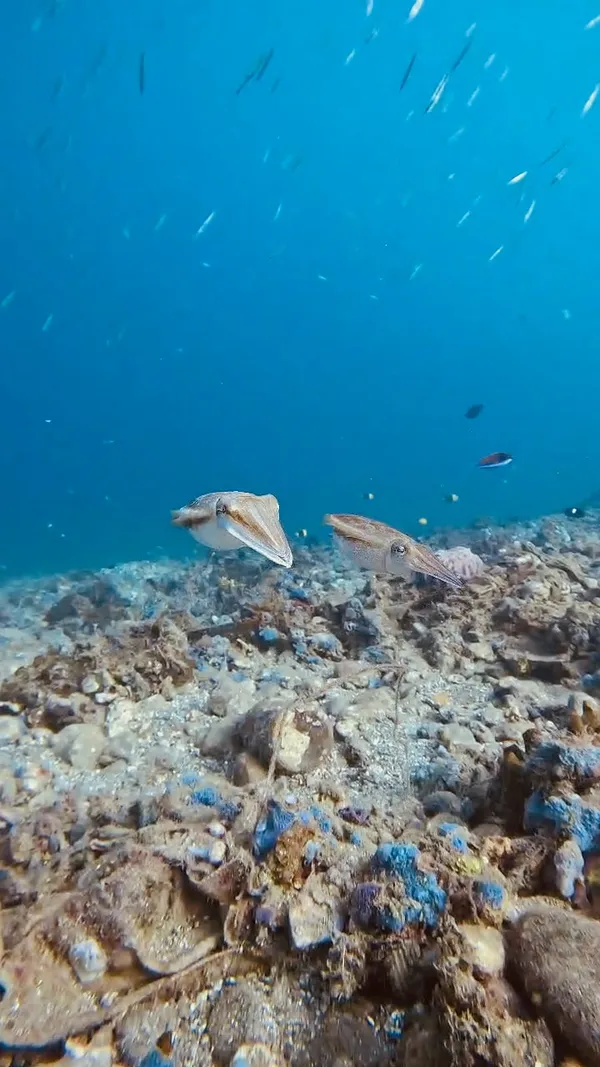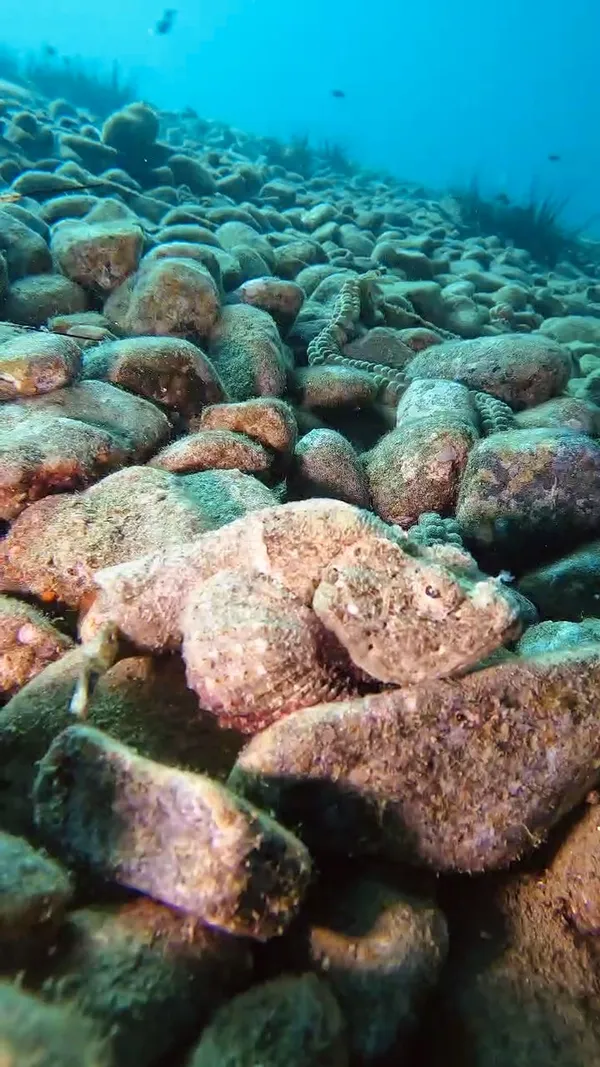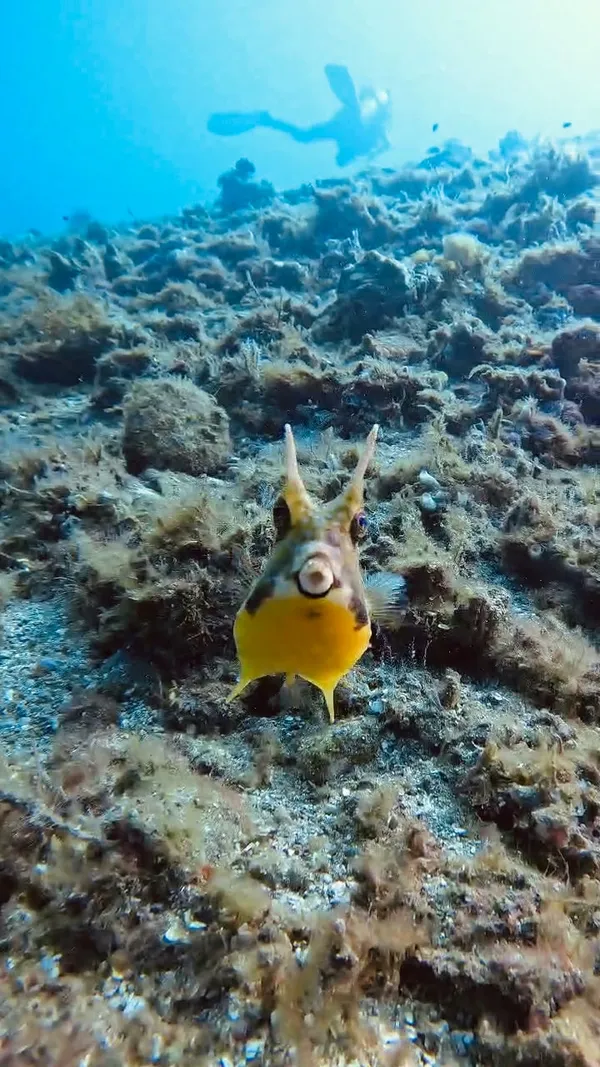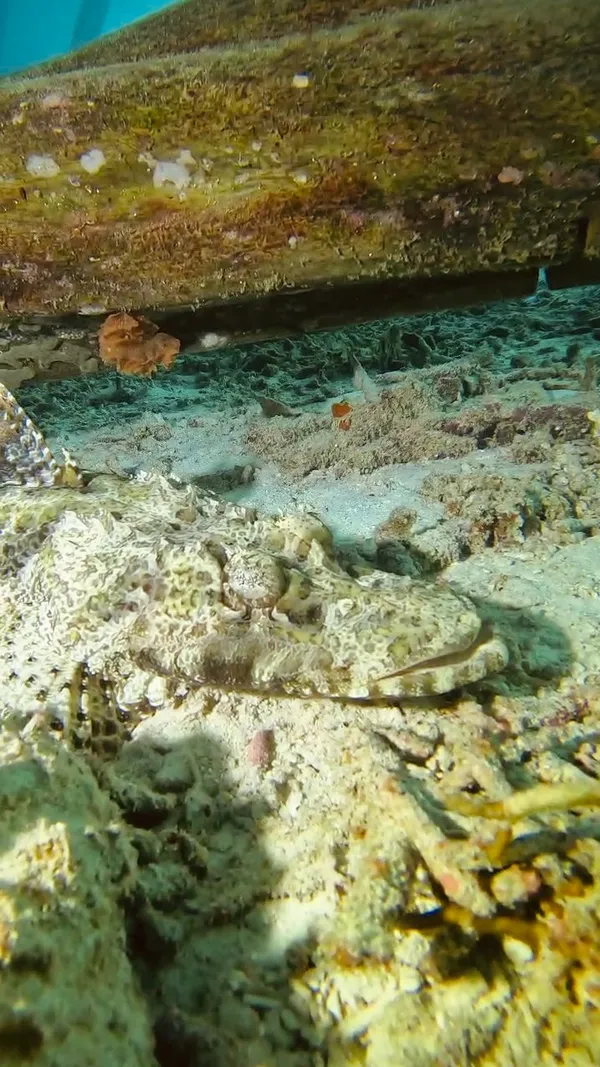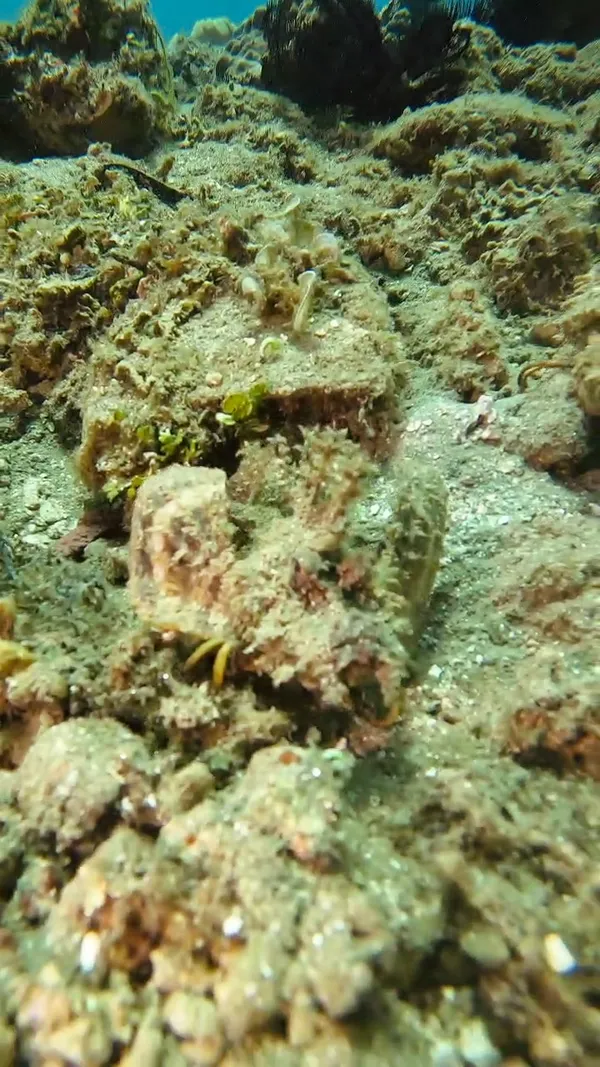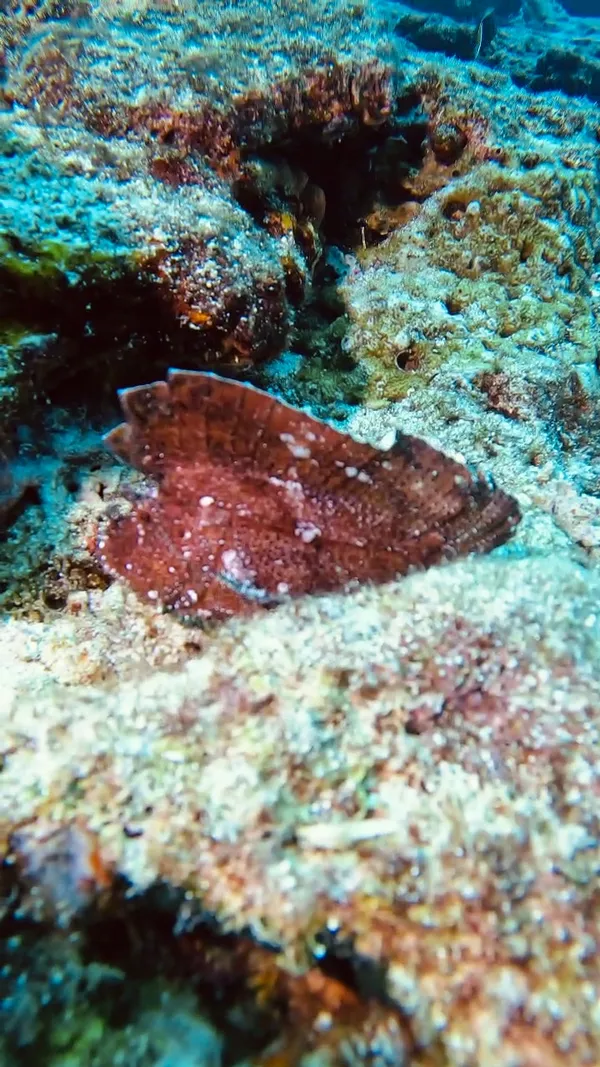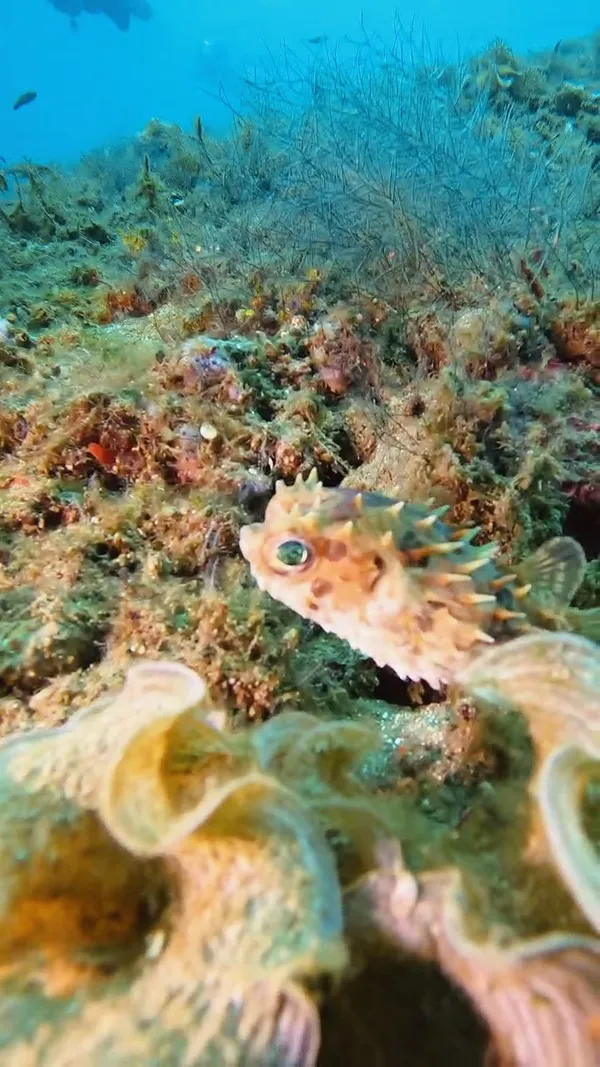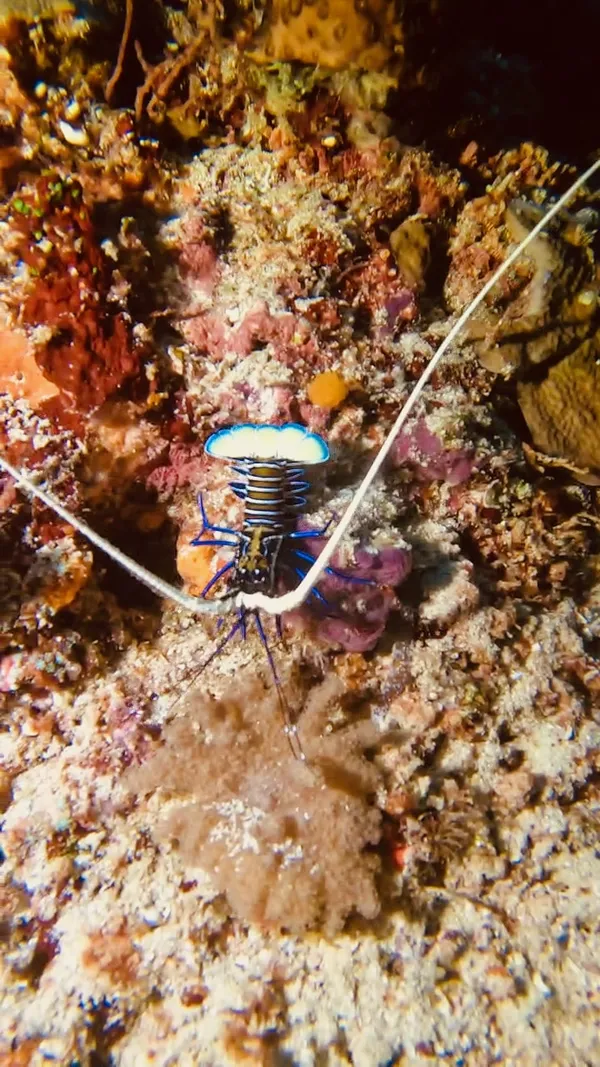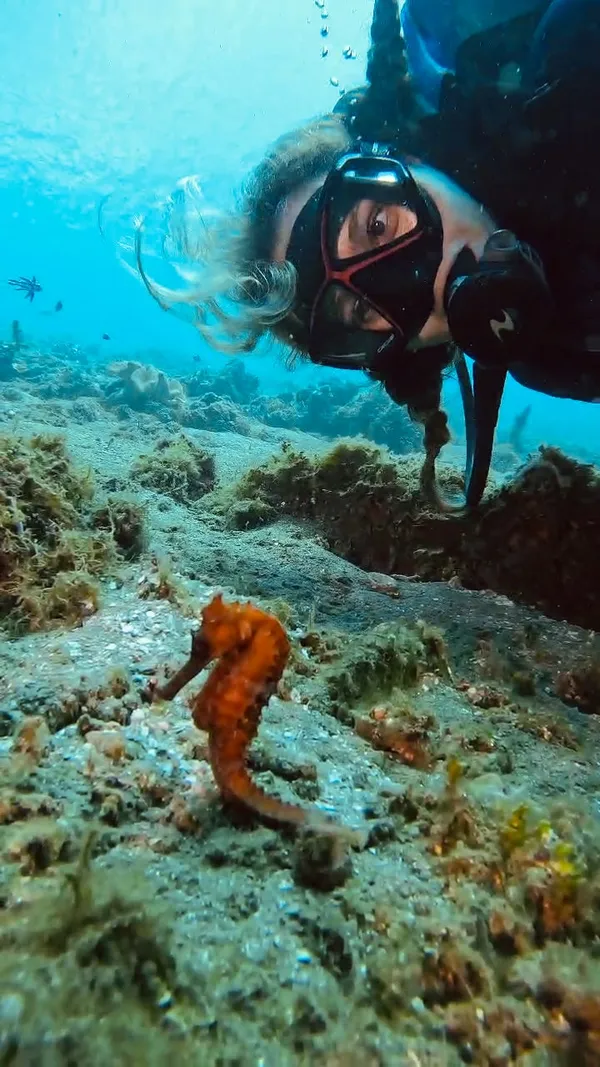This is the story of an unforgettable 11-night luxury liveaboard diving journey through Raja Ampat and the Banda Sea that my husband and I shared aboard the magnificent Adelaar.
Departing on April 4th from Sorong, West Papua, the gateway to Raja Ampat, and ending in Ambon, the capital of South Maluku, the itinerary took us through the vibrant coral gardens of Misool and across the remote Banda Sea, following Indonesia’s legendary spice routes.
It was my seventh liveaboard trip in Indonesia, and my first time aboard Adelaar — a vessel I had long admired from afar and was finally able to experience for myself.
Special thanks to fellow guest Brenda Aly and our cruise director, Julien Garnier, for capturing the spirit of the trip with incredible underwater photography throughout the journey.
Words by Adinda RK
Table of Contents
After a brief private transfer to the harbor, one of Adelaar’s aluminum tenders awaited us at the dock. Even from shore, she stood apart with her elegant schooner lines and tough yet refined silhouette immediately drawing the eye.
Within minutes, we were welcomed aboard. We could feel the excitement — the beginning of an extraordinary eleven-night voyage!
SY Adelaar: From 1902 Dutch Schooner to Luxury Indonesian Liveaboard
SY Adelaar is far from your average Indonesian liveaboard. Measuring 38 meters (125 feet) in length and 5.5 meters (18 feet) across the beam, she was crafted in 1902 as a Dutch schooner and extensively refitted in 2009, establishing herself as one of Indonesia’s leading luxury dive liveaboards today.
She now accommodates up to eight guests across four elegantly furnished double staterooms — a modest capacity that fosters the quiet, intimate, and almost private atmosphere of a true luxury yacht.
Despite her 123-year history, including surviving two world wars, it’s difficult to tell her true age once onboard. Upon stepping aboard, her condition was immediately striking. Rather than evoking nostalgia, Adelaar exudes the effortless elegance of a five-star resort at sea.
Think high-quality teak interiors polished to a soft sheen, high ceilings — including on the lower deck, which is not a given on a liveaboard — plush Persian rugs underfoot, air conditioning throughout, even in the hallways, and a light scent of aromatherapy drifting subtly through the corridors.
What It’s Like Onboard: Comfort & Amenities on Adelaar
Crossing the main deck’s outdoor space, I was pleasantly surprised by how open and spacious it felt — far more than the photographs on the website had suggested. A large wooden table anchors the shaded outdoor dining area, which flows naturally into the dive deck beyond.
The lovely indoor salon with its large screen TV
Just steps away, the indoor salon offers a compact yet welcoming space to relax. It features a central wooden table used for light breakfasts and, on rainy days, indoor dining. A large-screen smart TV is primarily used for dive briefings, while a well-equipped coffee bar and an assortment of snacks are always available nearby.
The hallway leading up to the four cabins on the lower deck with a camera charging station visible on the right side of the second photo.
Notice the full-sized ceiling!
Further inside, along the air-conditioned, aromatherapy-scented hallway that leads to all four cabins, thoughtful touches quietly set the refined tone for life onboard: a comfortable seating nook, a wooden chess table, an ice machine, and a modest camera charging station.
Toward the rear of the upper deck, just behind the captain’s quarters, there’s a shaded outdoor smoking area where the crew often relaxes. On each side of the ship, roped ladders lead up to the very top deck — a quiet perch for those seeking solitude, though I never got around to exploring it myself.
For a better sense of the boat’s layout, Adelaar’s interactive deck plan has all the details you need.
The Cabins: Luxury Meets Home-Like Comfort
All of Adelaar’s cabins are located on the lower deck and continue the theme of luxury. Our cabin, Stateroom 3, was neatly designed, with built-in storage throughout, including in the bathroom, that kept the space effortlessly organized. Our cabin felt spacious and as plush as shown on their website — a welcome surprise, as it is often the opposite on other liveaboards where photos tend to flatter reality.
1st photo: A neatly made double bed with a porthole above and built-in storage on the side. 2nd photo: A daybed that converts into a single bed once the pillows are removed. 3rd photo: The in-cabin TV and a mini chocolate bar, thoughtfully left each day after the bed has been made.
The bed was firm yet comfortable, dressed in crisp linens, and despite the heat outside, the cabin remained consistently cool and dry, even without running the air conditioning continuously. On the wall at the end of the bed was a large-screen TV with a curated selection of over 3,000 movies, complete with English, German, and French audio and subtitles, as well as an impressive sound system — something I never thought I would care about, but which proved useful and entertaining after full days underwater.
Two things our cabin definitely wasn’t short on: storage space and power outlets!
The ensuite bathroom, finished with elegant Egyptian marble, offered strong hot water pressure — a necessity after three to four dives a day in the hot and humid air of Indonesia.
You can find more details about this cabin on this page, or explore the Master Stateroom for even more space and comfort — it’s nearly twice the size of ours!
Life Onboard Adelaar: Luxury Dive Liveaboard Experience
The luxury liveaboard experience aboard Adelaar goes beyond polished interiors and pristine upkeep. It’s about how effortlessly and comfortably everything flows.
Intimate Setting with Impeccable Service
With just eight guests and a crew of twelve — an exceptional 1:1.5 ratio — the atmosphere is intimate yet discreet, offering privacy without sacrificing attentive service. The crew was always present when needed, yet never intrusive.
Guests quickly realize how little they need to think: fresh fruit, pastries, and coffee appear before sunrise; towels are replaced regularly, always crisp; warm drinks are served after each dive; and dive gear is prepared to each diver’s preferences, quietly and flawlessly.
From pre-dive breakfasts to post-dive comforts — steady hands to help us back onboard, warm drinks, and fresh towels — every detail is anticipated without a word needing to be said.
Daily Routine: Eat-Sleep-Dive in Comfort
The daily schedule onboard Adelaar follows a relaxed yet efficient rhythm, perfectly tailored to the much-anticipated “eat-sleep-dive” routine that I. and surely other dive liveaboard enthusiasts too, always long for.
Photo 1: Typical schedule on a four-dive day. Photo 2: Sample schedule on a three-dive day — limited to three dives due to a long overnight crossing.
- Light breakfast and coffee are available from around 6:00 a.m, or even earlier. On several mornings, I woke up at around 5:00 a.m. to find fresh fruit and pastries already on the table by 5:15.
- First dive at 8:00 a.m.
- Full breakfast at 9:30 a.m.
- Second dive at 11:00 a.m.
- Lunch at 12:30 p.m.
- Third dive at 3:00 p.m.
- Afternoon snacks at 4:30 p.m.
- Night dive at 7:00 p.m. (when offered)
- Dinner served at 8:30 p.m. following a night dive, or earlier if not. Guests not joining the night dives were welcome to dine earlier.
On most Adelaar liveaboard trips, the first dive starts around 7:00 a.m., but with darker seasonal mornings, it was pushed back to 8:00 a.m.
Adelaar Dive Experience: Personalized, Seamless, Exceptional
Each dive onboard Adelaar was preceded by a clear, concise briefing held 30 minutes before departure.
These daily briefings were impressively executed, featuring elaborate site maps — beautifully illustrating each dive site’s profile and topography — hand-drawn by our talented assistant cruise director, Thalia. They were paired with informative slides on the marine life we could expect, all presented on the large-screen TV in the indoor saloon.
Two of my favorite hand-drawn maps by Thalia — colorful, detailed, and yet highly informative.
Dive groups were kept small, with a maximum of four scuba divers per guide. With just five guests onboard, we were split into two groups, of two and three divers, and accompanied by the cruise director, assistant cruise director, and a guest dive guide, allowing for highly personalized attention.
The dive deck is built to accommodate up to eight divers, with individual gear stations, personal bins for small items, and plenty of space for everyone to gear up comfortably at the same time.
The crew handled all equipment setup and checks, so all we had to do was slip into our wetsuits, check our dive computers, defog our masks, and hop onto the tenders.
Each group had its own aluminum tender, with boarding ladders on both sides of the ship allowing simultaneous embarkation and minimal wait times. The tenders, manned by two experienced seamen each, were sturdy, steady, purpose-built for diving, and equipped with side ladders for easy, stable entries and exits.
The crew prepared and carried all our gear into the tender. We barely had to lift a finger!
Most dive sites were within five minutes of the mothership, and entries were made by easy backroll. Nitrox was available, and bottom times regularly exceeded sixty minutes for those with sufficient gas. Dive guides were attentive to guest safety and preferences, adjusting profiles and dive pace as needed, and were highly knowledgeable about the sites and marine life.
One of the key advantages of Adelaar’s small guest capacity was the space and freedom underwater. Encounters felt unhurried, with everyone able to take their time and fully enjoy each discovery.
Throughout the trip, we never encountered divers from other boats underwater. We barely even crossed paths with the other Adelaar group. It often felt like we had the dive sites all to ourselves.
After each dive, we were welcomed back onboard with warm smiles, steady hands to assist our return, and a tray of much needed post-dive hot drinks. At the bow, hot water jet showers, rinse tanks, and dedicated drying space for wet gear allowed us to freshen up and have everything cleaned up by the next dive.
The Food: Gourmet Dining at Sea
Dining aboard Adelaar was easily one of the highlights of the journey — something I genuinely looked forward to each day with real excitement!
Each meal was skillfully prepared and artfully presented, with a careful balance of flavor, texture, and color designed to engage all the senses. The culinary standard far exceeded what one might expect on a liveaboard — rivaling the quality of the finest gourmet restaurants on land.
Adorable potato turtle, one of the many edible garnishes hand-carved throughout the trip by one of the onboard chefs.
Menus were thoughtfully curated and changed daily, ensuring no dish was ever repeated — a welcome contrast to liveaboards that heavily depend on whatever the market offers. The cuisine features a rich mix of Western and Indonesian dishes that were not only tasty and cooked to perfection, but also felt wholesome and nutritious — nothing too overindulgent.
A fish and seafood feast for lunch — served family-style.
As mentioned earlier, our days began with a self-serve light breakfast. Each morning featured a rotating selection of freshly baked pastries — waffles, cinnamon buns (my personal favorite), and croissants — the quality of which even earned my French husband’s approval. Alongside them were beautifully cut tropical fruits, muesli, cereals, walnuts, and cookies.
The full breakfast after the first dive was ordered a la carte before the first dive, offering a choice between Western and Indonesian dishes, from light Indonesian congee and noodles, to yogurt parfaits, pancakes and waffles, to full English breakfast with bacon.
Photo 1: The mouthwatering and addicting cinnamon buns. Photo 2: The breakfast menu — click to enlarge. Photo 3: One of my go-tos: savory waffles with sunny-side up eggs and side vegetables
Never a boring start to lunch. Every salad was fresh, colorful, and flavorful
Lunch was a three-course service, beginning with a fresh salad that varied daily, followed by a hearty main course, and finished with a light dessert to round out a balanced and satisfying meal.
Afternoon snacks were served after the third dive, featuring housemade offerings such as hummus with warm bread or local Indonesian specialties.
Dinner offered a more elaborate three-course experience, beginning with a soup, followed by another hearty main course with varied protein sources, including Indonesia’s famed beef rendang and a steak dinner on the final night.
Each dinner was wrapped up with an intricate, indulgent dessert that left us with happy tummies and big smiles every night.
Special dietary needs were handled with care and precision. As a pescatarian with a peanut allergy, I found my preferences accommodated thoughtfully, without feeling like an afterthought.
A professional-grade coffee machine was available throughout the day, offering cappuccinos, lattes, espressos, and Americanos. Teas and soft drinks were complimentary, while a curated list of beers, wines, and spirits was available for purchase.
Beyond Diving: A Luxury Indonesia Liveaboard Experience
Surface intervals onboard Adelaar were comfortably paced, allowing enough time to recharge between dives.
After the first full breakfast, the schedule moved quickly, with about thirty minutes before the second dive briefing at 10:30 a.m. Following the second dive and lunch, guests typically enjoyed a longer break of around an hour and a half before gearing up again for the third dive at 3:00 p.m.
Photo 1: My favorite spot for light exercise. Each side of the bow had enough space to roll out a yoga mat.
Photo 2:Two of the four sunbeds available at the bow.
For those who opted to skip the optional night dives — as my husband and I did, finding three dives a day more than fulfilling — the afternoon opened into an extended leisure period before dinner, offering ample time to relax, read, or simply take in the landscape.
The shaded outdoor lounge and sunbathing area offered breezy, comfortable spaces to unwind between activities. For guests seeking light exercise, the bow provided enough space to roll out up to two yoga mats — an experience I can highly recommend, especially at sunset.
As for water activities beyond diving, guests could also enjoy sea kayaking, stand-up paddleboarding, wakeboarding, and waterskiing.
Those looking to stay connected could take advantage of the complimentary 1GB Starlink internet connection, which was sufficient for checking urgent emails and messages. Additional data could also be purchased as needed.
A designated smoking area at the rear of the upper deck, where crew often relaxed, became a casual spot for conversation or a quick game of chess — Wayan the chef and Gandi the captain proving to be excellent players.
For guests seeking more privacy, I found our cabin exceptionally comfortable for relaxing between dives. Unlike some other liveaboards I’ve experienced — which also catered to the high-end market, albeit not as luxurious — there was no sense of being cramped; the space felt genuinely livable, with plenty of breathing room. The combination of the spacious layout, extensive in-cabin movie selection, and the irresistible comfort of the bed created a true home-away-from-home feel.
Peaceful Nights and Steady Cruising: A Luxury In Itself
Nights onboard Adelaar were remarkably peaceful. Cruising was steady and quiet, with no engine rumble, no creaking wood, and almost no perceptible motion — yet another welcome contrast to the restless nights I’ve experienced on more traditional Indonesian wooden liveaboards.
All in all, life onboard Adelaar strikes a rare and careful balance: refined enough to impress seasoned travelers and divers, yet relaxed enough to feel instantly like home. From polished interiors to intuitive service and quiet comfort, luxury on Adelaar is expressed in both what you see and what you feel. It’s the small, thoughtful details that make the journey not just seamless, but deeply memorable — leaving you longing for more.
The Journey: Liveaboard Diving Through Raja Ampat and the Banda Sea
The Itinerary: From Sorong, West Papua to Ambon, South Maluku
As mentioned earlier, our Raja Ampat and Banda Sea diving cruise began in Sorong — the gateway to Raja Ampat — crossed the expanse of the Banda Sea, and ended in Ambon, South Maluku — offering eleven nights of exceptional liveaboard diving through some of Indonesia’s most remote and biodiverse waters.
The itinerary of our journey — Adelaar’s Sorong – Ambon trip.
If I had to sum up the combined Raja Ampat and Banda Sea scuba diving experience in a single sentence, it would be this: an explosion of marine biodiversity, vibrant colors, and fish life across pristine reefs, varied topography, and crystal-clear visibility — some of the best I’ve seen in Indonesia. And truly, never a boring day of diving!
One of the greatest privileges of this itinerary is its sense of remoteness. The Banda Sea is vast and unspoiled, and we went days without seeing another dive boat, despite the hundreds operating across Indonesia. The water stayed incredibly warm throughout, aside from the occasional thermocline, but it’s nothing my 2.5mm sharkskin suit couldn’t handle.
Having experienced this itinerary firsthand, I can confidently recommend it — whether it’s your first time diving in Indonesia or your fifth.
Starting in Misool, just after most liveaboards had cleared out, was incredible, and with its beauty, biodiversity, and remoteness, the Banda Sea rivals even Indonesia’s most iconic dive destinations: Raja Ampat and Komodo. Even after several previous liveaboard diving trips to the Banda Sea, I wouldn’t hesitate to return again.
Beyond Banda & Raja Ampat: Adelaar’s Seasonal Routes Across Indonesia
This itinerary is one Adelaar’s many liveaboard diving itineraries in the country, smartly structured to follow the best diving and sea conditions in Indonesia’s best dive destinations throughout the year:
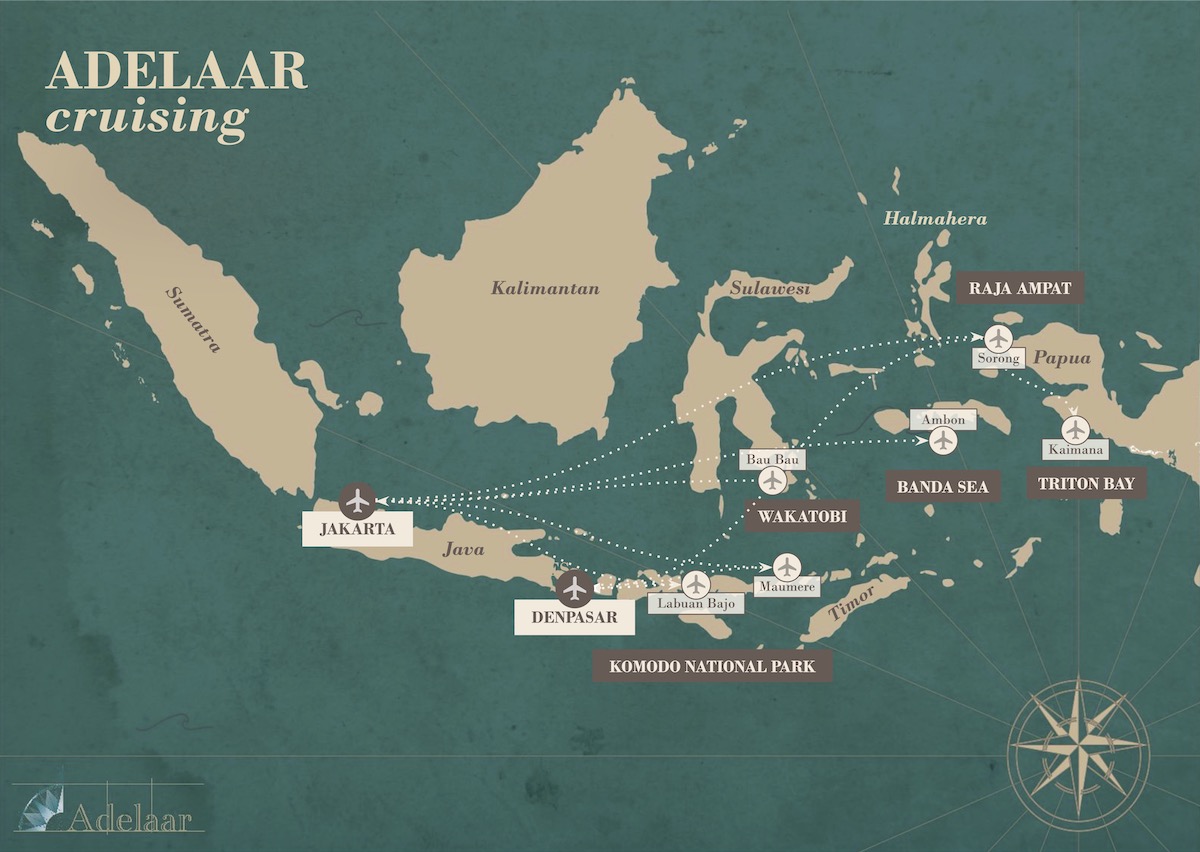
- Late November – Early April: Raja Ampat Archipelago and Triton Bay
- April – Mid May: Crossing to Komodo via the Banda Sea, with stops in Ambon, Wakatobi, Alor, and other destinations
- May – September: Bali, Komodo and Sumbawa season.
- Late September – November: Return crossing through the Banda Sea back to Raja Ampat, in reverse order
For those looking to do a longer trip, one excellent option is to combine a Raja Ampat itinerary in late March with the Banda Sea crossing in April, or the reverse, in the later part of the year.
Liveaboard Diving in Misool, Raja Ampat
Raja Ampat Overview
Our liveaboard journey began with four days of cruising and diving in South Raja Ampat, around Misool — one of the four main islands that make up the Raja Ampat archipelago, which translates to “Four Kings.”
Map of a different itinerary — Total Raja Ampat — showing the archipelago’s four main islands: Waigeo, Batanta, Salawati, and Misool.
Misool is a world-class scuba diving destination in its own right, renowned for its pristine coral reefs — soft, hard, and black corals alike — kaleidoscopic fish life, manta cleaning stations, and, as with the rest of Raja Ampat, some of the highest marine biodiversity on the planet.
Raja Ampat’s best dive season typically runs from September to May, avoiding the mid-year monsoon season that mostly affects the south. Most liveaboards leave the region by April, crossing westward through the Banda Sea toward Komodo and other destinations.
Adelaar, however, remained just a little longer — and the reward was absolute serenity. We didn’t encounter a single diver from another boat during any of our dives in Misool.
Day 1: Check Dive at Pulau Matan
On the day of our arrival, after settling in and getting acquainted with the boat, we did a short check dive at Pulau Matan.
With the strong currents often encountered while scuba diving in Raja Ampat and the Banda Sea, our guides asked us to refresh our DSMB deployment skills — a welcome reminder, as none of the five of us onboard had practiced it in some time. It was a calm, easy dive — ideal for breaking in our gear, fine-tuning our setup, and easing into the days ahead.
Day 2: Daram Island, East of Misool, Raja Ampat
On the second day of our cruise, we explored the eastern edge of Misool, diving three vibrant sites around Daram Island.
We began at Warna Berwarna, where we were greeted by a school of bumphead parrotfish as soon as we descended. Swarms of fusiliers and unicornfish moved across the reef, while a wobbegong shark lounged under a coral ledge. We also spotted reef sharks and an array of macro life, including coral bandit shrimp, translucent shrimp, and well-camouflaged scorpionfish.
Our second dive at Andiamo was the highlight of the day — a perfect example of the teeming fish life and vivid reefscapes Raja Ampat is known for. The reef was rich with sea fans and black coral, and the water column pulsed with life: schooling trevally, anthias, fusiliers, Moorish idols, redtooth triggerfish, batfish, barracuda, golden snapper, and even a large school of smalltooth emperor fish in its mottled phase. The schools were truly out in force.
We ended the day at Candy Store, a site named for the overwhelming abundance of marine life — the kind that makes you feel like a kid in, well, a candy store. The action continued with swirling platax, snappers, anthias, and fusiliers.
Conditions throughout the day were calm and surprisingly current-free — a rare luxury when it comes to scuba diving in Raja Ampat — allowing us to slow down and take in the full spectacle of the reef.
A night dive was offered, but my husband and I opted out — the day had already delivered more than enough wow moments!
Day 3: Central Misool, Raja Ampat
Diving around Misool Island — aside from the Daram area we explored the previous day — is largely managed by the private Misool Eco Resort. Each site requires approval, including specific time slots, to ensure a limited number of divers visit each location. Fortunately, with few liveaboards in the area, the Adelaar team secured access to some of Misool’s best.
We started strong with a morning dive at Magic Mountain, one of the region’s most iconic sites. On a calm, clear day, the top of the seamount is visible just six meters from the surface, with life unfolding between 5 and 25 meters — no need to go deep.
The reef was teeming with life: golden snapper, schooling jacks, giant and bluefin trevally, barracuda, Spanish mackerel, anthias, fusiliers, gobies, blennies, a turtle, a massive Napoleon wrasse, and blacktip, whitetip, and grey reef sharks. Near the cleaning station at five meters, a single reef manta ray circled us — calm and unhurried. The lack of current meant fewer mantas that day, but spending time up close with this striking individual made for a truly magical encounter.
Our second dive took us to Nudi Rock, named after the nudibranch-shaped island above. This site is beloved for its soft corals, flowing sea fans, and countless hiding spots for critters — vibrant and full of texture.
For the third dive, we explored yet another favorite of mine, Boo Windows, known for its two iconic swim-throughs that pierce the reef like open windows. Among the many highlights: bumphead parrotfish, reef sharks — including baby blacktips — and one of the most sought-after sightings in Raja Ampat: a wobbegong shark, casually sprawled across a head of cabbage coral.
A night dive was offered at Dunia Kecil, which we regretfully sat out. The other divers surfaced with huge grins — they’d spotted a rare blue-ringed octopus!
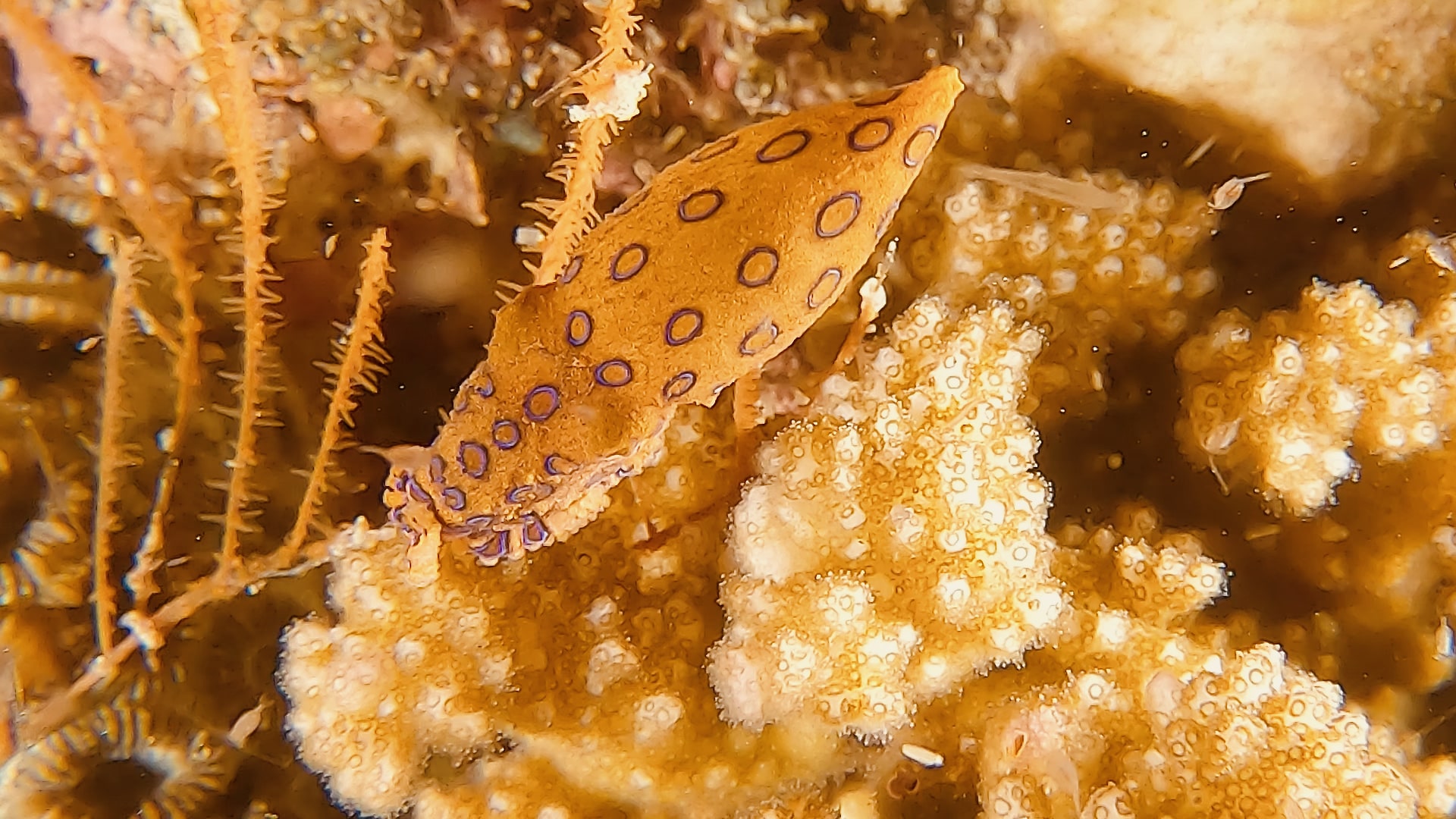
Credit: Brenda Aly
Day 4: Central Misool, Raja Ampat
Our fourth day was spent diving several stunning sites in the central Misool area, beginning with the iconic Four Kings. Named after the four submerged pinnacles that make up the site, this world-renowned dive spot is often known for pelagic action on current-rich days. While conditions were calm and current-free during our dive — and thus quieter on the big fish front — the site was still captivating.
The visibility was excellent, and the seascape alone made the dive worthwhile: snappers, redtooth triggerfish, several curious turtles, and the always charming juvenile emperor angelfish. We also spotted pygmy seahorses nestled in sea fans, along with an array of vibrant nudibranchs.
The site also features a shallower plateau, ideal for divers preferring to avoid depth without missing out on the scenery.
Our second dive was at Barracuda Rock, known for consistent sightings of schooling trevally and barracuda.
We were offered the option to visit the famed Love Lagoon — known for its heart-shaped viewpoint — but unanimously chose to do a third dive instead.
We wrapped up the day at Gorgonian Passage, a stunning channel that runs north to south between the islands of Waylibatan and Walib. True to its name, the walls were adorned with massive sea fans, and the dive ended in a spectacular coral garden teeming with reef fish and macro life — a beautiful finale to our time in Misool.
No night dive was scheduled, as we began our 16-hour overnight navigation at 4:00 p.m. It was one of the calmest long crossings I’ve ever experienced on a liveaboard — steady, silent, and remarkably smooth.
Liveaboard Diving in the Banda Sea
Banda Archipelago Overview
The Banda Sea and the Banda Islands scattered around it are chock-full of interesting facts and stories.
The Banda Sea is vast, remote, and steeped in geological and ecological significance. It holds the distinction of being the world’s deepest non-ocean forearc basin, with its deepest point — the Weber Deep — plunging to around 7,200 meters (23,600 feet).
Serene and quiet, with lush, uninhabited islands scattered across the horizon.
Its isolation has helped preserve some of Indonesia’s healthiest reefs and clearest waters — with visibility that is, arguably, the best in the country. The Banda Sea is also believed to host one of the world’s largest known aggregations of endangered Napoleon wrasse, along with an impressive range of pelagic species. From September to November, divers may even encounter schooling hammerhead sharks — a major seasonal draw for liveaboards.
April to May, by contrast, seems to offer calmer seas and smoother crossings — as was the case during our trip. Having previously crossed the Banda Sea in October aboard other vessels, I’ve experienced its more volatile moods, where rough swells were the norm. But this time, conditions were remarkably pleasant!
Given its vastness, no Banda Sea liveaboard itinerary is ever quite the same — much depends on the route and the vessel. Adelaar’s steel hull and ocean-crossing pedigree made for an exceptionally smooth crossing.
If you’re interested in seeing more of what the Banda Sea has to offer, consider Adelaar’s “The Banda Sea” Ambon–Ambon itinerary during hammerhead season later in the year. This route includes Serua, known for its schooling hammerheads, and Manuk — an uninhabited volcanic island rising 3,000 meters (9,842 feet) from the seafloor, famed for its sea snakes.
The ten major islands that make up the Banda Islands
Above the surface, the Banda archipelago holds a fascinating history. Once the heart of the global nutmeg trade, these islands shaped colonial ambitions for centuries. We toured Banda Neira, one of the main islands — more on that in a later section.
Day 5: Koon Island — Too Many Fish, Banda Sea
Our first day diving in the Banda Sea was spent off Koon Island, exploring the expansive dive site aptly named Too Many Fish — three times, from three different entry points.
From the very first descent, we were met with the Banda Sea’s signature: crystal-clear visibility, easily exceeding 35 meters (115 feet). Each dive revealed a new dimension of the site’s scale and diversity.
The first was a calm, current-free dive down to 35 meters (115 feet), where sea walls draped in gorgonians and soft corals sheltered critters and reef fish. As we ascended, we met a spectacular swirl of schooling barracuda — a dramatic finish to a peaceful start.
Colorful walls teeming with fish life, reef sharks swimming through swarms of small fish, crystal clear visibility — this site had all the elements for an amazing dive
Our second dive brought the site to life even more vividly: an explosion of color and movement. Clouds of anthias, fusiliers, and needlefish mingled with barracuda, jacks, trevally, sweetlips, bumphead parrotfish, and snappers. The sheer density of fish was mesmerizing — like drifting through a kaleidoscope. It was surreal, as if we’d slipped into another reality. True to its name, Too Many Fish did not disappoint.
Barracuda, sweetlips, fusiliers — Too Many Fish truly lived up to its name.
As we neared the end of the dive at around 11 meters (36 feet), one of the guides signaled with his stick, pointing toward a large figure resting on the sandy bottom at about 20 meters (66 feet) — a zebra shark, noticeably larger than any I’d seen before. We swam closer to take in the graceful presence of this striking animal.
This zebra shark looked like it was smiling at us — calm, curious, and completely unbothered by our presence.
The mild current also gave us time to slow down and observe the smaller treasures as we ascended for our safety stop: a mantis shrimp emerged from its den, flanked by cleaner shrimp and the playful movements of sexy shrimp — also known as squat anemone shrimp — known for their signature “tail dance”.
By the third dive, the current picked up midway. Rather than fight it, we drifted — letting the water carry us past layers of marine life going about their day. It was a simple, fluid moment, and one of my favorites of the trip.
I wouldn’t have minded another day at Too Many Fish, but we ended on a high note. As the sun set, we began the 11-hour crossing toward a new island waiting to be explored.
Day 6: Hatta Island, Banda Sea
Our second day scuba diving in the Banda Sea took us to Hatta Island, one of the ten major islands in the Banda group. Once again, we were greeted with exceptional visibility — the kind of water that glows with clarity from the moment you descend.
Our first dive at Karang Hatta — one of the Banda Sea’s must-visit dive sites — was nothing short of spectacular. We dropped into a school of Napoleon wrasse, followed by barracuda and thousands of bar jacks, their electric-blue stripes flickering around us like underwater lightning. Towering barrel sponges, easily the size of a person, anchored the scene.
Schooling barracuda, jacks, and trevally were a constant presence on our Banda Sea dives.
We returned to Karang Hatta for the second dive. Within minutes, a school of blackfin barracuda appeared, followed by yellowfin barracuda and a lone dogtooth tuna. Rainbow runners streaked past, along with bluestriped jacks and a cruising giant trevally. Toward the safety stop, we spotted a few nudibranchs crawling along an old fishing net — which we gently removed and secured.
Halfway through the dive, I was drifting comfortably in the blue at around 20 meters (66 feet) when I heard the telltale clang of my husband’s pointer on his tank. From 11–15 meters (36–49 feet), he was calling us toward the pinnacle.
There, just below the surface, a massive school of bumphead parrotfish was feeding on the coral — close, powerful, and completely unbothered by our presence. The current was ripping, and we had to grip onto the rocky reef to hold position, staying with them for a full ten minutes as they fed undisturbed. It was a struggle well worth the effort — easily one of the most memorable moments of the trip.
Some of the parrotfish were really massive — measuring more than 1 meter (3.2 feet) in length
As we surfaced — smiling and exhilarated — another surprise awaited. Just after lunch, one of the guests spotted a massive pod of dolphins in the distance. Four of us jumped into a tender to get closer, hoping for a swim. We were right to try. Several separate pods had gathered — likely thousands of dolphins in total — and they stayed with us.
We slid into the water with our snorkels, holding onto the tender as it moved slowly. Beneath the surface, dolphins swam, played, and darted around us — a physical effort, but deeply rewarding.
Credit: Brenda Aly
The third dive at Hatta Point was shallower and calmer, offering a slower pace and time to spot critters nestled in sea fans, tucked under rocks, and hiding in holes.
After a long day of drifting in currents and dolphin-chasing, my husband and I opted out of the night dive at Ulu Weru — choosing instead to enjoy an early dinner while replaying what had easily been one of the most memorable days of the trip.
Day 7: Banda Neira & Surrounding Islands
We began the day diving Batu Kapal, or “Ship Rock” — a dramatic site off Banda Neira with three pinnacles, a rock formation, and a strong yet manageable current. The reef buzzed with schooling redtooth triggerfish, butterflyfish, and black surgeonfish. Scorpionfish and stonefish lay camouflaged on the rocks, while honeycomb morays peered from crevices — a satisfying start to another day of diving in the Banda Sea.
The second dive at Pohon Miring took us through a vibrant swim-through framed by colorful sea fans, opening onto a pristine reef where a turtle glided peacefully overhead.
A vibrant swim-through, a gliding turtle, and a camouflaged peacock flounder kept us completely entertained on our second dive.
Moray eels were abundant — including honeycomb moray eels — and we were lucky to witness a barrel sponge spawning at around 40 meters (131 feet). During our safety stop, we spotted a peacock flounder well-camouflaged atop a sandy rock, as well as with a couple of leaf fish and a curious octopus.
There was no afternoon dive as we all joined the land excursion on Banda Neira, visiting the island’s historic old town, nutmeg plantations, and colonial forts — more on that below.
For sunset, we were offered a mandarin fish dive at a reliable site to witness their delicate mating rituals. Having done it a couple of times on past trips, my husband and I opted to sit this one out and enjoy a cold beer at sunset instead.
Day 7: Banda Neira Land Excursion: Nutmeg Plantation, Colonial Forts & More
After our third dive, we headed ashore for a guided tour of Banda Neira, a small island of around 7,000 residents, yet rich in history shaped by the nutmeg trade.
We began at Cilu Bintang, a charming colonial-style hotel where we met our guide, then walked to Rumah Budaya, the island’s cultural history museum. Inside were well-preserved artifacts dating as far back as the 14th century — old ceramics, traditional nutmeg harvesting tools, a model of a sailing ship reminiscent of a Viking longboat, and original paintings chronicling the island’s dramatic and often violent colonial past.
Banda Neira was once the world’s only source of nutmeg — a spice so coveted that it became a symbol of wealth and power in Europe. Our guide walked us through the island’s darker chapters, including the Banda massacre of 1621, when over 2,800 islanders were killed and 1,700 enslaved under orders from Dutch East India Company governor Jan Pieterszoon Coen.
He also spoke about the famous moment when Rhun Island was traded to the British in exchange for New Amsterdam, present-day Manhattan, and the island’s Japanese occupation during the last three years of World War II.
The tour continued at a still-active Protestant church, used by the island’s small Christian community (roughly 10% of the population), followed by a tour of a working nutmeg and cinnamon plantation, where we learned about planting, harvesting, and processing the spices. Here, we could sample and purchase local spices — including fresh cinnamon, nutmeg, and a nutmeg jam I instantly fell in love with.
Our guide passionately explaining the process of cultivating, harvesting, and processing cinnamon and nutmeg.
We then visited the ruins of Fort Nassau, originally built by the Portuguese and later expanded by the Dutch. Largely damaged only the walls of and two bastions remained at Four Nassau. The empty field inside now becomes a hotspot for local kids to play soccer.
The next fort we visited, Fort Belgica, was completed in 1673. Remarkably well-preserved, the fort offered sweeping views over the harbor, nearby islands, and surrounding sea — a beautiful spot to wrap up the visit.
We concluded the tour back at the hotel where we had started, welcomed with spice-infused local treats and tea. I couldn’t resist their display of handcrafted jewelry at their gift shop and left with a beautiful set — pearl earrings, a matching necklace, and a shell ring. A sweet end to an afternoon that brought both cultural richness and a few unexpected treasures.
Days 8–10: Rhun, Suanggi & Nusalaut — Diving the Western Banda Sea
We spent the next three days exploring the western edge of the Banda Islands, diving remote sites around Rhun Island, Suanggi, and Nusalaut — each offering something distinct, challenging, and deeply rewarding.
On Day 8, we dived around historic Rhun Island — the same island traded by the British for present-day Manhattan, as detailed earlier in our Banda Neira land excursion. Dive sites included Tanjung Noret, Kampung Rhun, Nailaka, and Ulu Weru (coincidentally sharing the same name as a site at Hatta Island).
Tanjung Noret was a standout: a beautiful, relaxed wall dive with excellent visibility and rich pelagic action. We saw multiple schools of barracuda — both blackfin and great barracuda — dogtooth tuna, and rainbow runners cruising the blue. Down deeper, we were lucky to witness barrel sponge spawning, a rare and otherworldly sight.
The hazy effect in the second photo was caused by sponge spawning nearby.
On Day 9, we headed to Suanggi, known for its hammerhead sightings, especially later in the year. Despite it being April — outside peak season — we took our chances and kicked off with a negative entry at Suanggi Pinnacle, descending directly to 37 meters (121 feet).
Conditions were challenging: currents pushed in from all directions. But the effort paid off — our group caught a glimpse of a lone hammerhead shark — a rare April sighting in the Banda Sea — and a couple of reef sharks.
The second and third dives at Suanggi Slope and Suanggi Wall were shallower and calmer, though still dynamic. Upcurrents, downcurrents, and surges required sharp buoyancy control and comfort in the water. Our guides were excellent — attentive, composed, and kept the group tightly together in case anyone ran into trouble.
In the shallows, we were treated to vibrant reef life: juvenile sea snakes, green turtles, countless moray eels, and schooling jacks. Indian triggerfish, redtooth triggerfish, Napoleon wrasse, and a long list of reef critters — from porcelain crabs and anemonefish to gobies, scorpionfish, and blennies — made it a lively, satisfying day beneath the surface.
On Day 10 we headed to Nusalaut Island where we started our day of diving at Hammerhead Shark Reef, another known aggregation site. Since it was out of season, we chose to stay shallower, descending no more than 20–25 meters (66–82 feet) and spending most of our time in the warm, clear water between 10–20 meters (33–66 feet). The reef itself was lush and colorful, teeming with small fish and critters — and the visibility, once again, was excellent.
I chose to sit out the remaining two dives at Ameth and Pombo — my body signaling the need for a pause after nine months without diving prior to this trip. Instead, I spent the afternoon enjoying a slow stretch of yoga at the bow, reading in the breeze from one of the sunbeds, and binge-watching movies in the comfort of our cabin.
Even out of the water, Adelaar was incredibly well-equipped to make non-diving time feel like a luxury in itself!
Liveaboard Diving in Ambon: The Final Days
After an overnight navigation, we arrived at Ambon on the eleventh and final day of diving. A bustling city of around 300,000 and capital of South Maluku, Ambon is also our departure point. Known as one of Indonesia’s top muck diving destinations — often compared to the world-renowned Lembeh in North Sulawesi — our expectations for critter-spotting were high.
Day 11: SS Aquila Wreck and Laha Jetty, Ambon
Our first dive was at SS Aquila (formerly SS Duke of Sparta), a British cargo ship built in 1940 and bombed by a CIA aircraft during a covert mission to destabilize Indonesia’s first president, Sukarno.
Now resting on its side, the wreck measures 134 meters (441 feet) long and 17.6 meters (58 feet) wide. The stern lies at about 15 meters, while the bow drops to over 35 meters (115 feet). Much of the ship remains intact, now cloaked in coral, sponges, and soft growth. Marine life was abundant — from schools of fish weaving through the structure to a variety of macro life like frogfish, nudibranchs, and shrimp.
We ended our last day of diving with two final dives at Laha Jetty, one of Ambon’s most iconic muck sites — and a perfect finale.
The variety was incredible: frogfish, pipefish, seahorses, cuttlefish, jawfish, crocodile fish, painted lobster, dragonets, scorpionfish, razorfish, leaf fish, longhorn cowfish, crabs, nudibranchs, various puffers and the list goes on.
Cuttlefish, stone fish, and an irresistible longhorn cowfish.
Every patch of sand seemed to reveal something new. If you weren’t a fan of muck diving before, this site might just change your mind.
Crocodile fish, scorpionfish, leaf scorpionfish — at Laha, every other “rock” might turn out to be alive. Keep your eyes sharp!
After the third and final dive, everyone surfaced with big smiles and plenty of stories — trading sightings of the many curious, odd-shaped species encountered beneath Laha Jetty. It was unanimously agreed: this was a site well worth returning to.
A porcupine fish giving the longhorn cowfish (pictured earlier) a run for “Cutest of the Day,” a striking painted lobster, and a perfectly posed seahorse.
That evening, just before sunset, we visited the city of Ambon for a quick stop at a local supermarket. The streets were busy and traffic heavy, but I always enjoy catching a glimpse of daily life in different parts of Indonesia — and getting a little land time in (to please both my legs and my fitness tracker).
We returned just in time for our final dinner: a celebratory steak meal (and a perfectly cooked tuna steak for me). It was a lovely, bittersweet ending — grateful for the memories we’d made both above and below the surface, yet reluctant to say goodbye.
Day 12: Disembarkation in Ambon
Our final morning was quiet and relaxed. After an early breakfast at 9 a.m., we packed our bags while the crew had already cleaned and dried all our gear for us — a true luxury.
Since our flight departed earlier than the others’, we said our goodbyes and boarded the tender back to shore, where a car waited to take us on the 30-minute transfer to the airport.
Looking back, it’s hard to believe how much we experienced in just twelve days — from Misool’s vibrant reefs and Banda’s remote coral gardens to Ambon’s intricate muck sites. Every dive offered something unique. Adelaar not only lived up to its reputation, it elevated the entire journey — with seamless service, incredible diving, and the kind of comfort that made each day feel effortless yet special.
It’s the kind of trip that stays with you long after you’ve surfaced, and that one hopes to return to — sooner rather than later.
Planning Your Own Adventure
If this journey through Raja Ampat and the Banda Sea has sparked your curiosity, you can explore upcoming departures and detailed itineraries by visiting the Schedule & Rates page. Simply use the “Itinerary” filter and select “Raja Ampat & Banda Sea” to view real-time availability for this remarkable route.
And while this voyage was truly unforgettable, it’s worth noting that every Adelaar itinerary offers something exceptional — from the vibrant reefs of Komodo to the whale sharks of Saleh Bay. With Adelaar, the journey is always part of the experience.




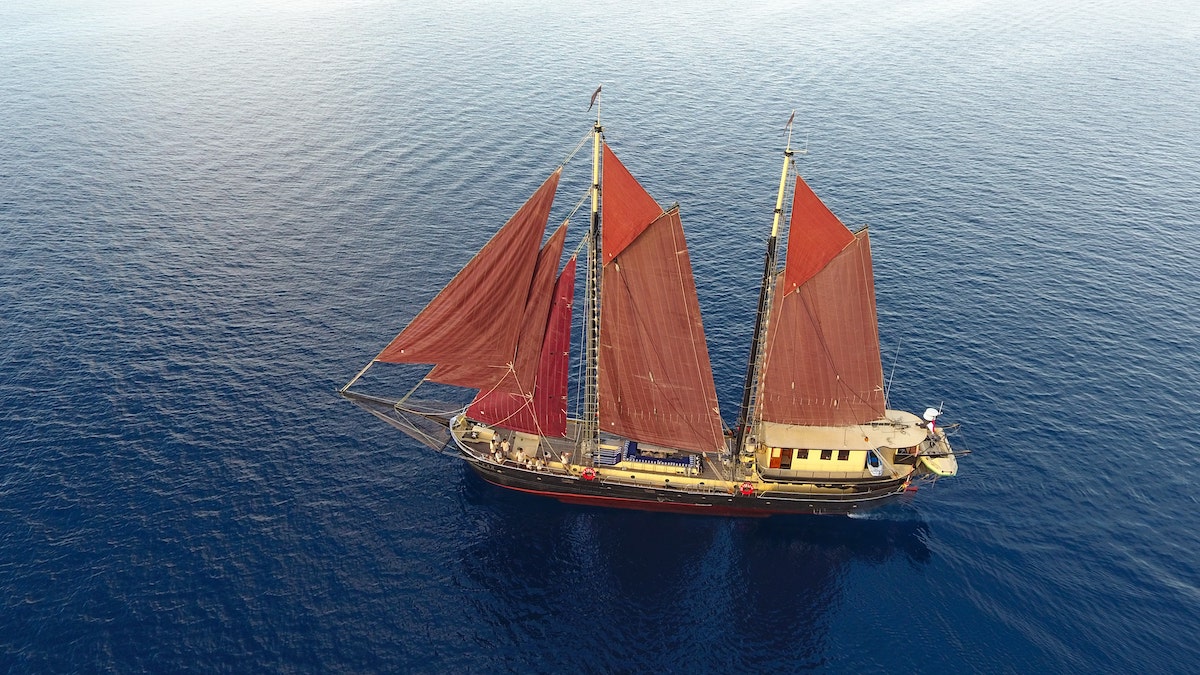
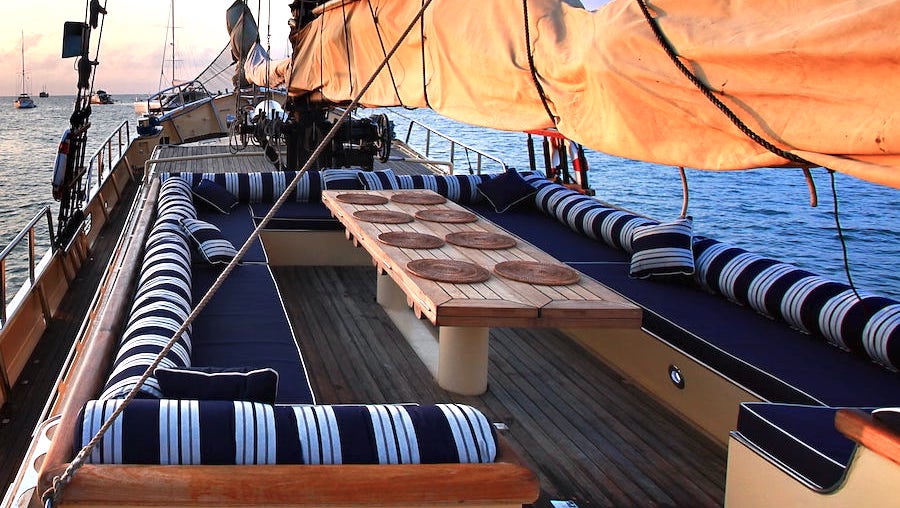
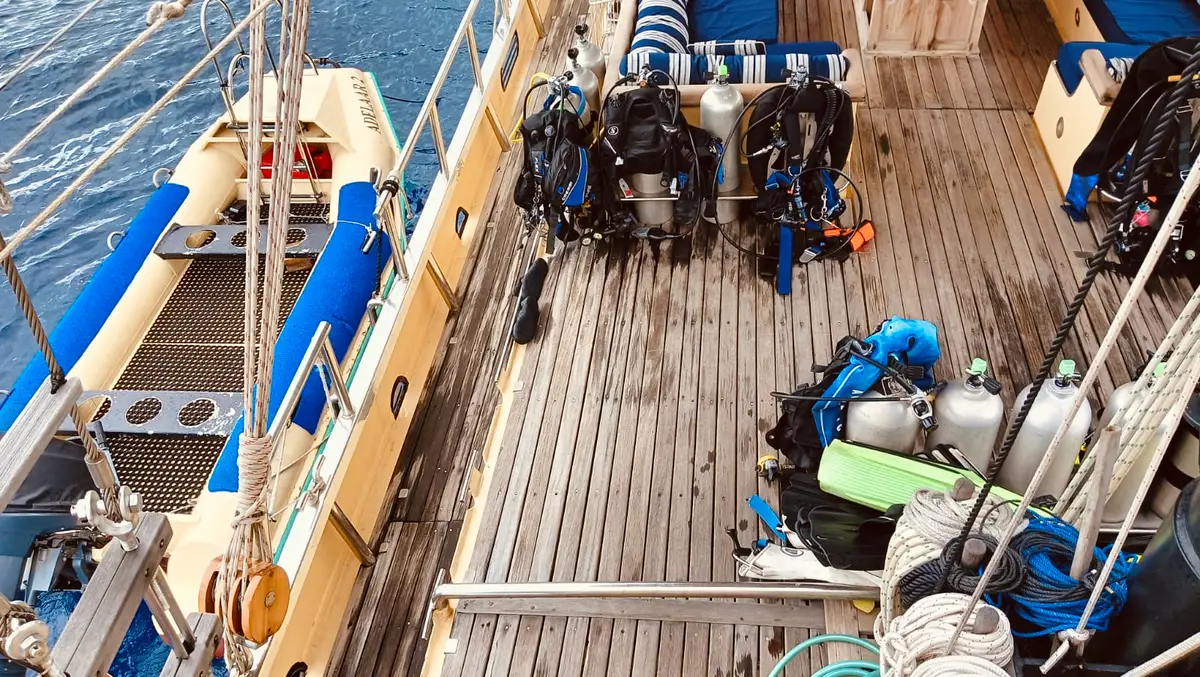
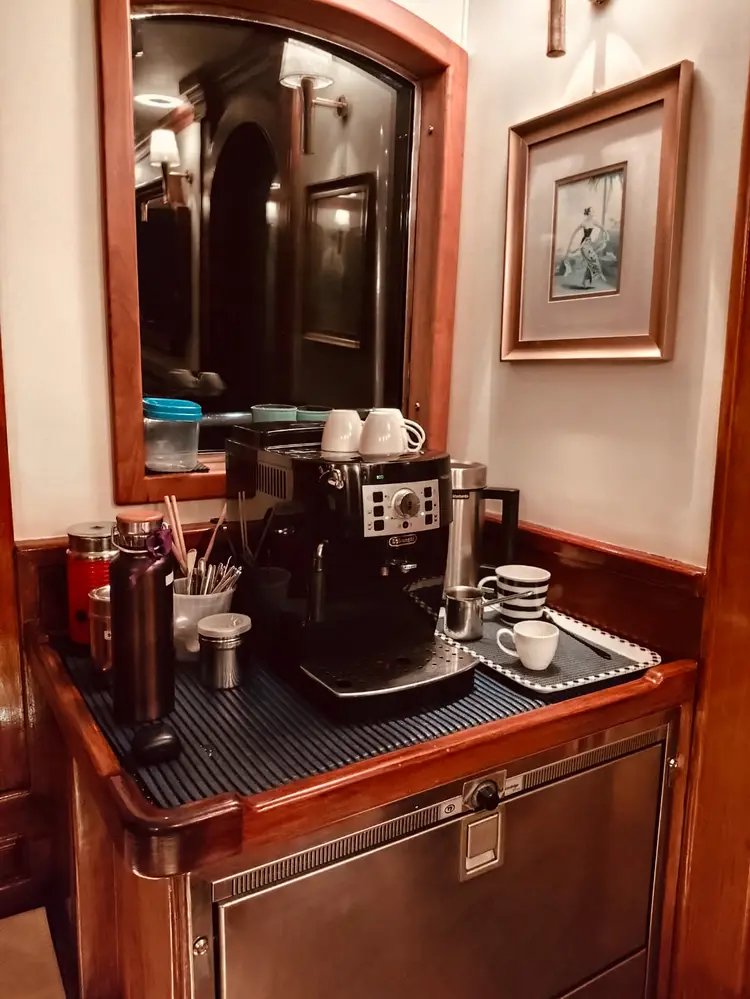 .
. 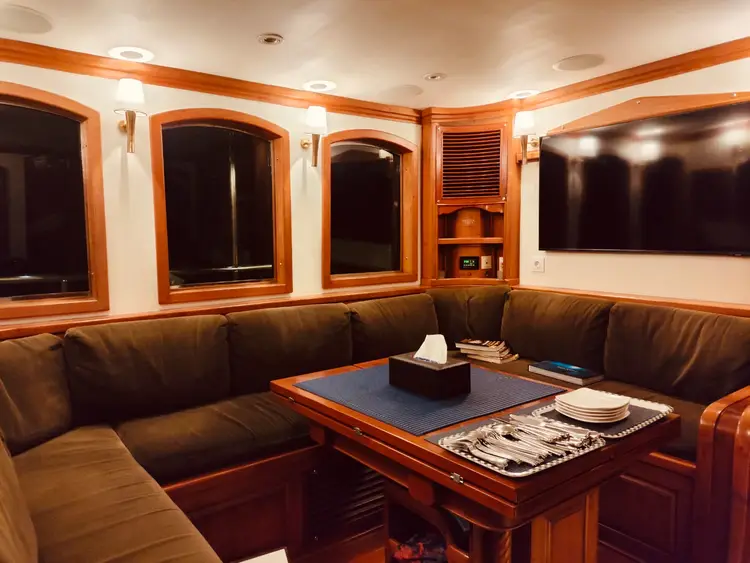
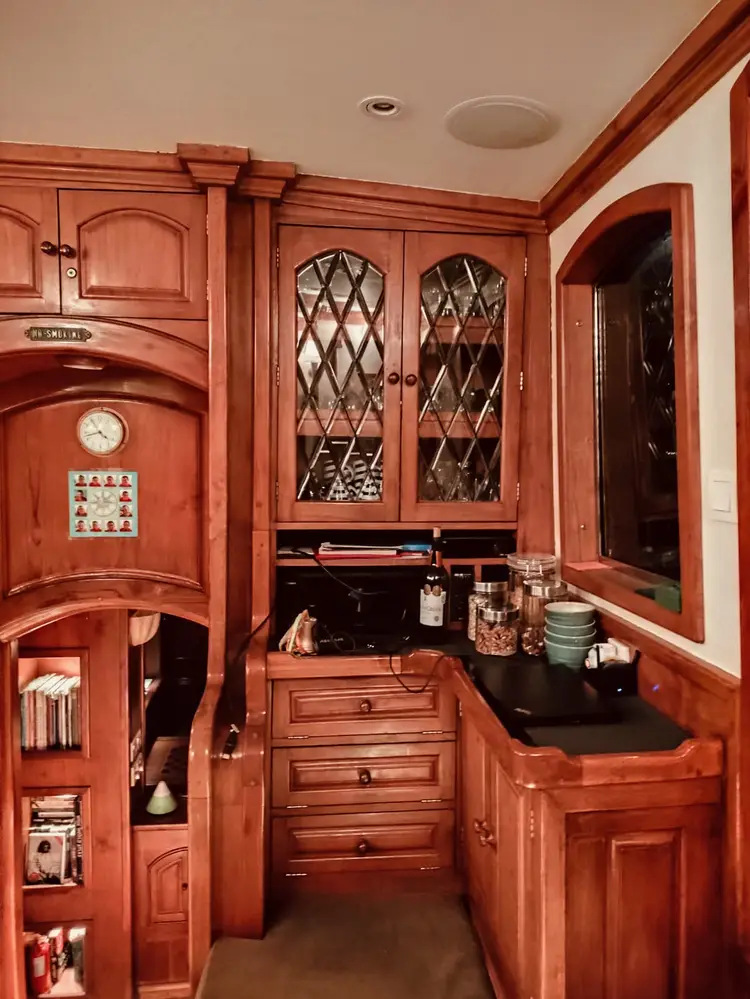
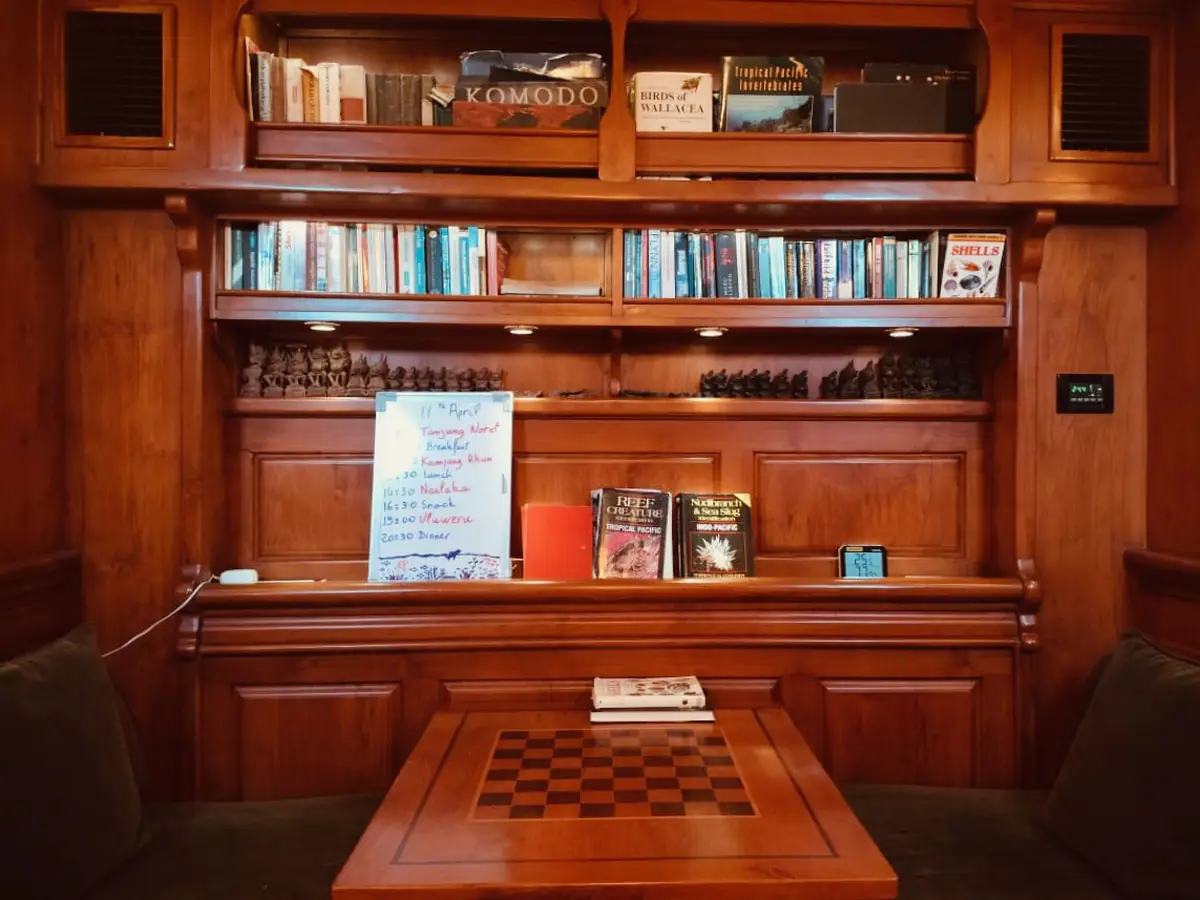
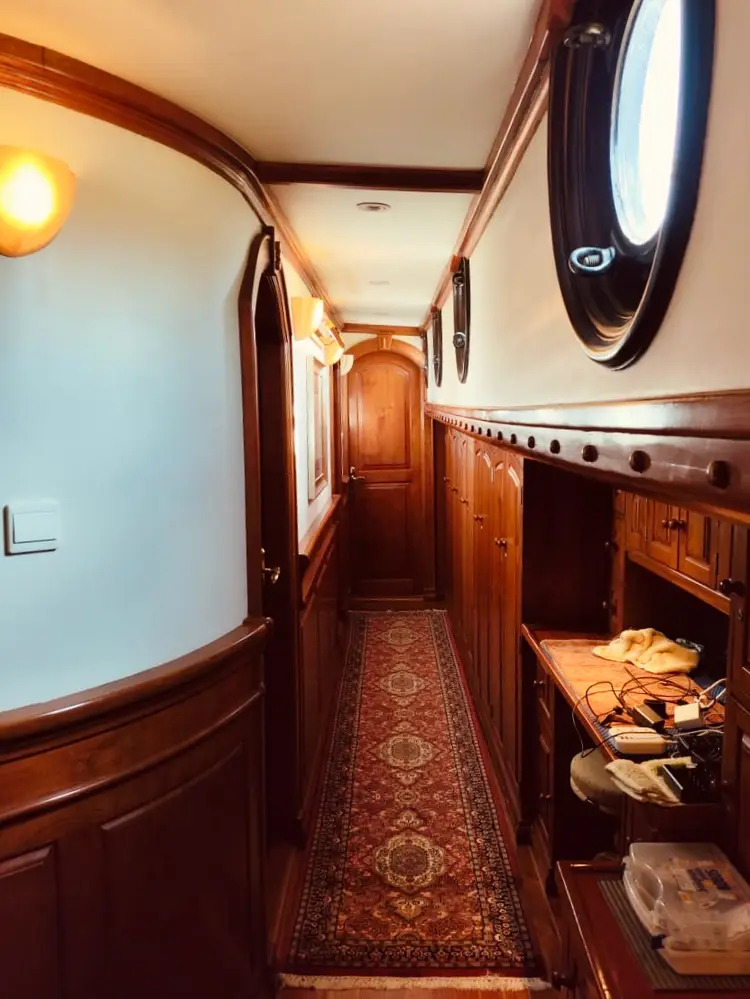
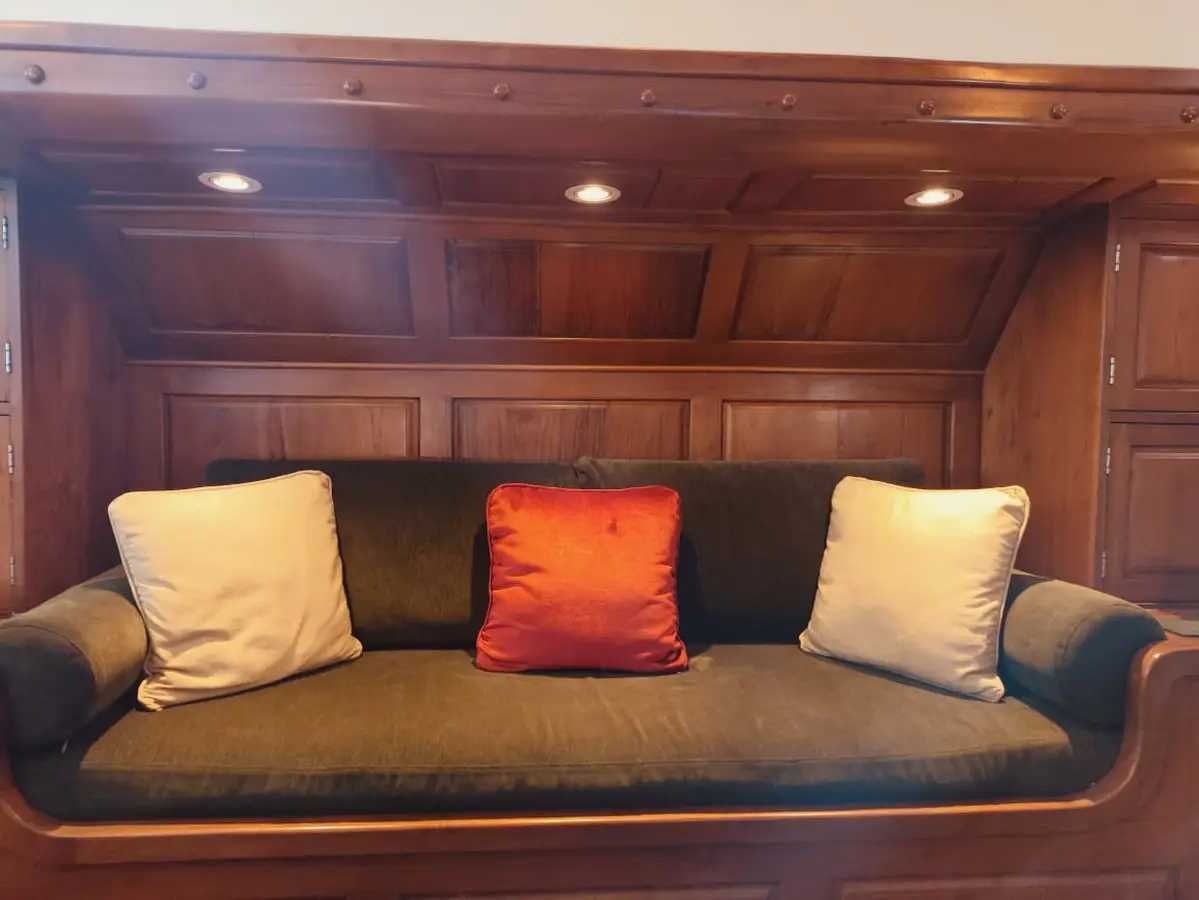
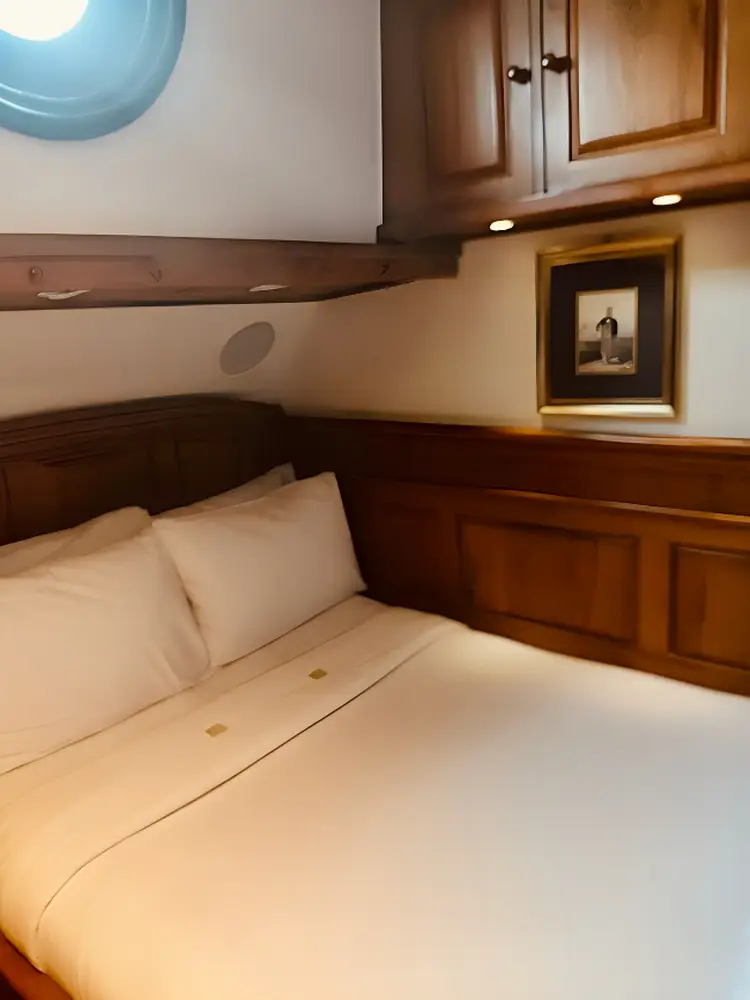 .
. 
